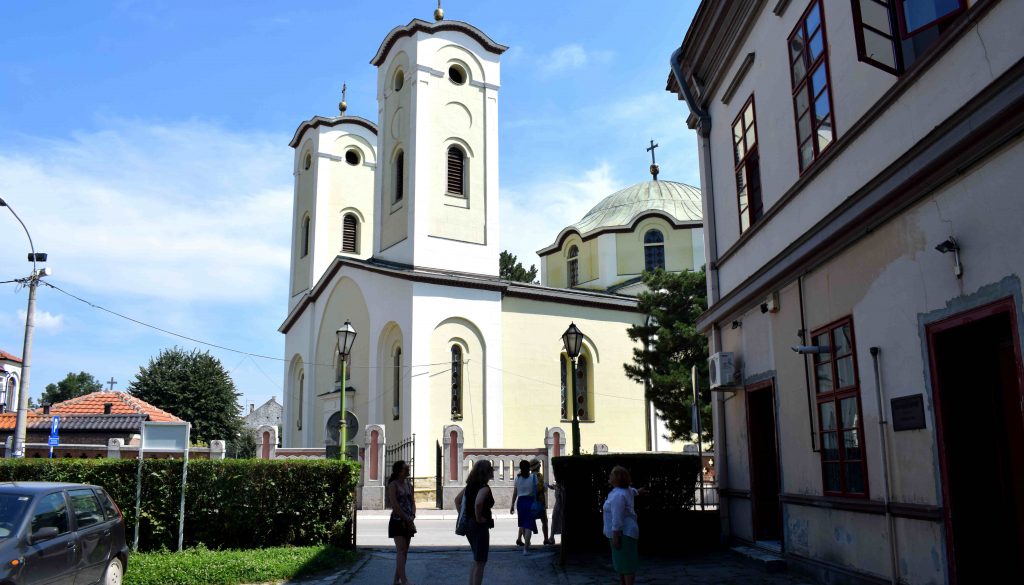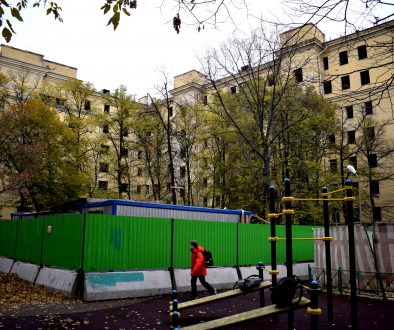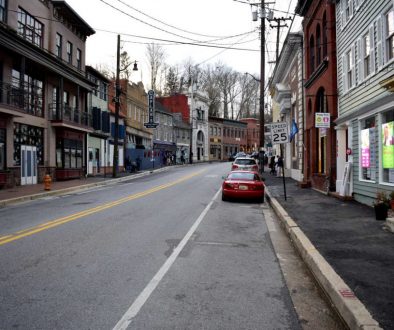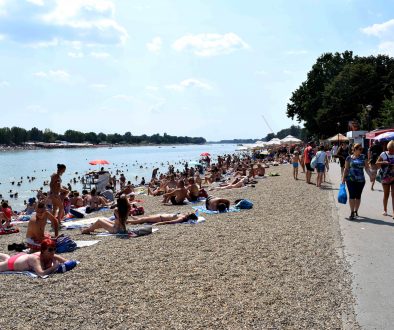Most tourists who visit Serbia visit Belgrade. Some make it up to Novi Sad, others stop by Nis on their way to Turkey and Greece. But few take the time to explore Serbia’s interior, where some of the country’s most beautiful cities are located.
Cacak is one of those cities in Serbia’s interior. Located just a two and a half hour drive from Belgrade, it is situated in the very center of Serbia, in the country’s Sumadija region.
The cities in Sumadija are the most ‘Serbian’ of Serbia’s cities. When this small Balkan nation gained independence from the Ottoman Empire in 1831, it was cities in Sumadija that formed the heart of the Serbian state. These included towns like Kragujevac, Kraljevo, Uzice, Cacak, Valjevo, Arandjevolac and more.
We visited Cacak in early August. With a population of 73,331, it may be small by world standards, but by Balkan standards it is the 8th largest city in Serbia.
It was a hot summer day when we arrived. We stayed in Hotel Beograd, the oldest hotel in Cacak and one of the oldest in Serbia.
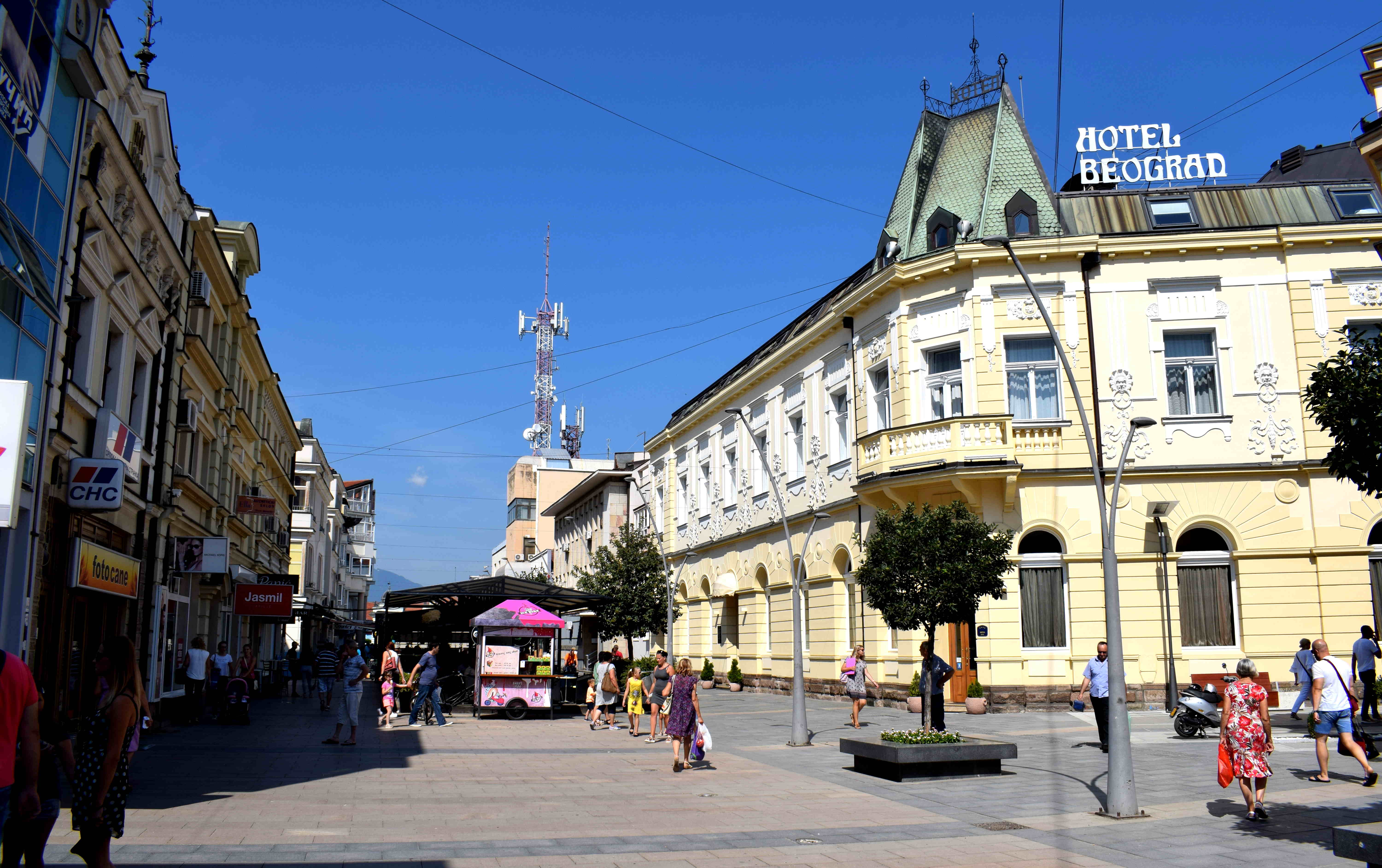 The hotel was built in 1898-1899 and opened on New Year’s Day in 1900. It is located directly on the city’s main pedestrian street, where there are a lot of historical buildings.
The hotel was built in 1898-1899 and opened on New Year’s Day in 1900. It is located directly on the city’s main pedestrian street, where there are a lot of historical buildings.
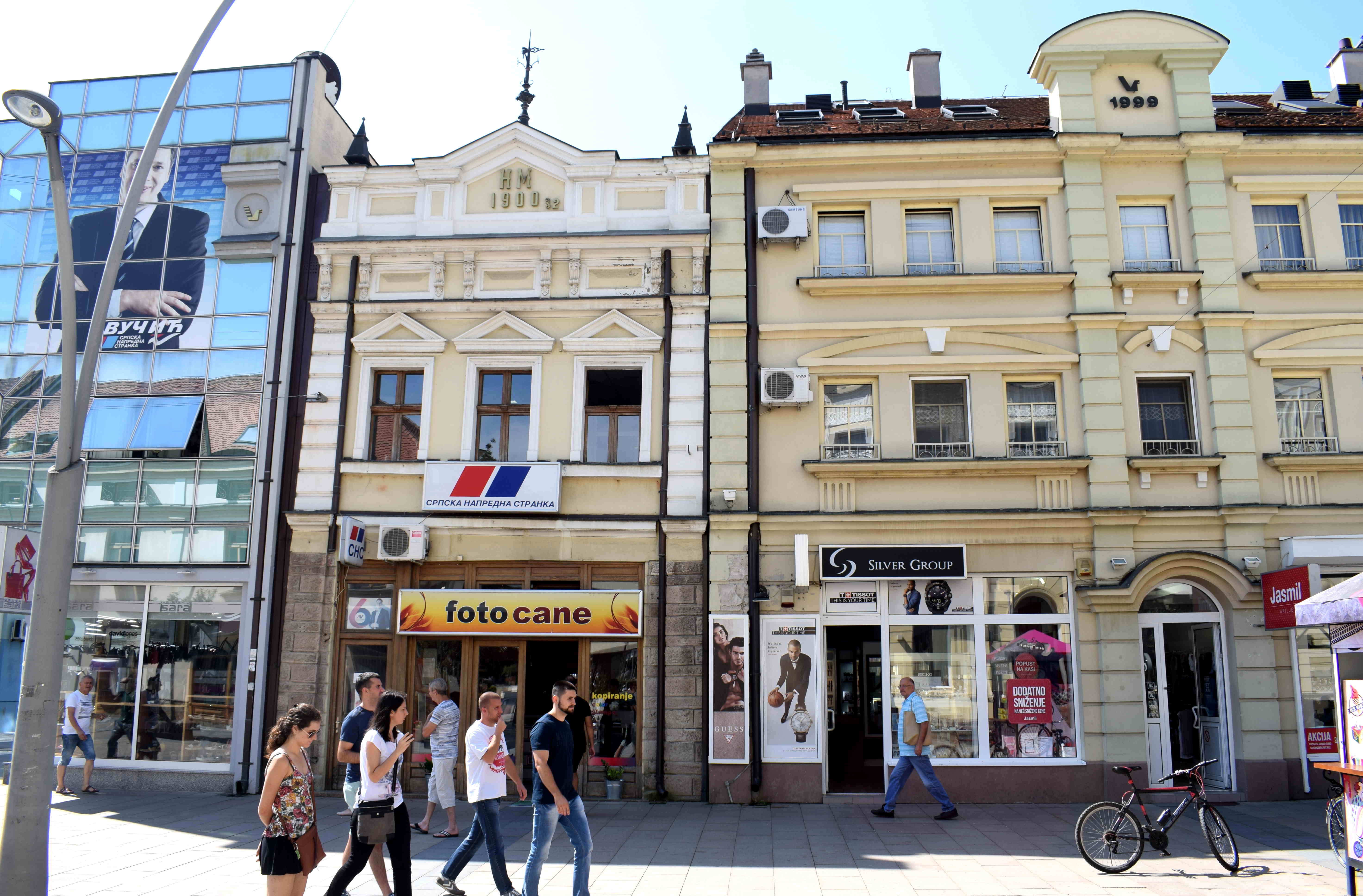 Cacak’s pedestrian street is literally called ‘Gradsko Setaliste’, which translates as ‘the city’s walking area’. The street is a smaller version of Knez Mihailova Street in Belgrade with lots of cafes and restaurants.
Cacak’s pedestrian street is literally called ‘Gradsko Setaliste’, which translates as ‘the city’s walking area’. The street is a smaller version of Knez Mihailova Street in Belgrade with lots of cafes and restaurants.
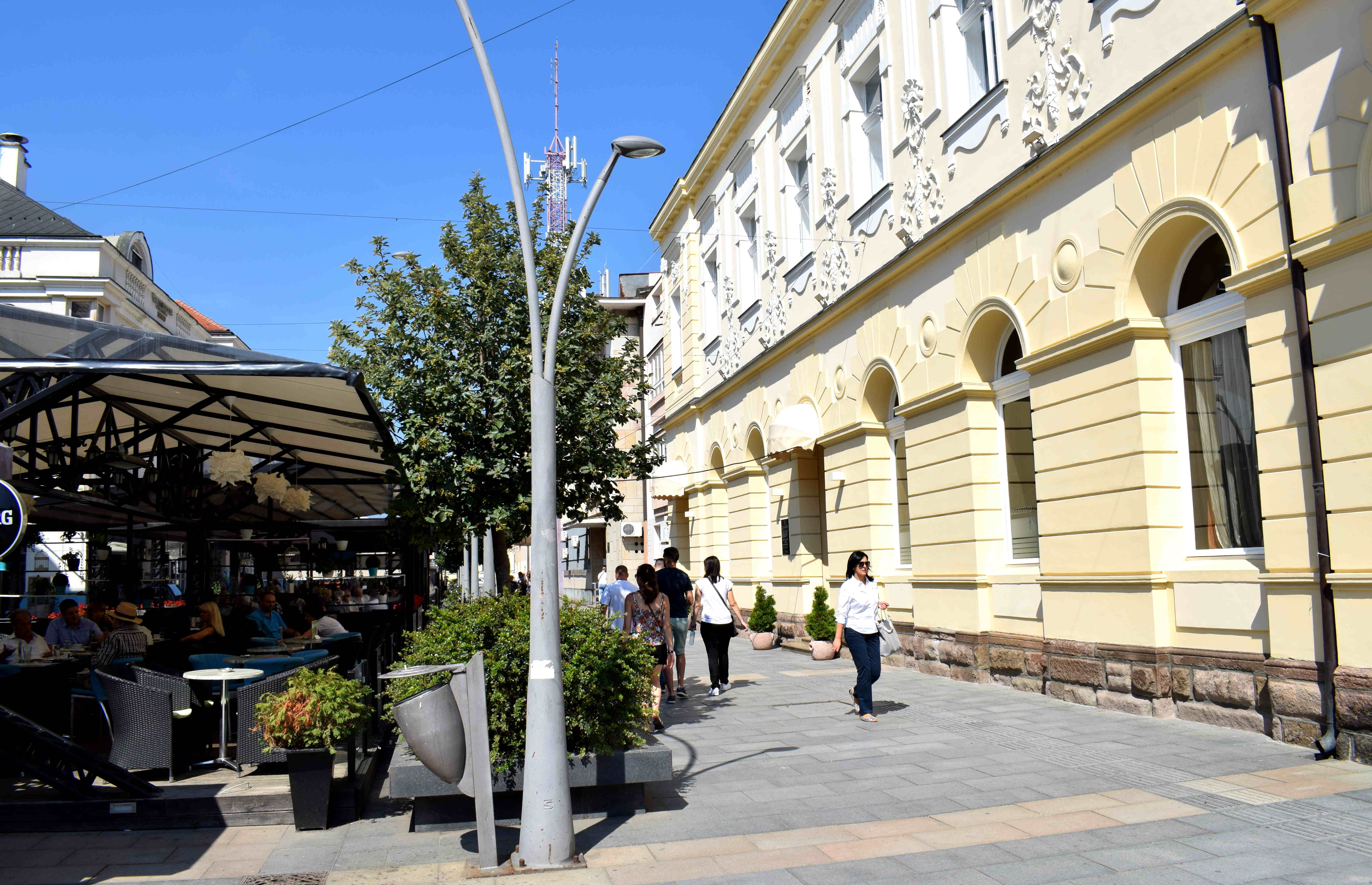 Other small cities in Serbia and the Balkans should learn from Cacak’s pedestrian street. Last summer I visited Uzice, a similarly sized city near Cacak, but which had no central pedestrian street. As a result, Uzice seemed to lack a center, whereas in Cacak the center was vibrant and alive.
Other small cities in Serbia and the Balkans should learn from Cacak’s pedestrian street. Last summer I visited Uzice, a similarly sized city near Cacak, but which had no central pedestrian street. As a result, Uzice seemed to lack a center, whereas in Cacak the center was vibrant and alive.
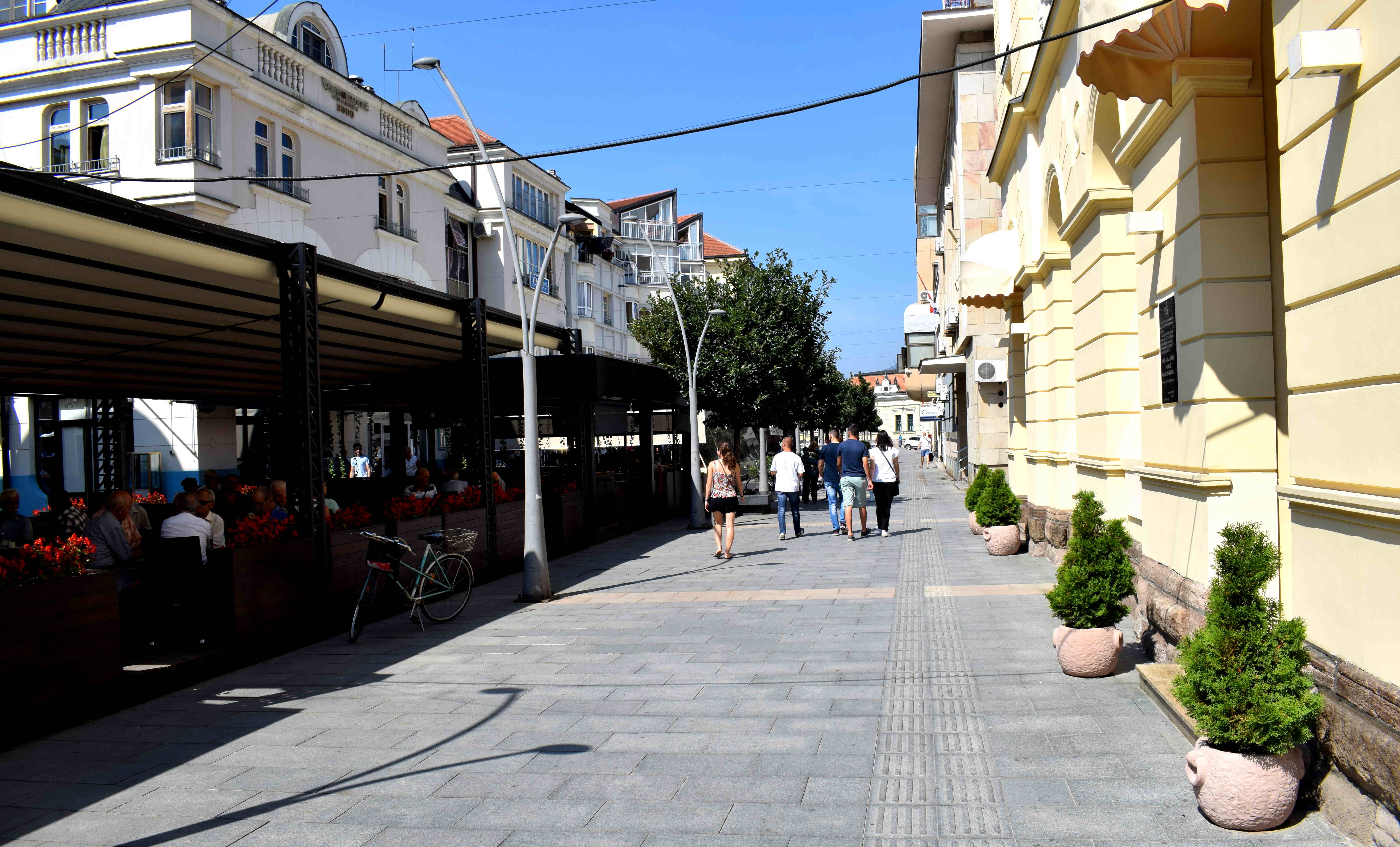 A stray dog, hiding from the sun.
A stray dog, hiding from the sun.
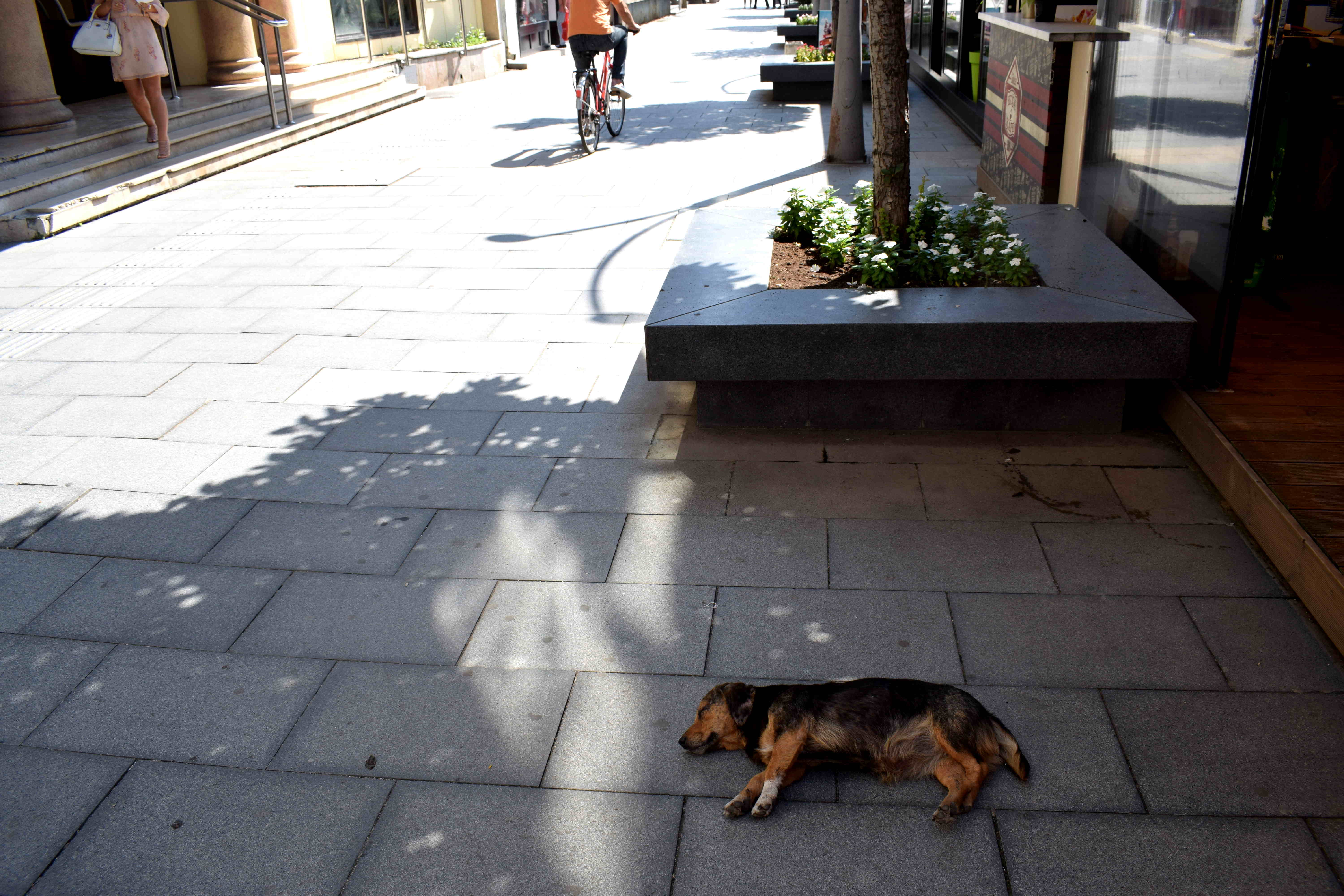 It was very promising to see lots of people cycling in the city. Biking infrastructure is massively underdeveloped in the Balkans. Most cities have no bike lanes. Those that do consider bike lanes to simply involve painting a white line on a sidewalk and calling it a bike lane. Cacak also didn’t have bike lanes, but there were plenty of people riding bikes, which gives me hope things will change in the future.
It was very promising to see lots of people cycling in the city. Biking infrastructure is massively underdeveloped in the Balkans. Most cities have no bike lanes. Those that do consider bike lanes to simply involve painting a white line on a sidewalk and calling it a bike lane. Cacak also didn’t have bike lanes, but there were plenty of people riding bikes, which gives me hope things will change in the future.
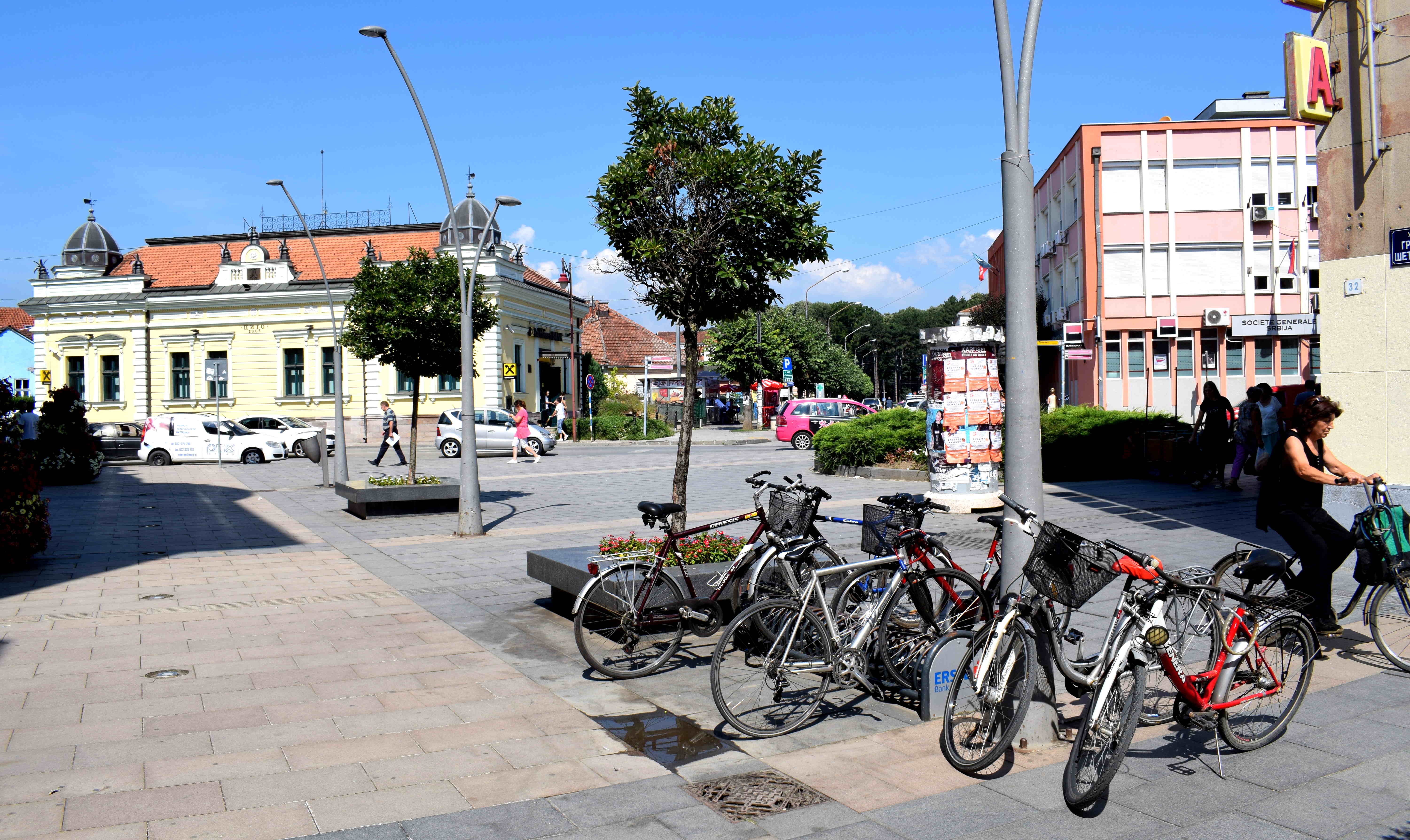 Cacak also had narrow side streets typical of older cities in southern Europe.
Cacak also had narrow side streets typical of older cities in southern Europe.
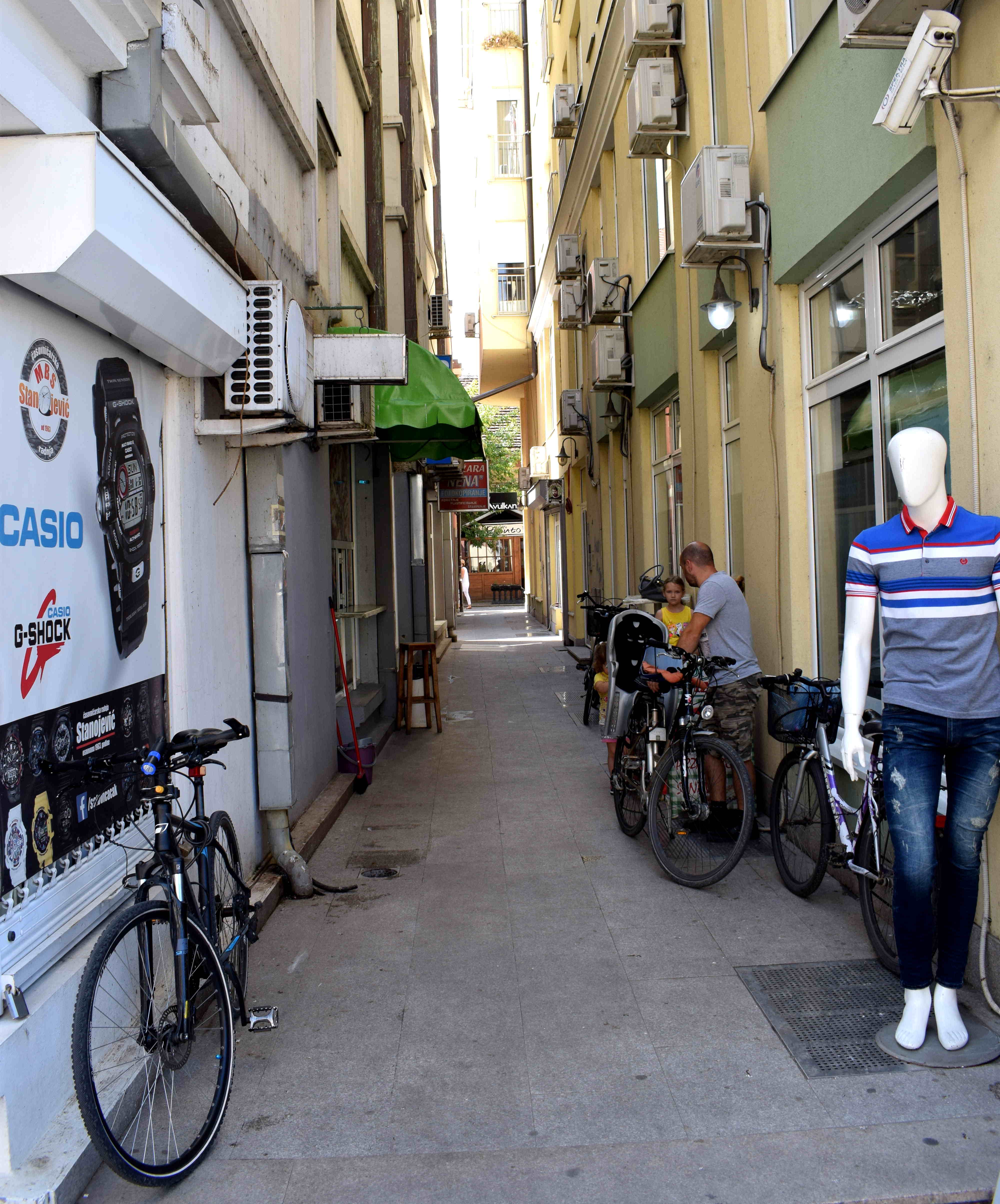
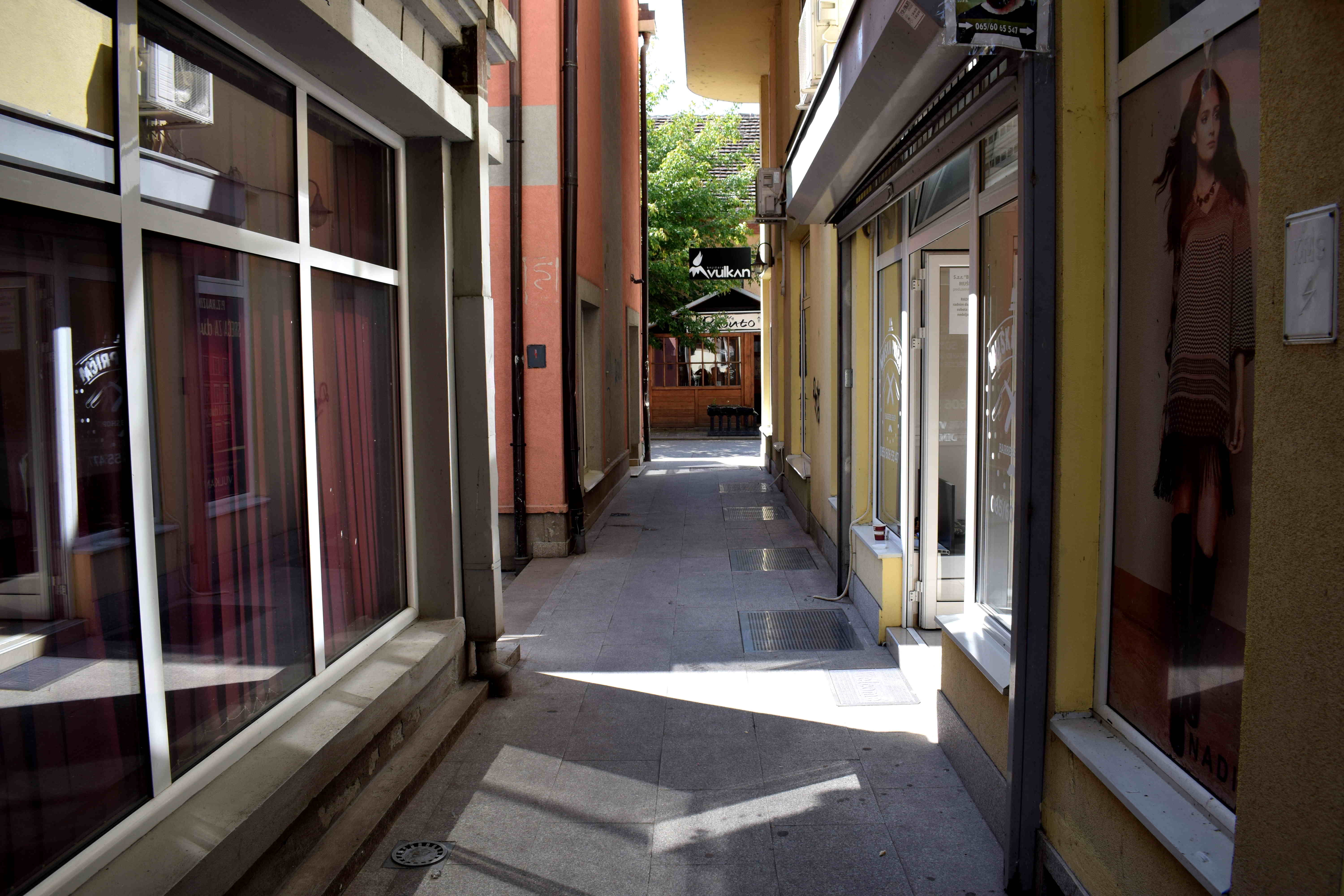 A typical old building Cacak’s center.
A typical old building Cacak’s center.
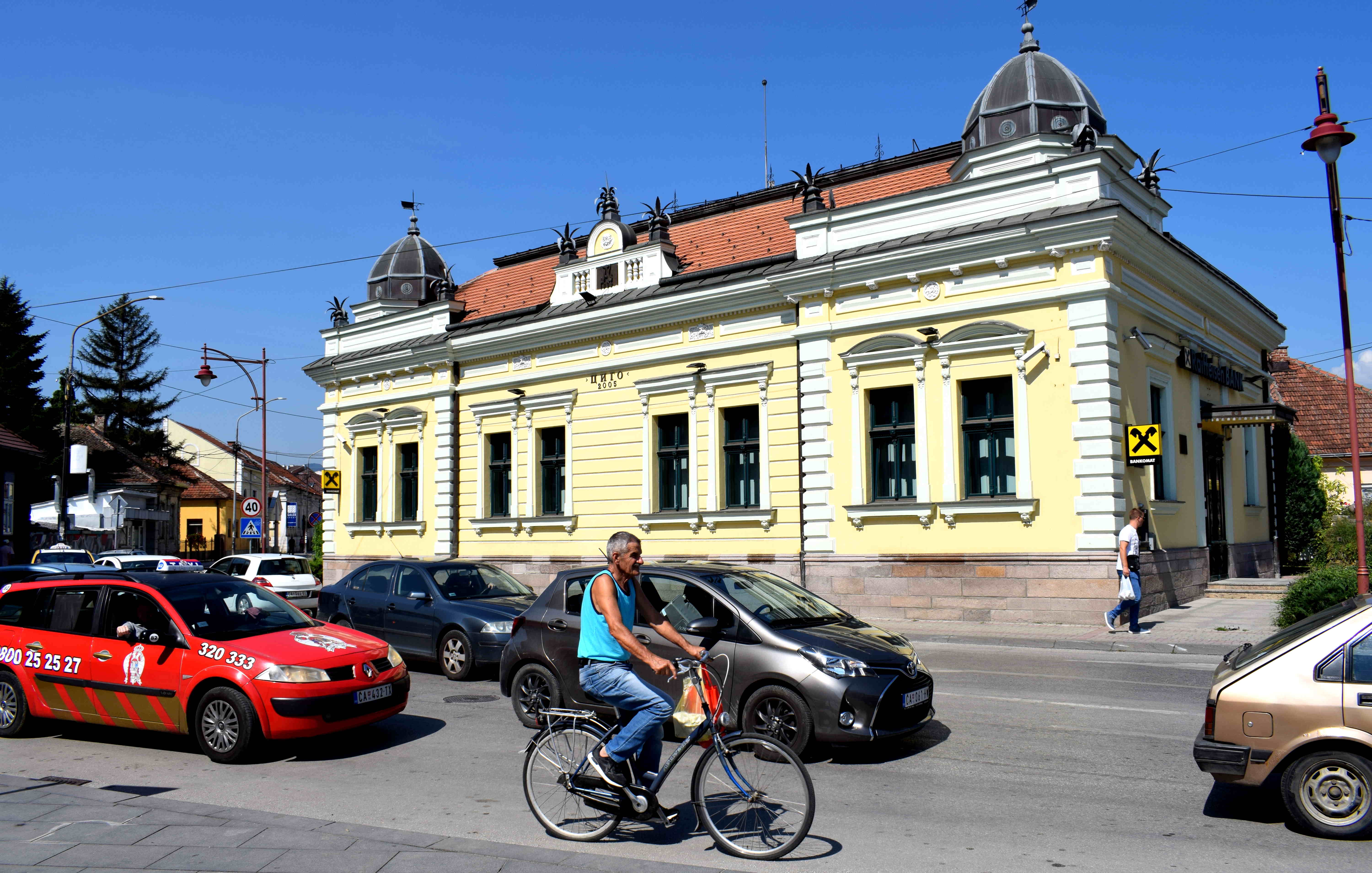 A monument to Vojvoda Stepa, a famous Serbian army commander who fought in Serbia’s wars of independence against the Turks in the 1870’s, the Serbo-Bulgarian War in 1885, the First and Second Balkan Wars in 1912-1913 and World War I. He served as Serbia’s Minister of War from 1908-1920, and died in Cacak on April 29, 1929.
A monument to Vojvoda Stepa, a famous Serbian army commander who fought in Serbia’s wars of independence against the Turks in the 1870’s, the Serbo-Bulgarian War in 1885, the First and Second Balkan Wars in 1912-1913 and World War I. He served as Serbia’s Minister of War from 1908-1920, and died in Cacak on April 29, 1929.
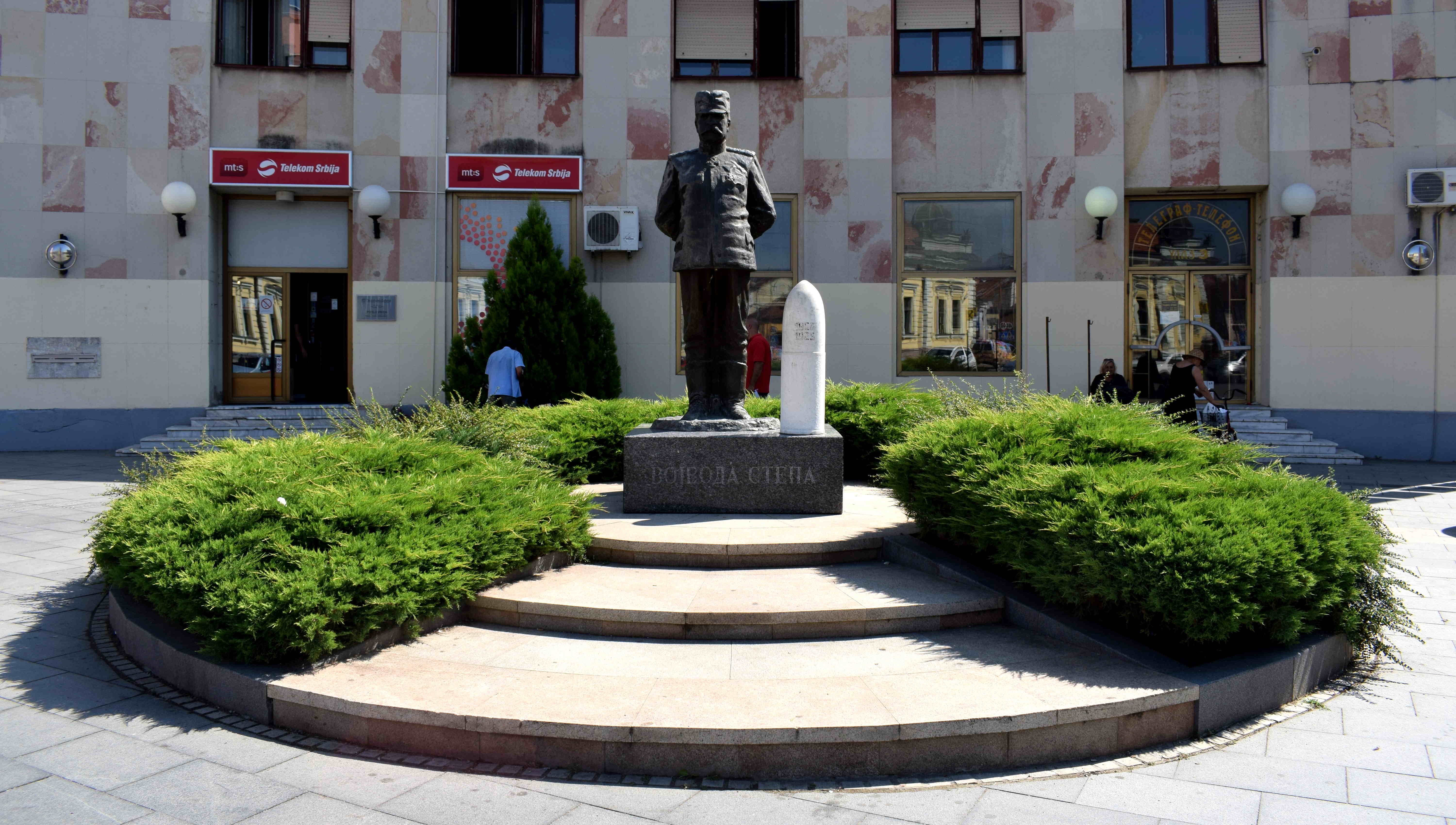 A post office box from 1863 still stands on one of the buildings.
A post office box from 1863 still stands on one of the buildings.
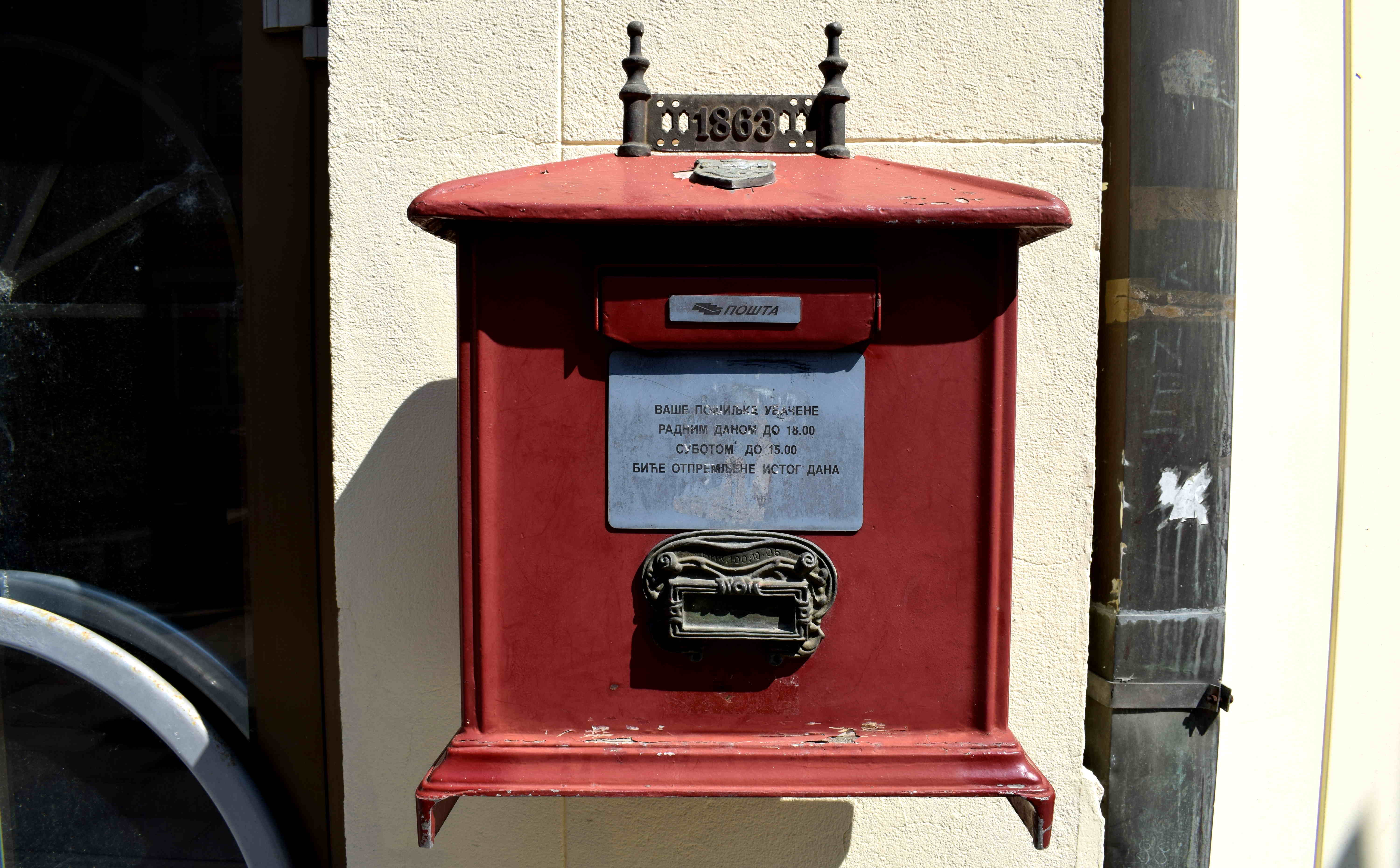 More cyclists in the center. It’s great to see cycling becoming more and more popular in Eastern Europe.
More cyclists in the center. It’s great to see cycling becoming more and more popular in Eastern Europe.
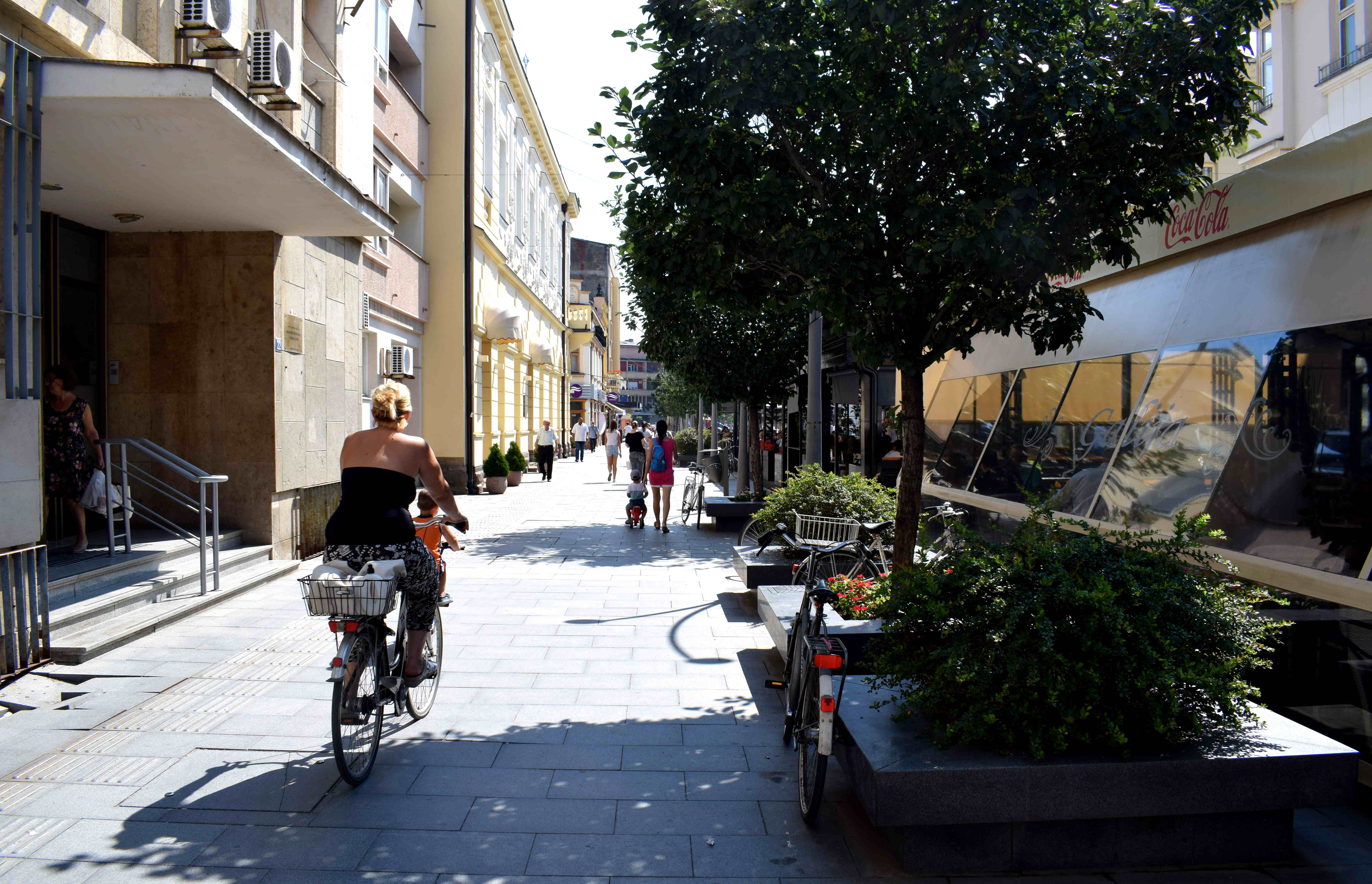 Another historic building on Cacak’s pedestrian street.
Another historic building on Cacak’s pedestrian street.
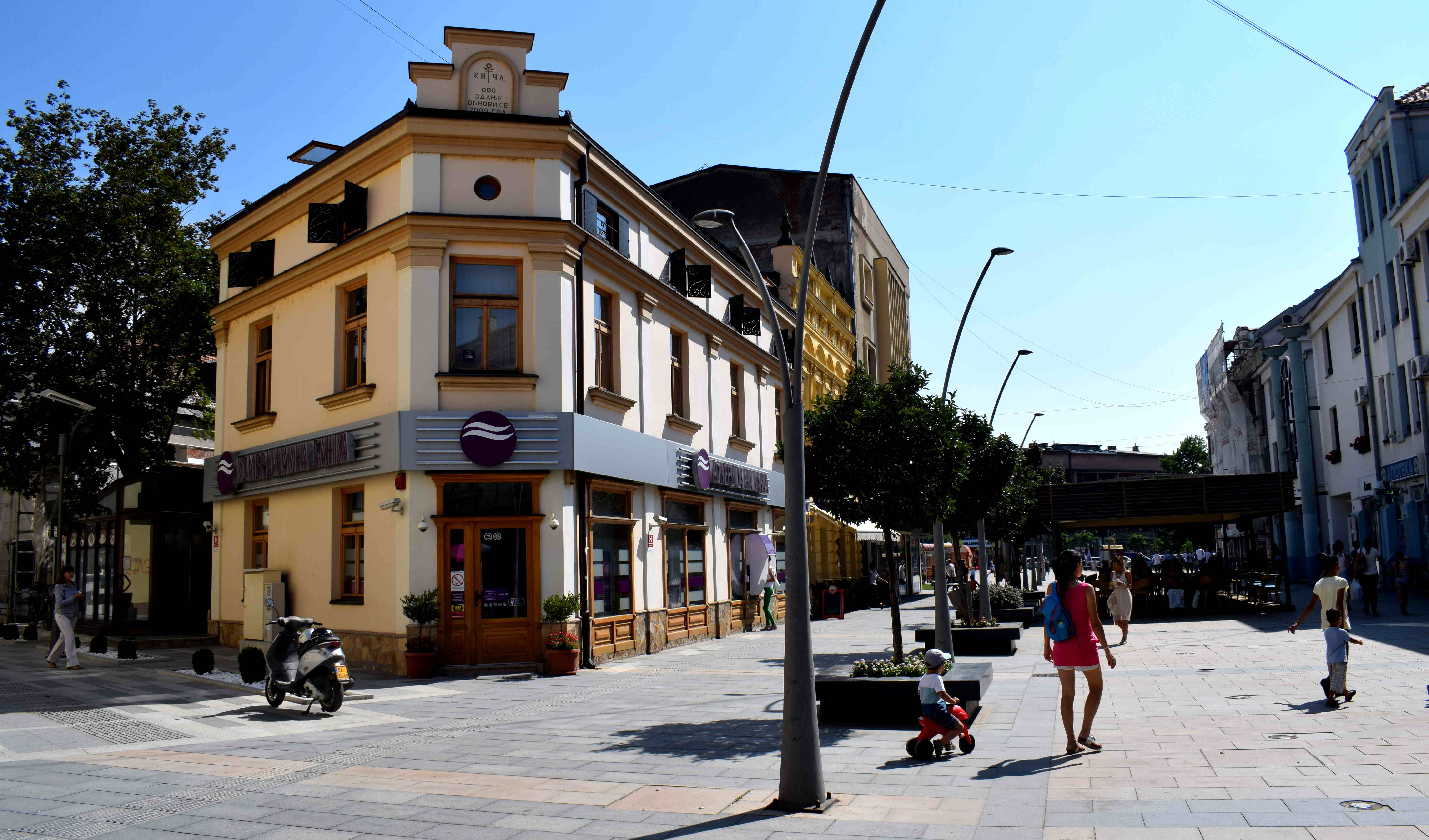 While it seemed like the city mostly respected its historic architecture, there was one building that looked like it was being torn down to be replaced with something modern, which is unfortunate.
While it seemed like the city mostly respected its historic architecture, there was one building that looked like it was being torn down to be replaced with something modern, which is unfortunate.
Small cities like Cacak need to be extra careful in preserving the old historic buildings they have left. Otherwise developers will tear down everything that makes these cities unique.
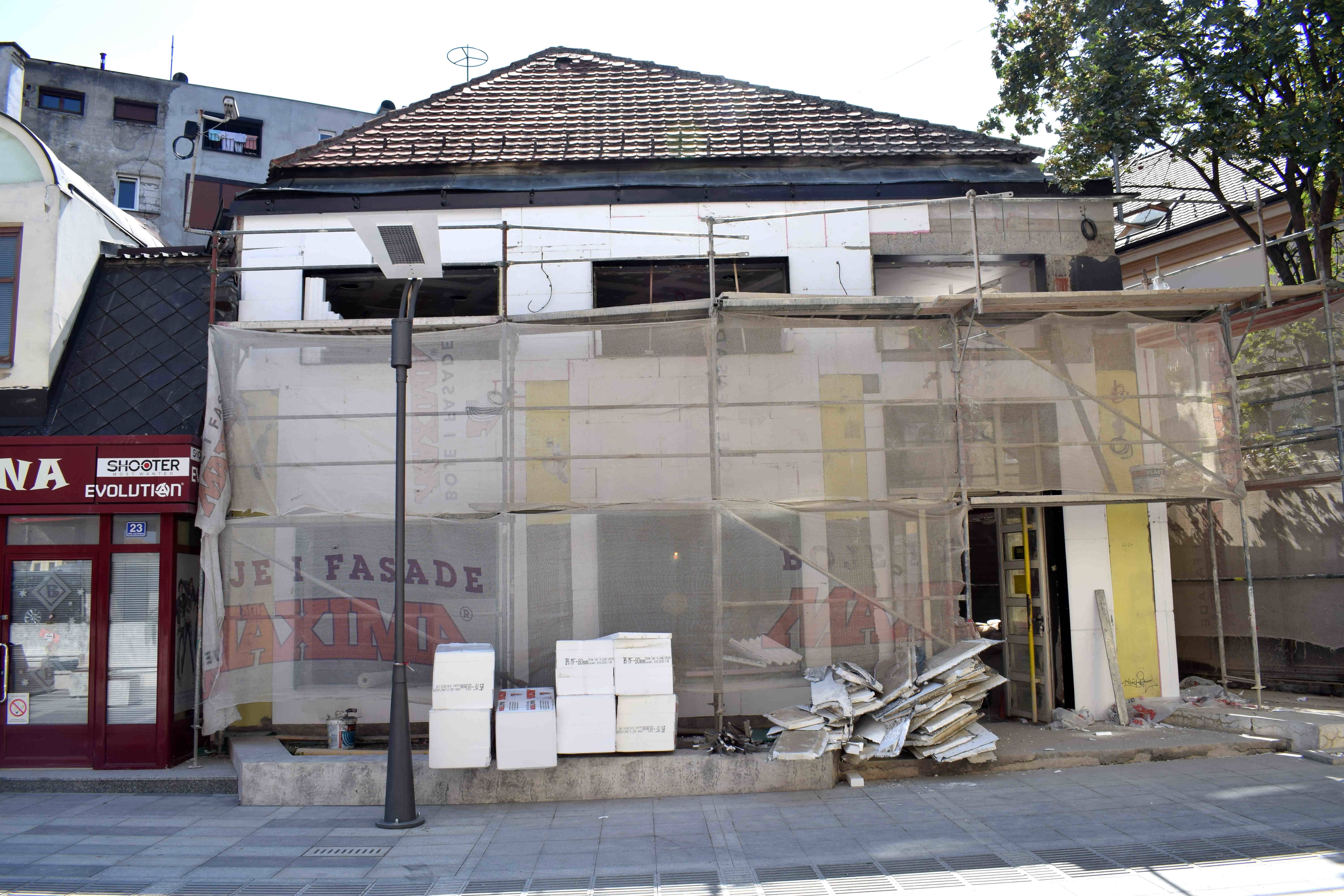 At times you feel like you could be in any other city in Germany or France walking through Cacak.
At times you feel like you could be in any other city in Germany or France walking through Cacak.
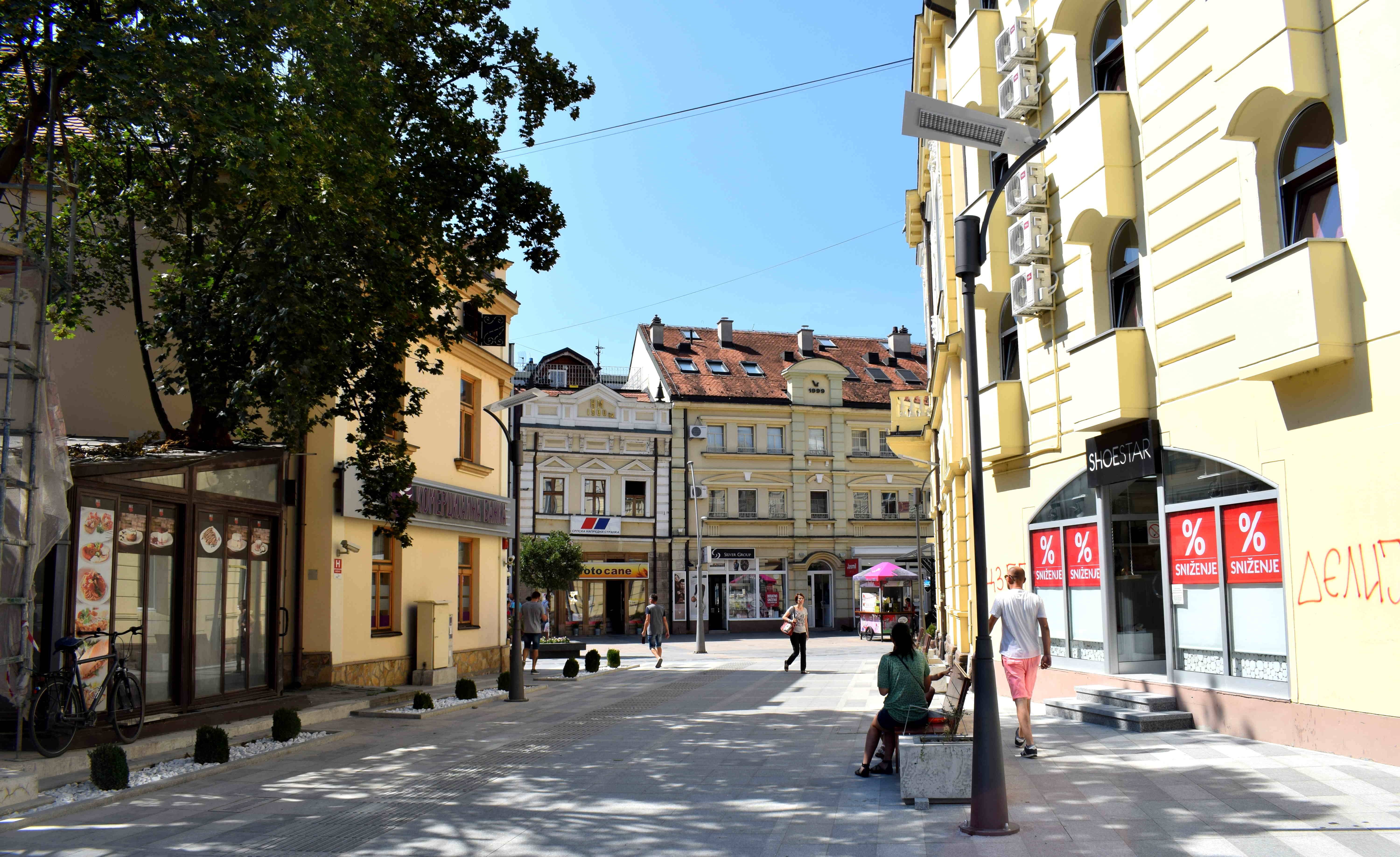 One drawback is the massive advertising and lack of a design code in the center. The glass building on the far left may have once been an old building that was modernized, and now there is shameless promoting of Serbia’s Prime Minister Alexander Vucic on the facade.
One drawback is the massive advertising and lack of a design code in the center. The glass building on the far left may have once been an old building that was modernized, and now there is shameless promoting of Serbia’s Prime Minister Alexander Vucic on the facade.
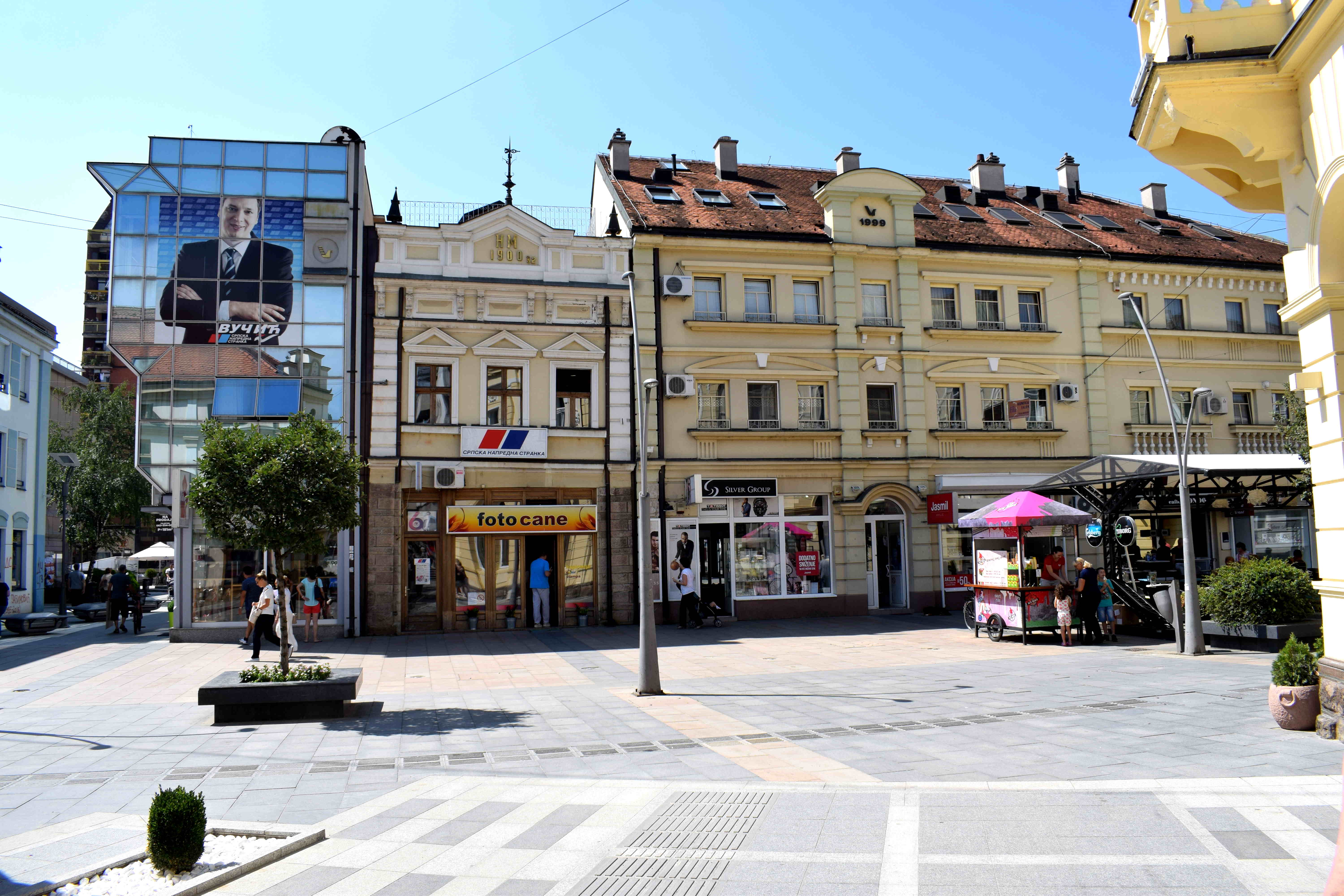 Cacak also pedestrianized areas of its center where the buildings were not as old.
Cacak also pedestrianized areas of its center where the buildings were not as old.
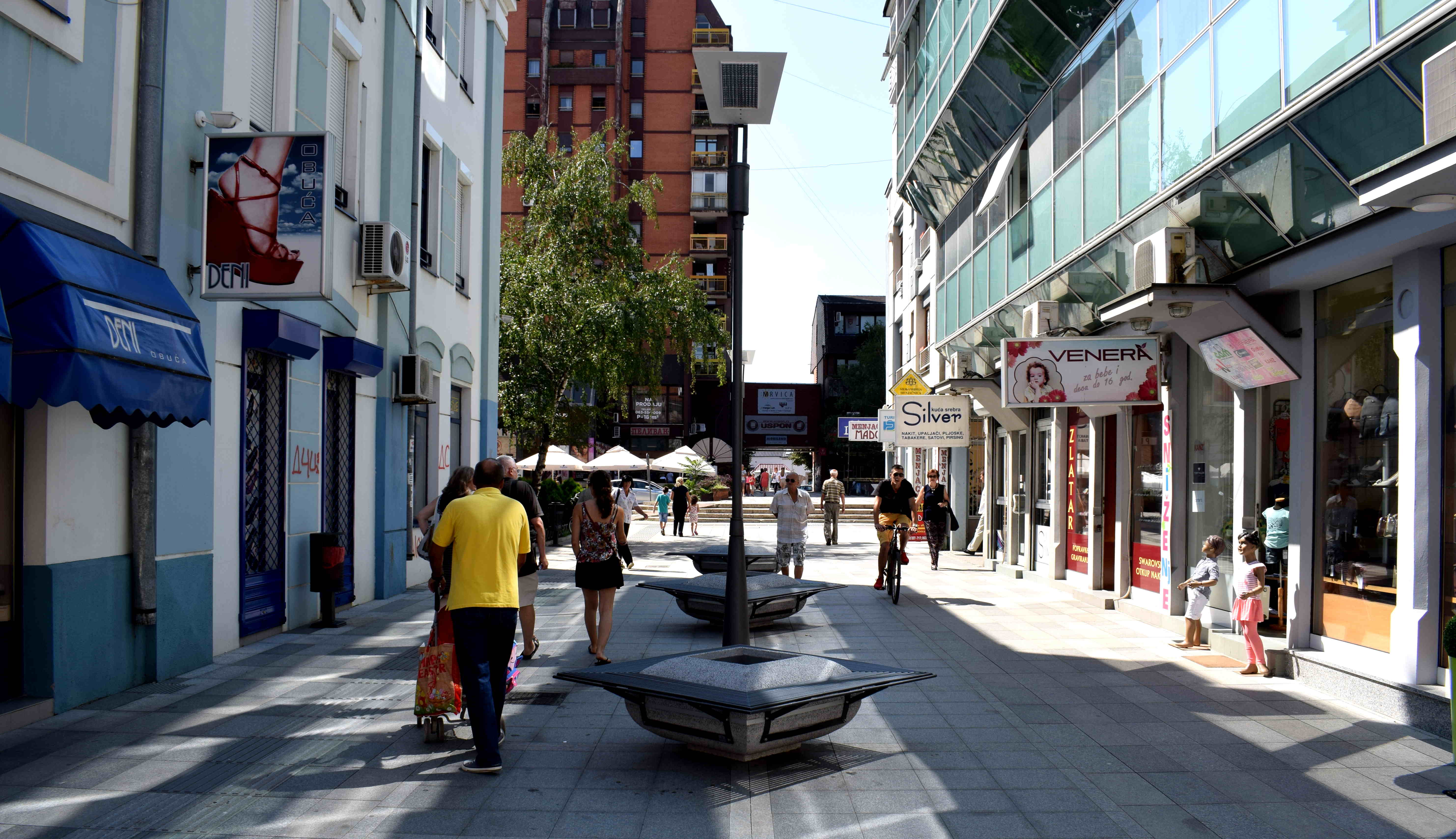 These streets offered a balanced mix of old and new.
These streets offered a balanced mix of old and new.
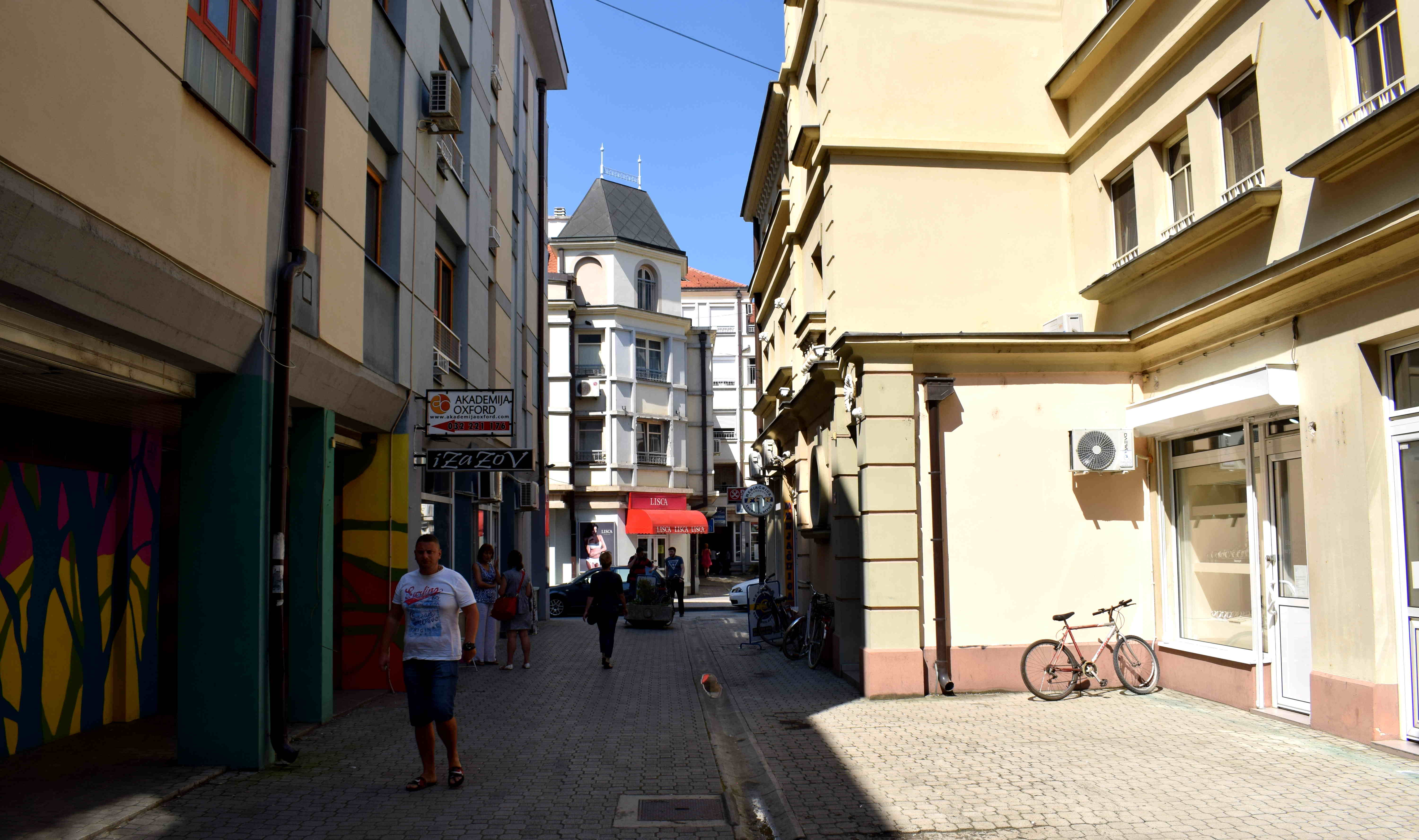 A pedestrianized square in the center.
A pedestrianized square in the center.
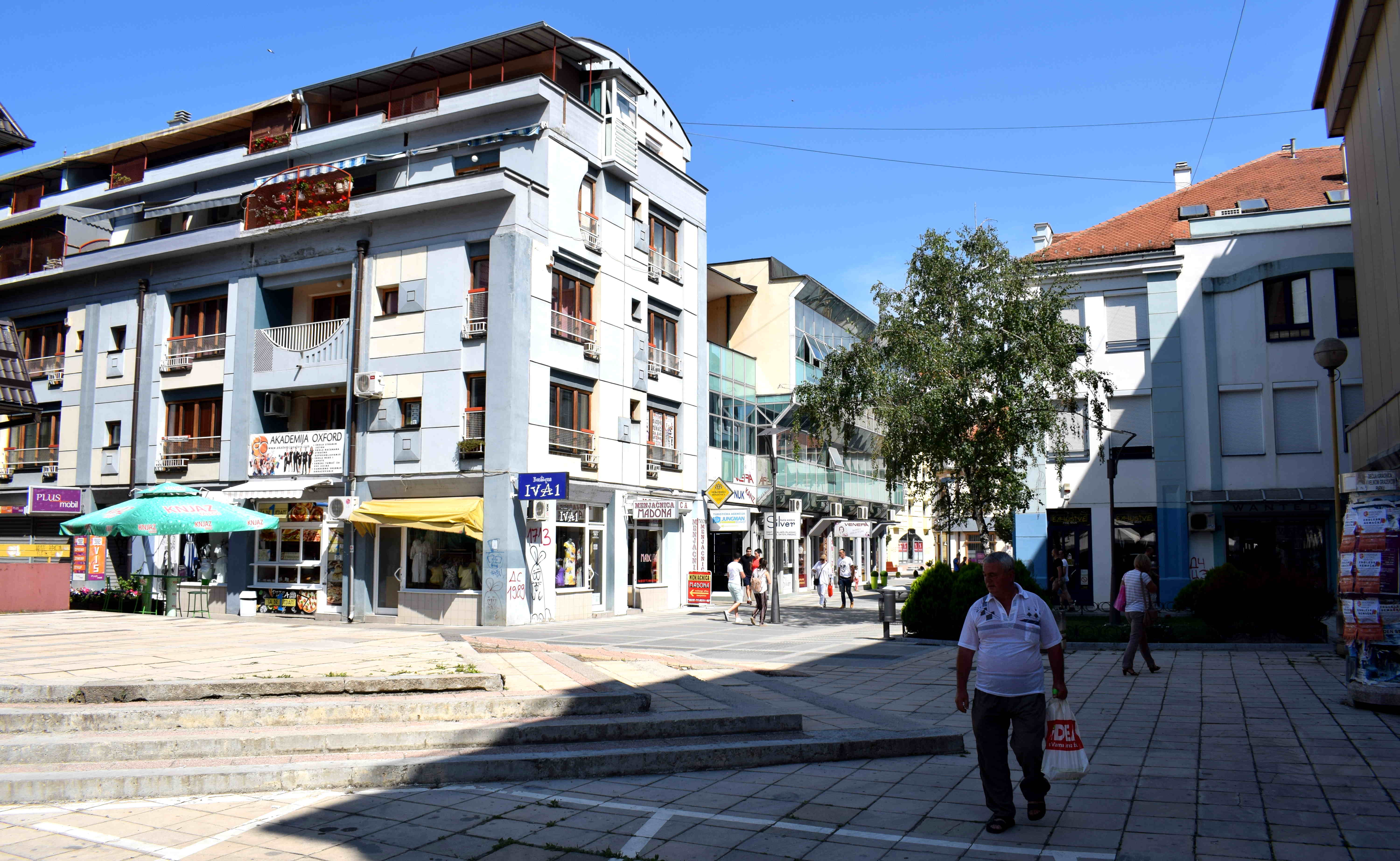 Hong Kong Chopping Center on the left. I couldn’t figure out when this building was built, but I wish it hadn’t been, since it completely blocks the view of the other older buildings.
Hong Kong Chopping Center on the left. I couldn’t figure out when this building was built, but I wish it hadn’t been, since it completely blocks the view of the other older buildings.
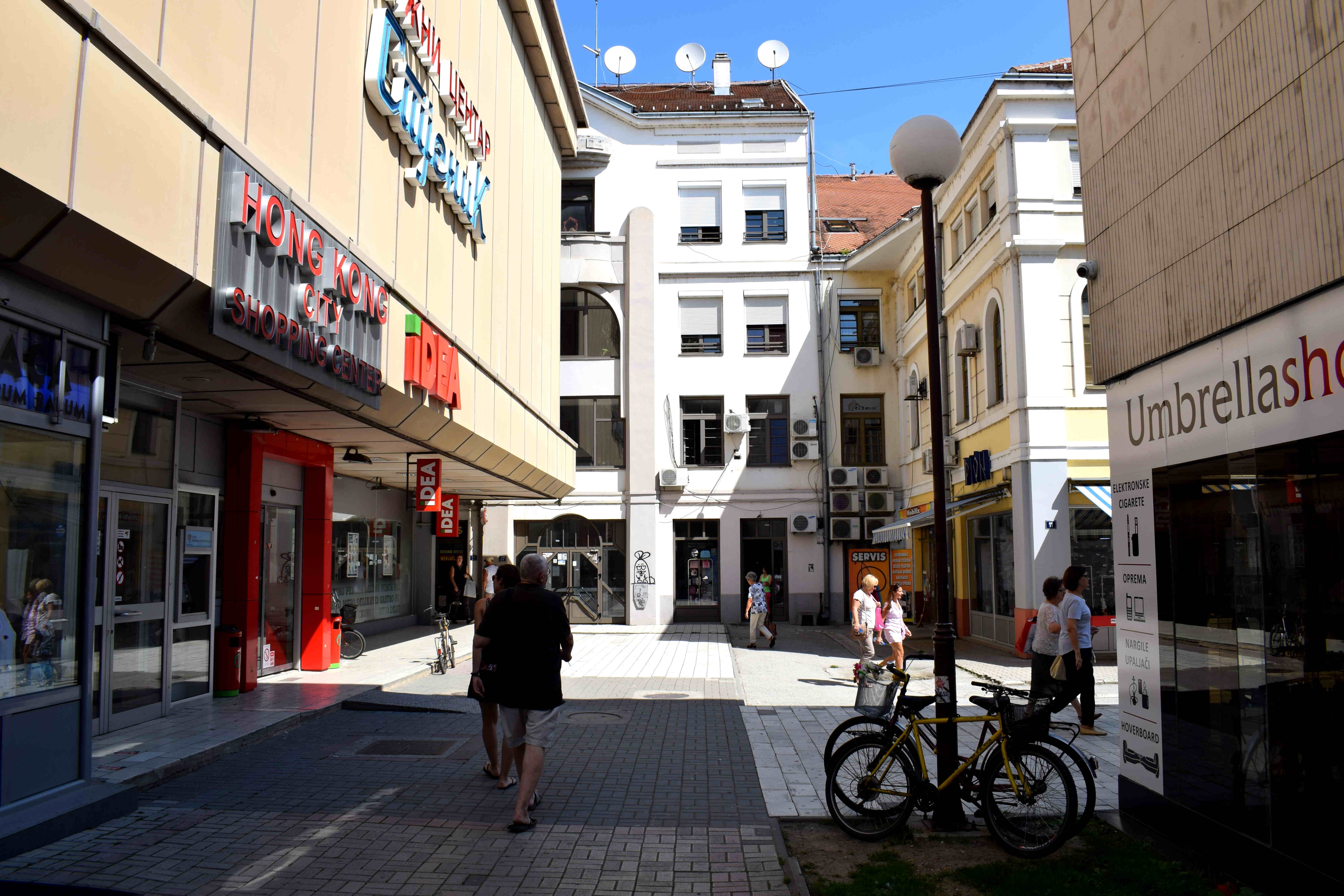 Another old building.
Another old building.
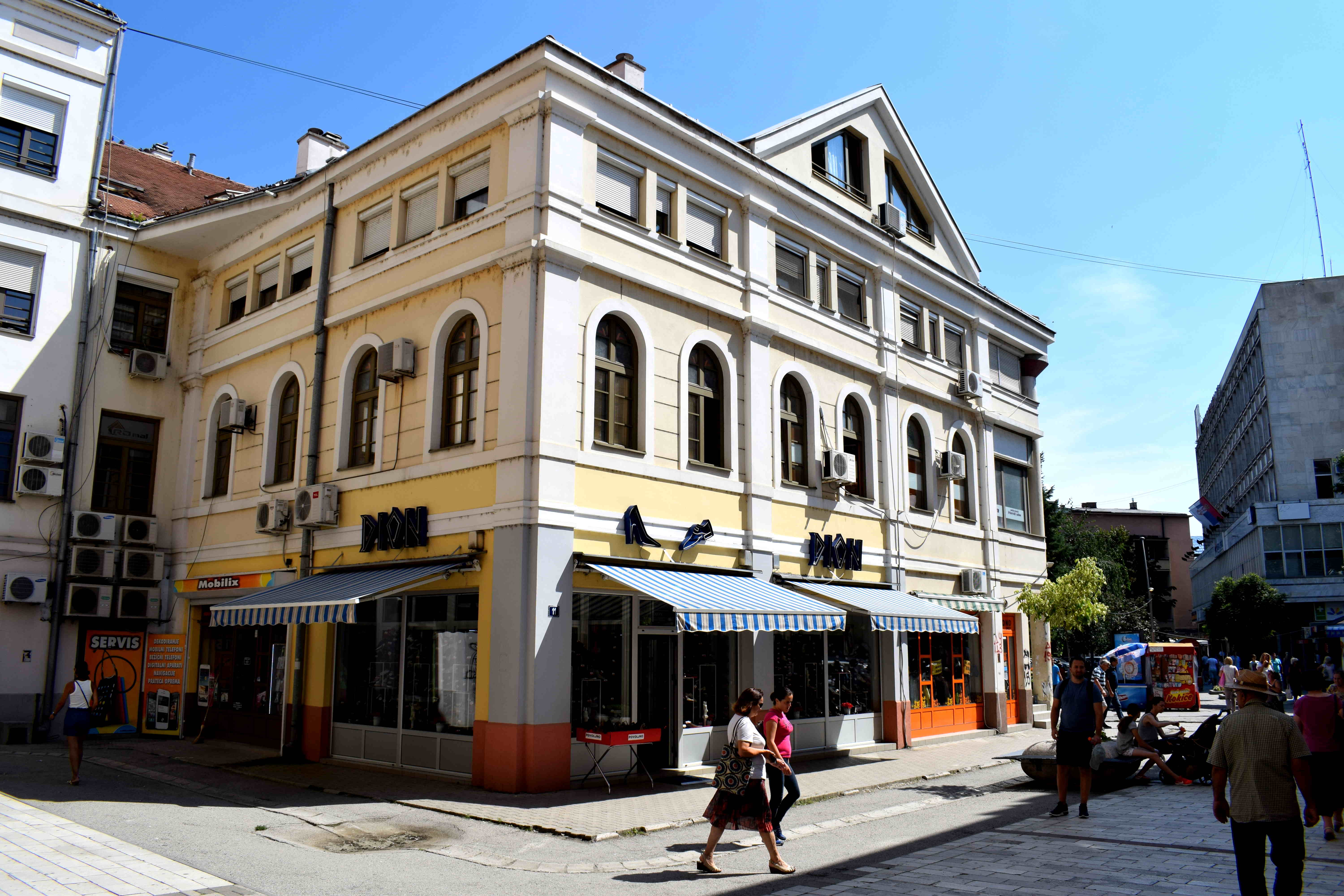 Bikes seemed to cover up every spare pole or fence where people could lock their bikes to.
Bikes seemed to cover up every spare pole or fence where people could lock their bikes to.
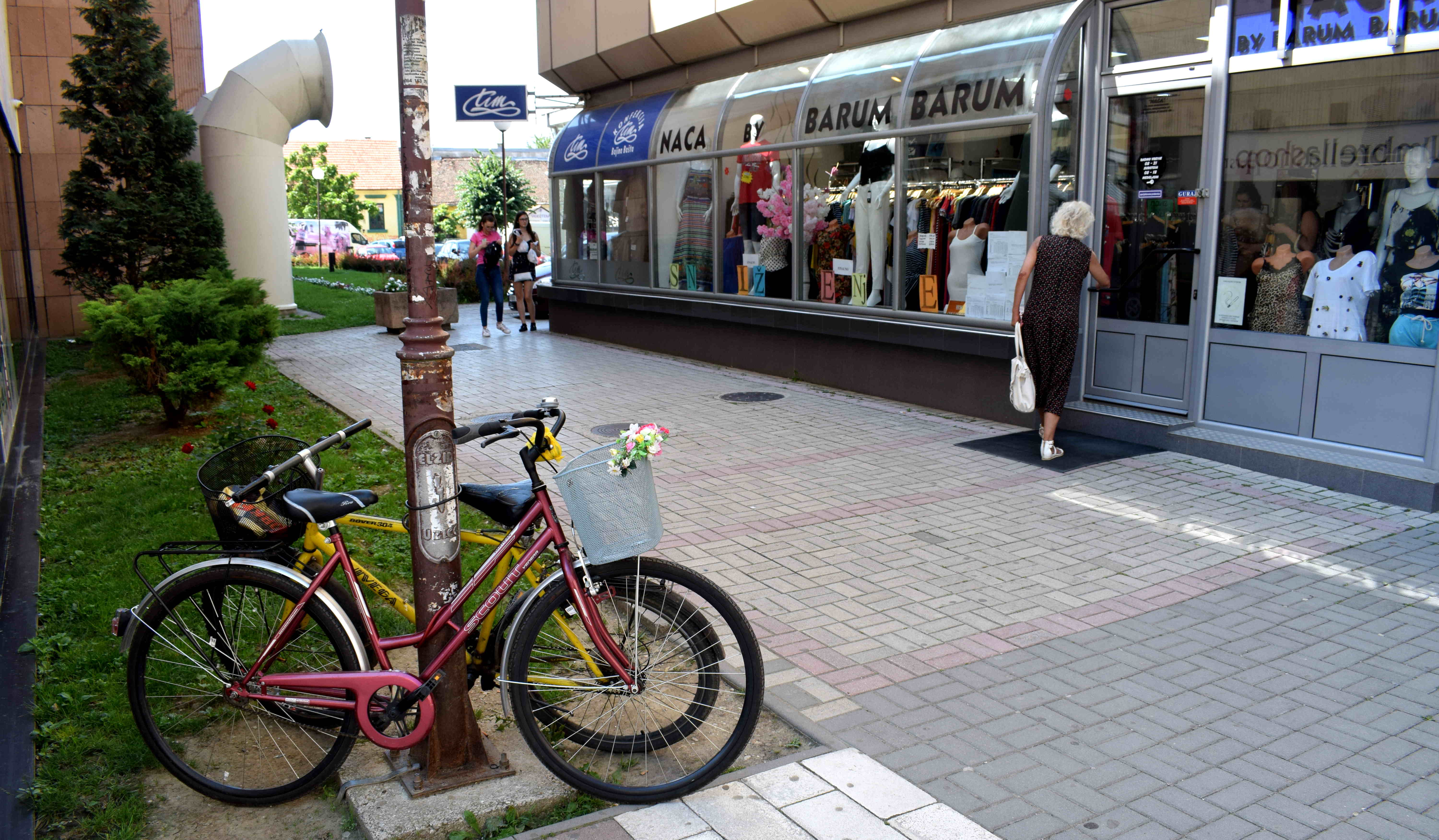
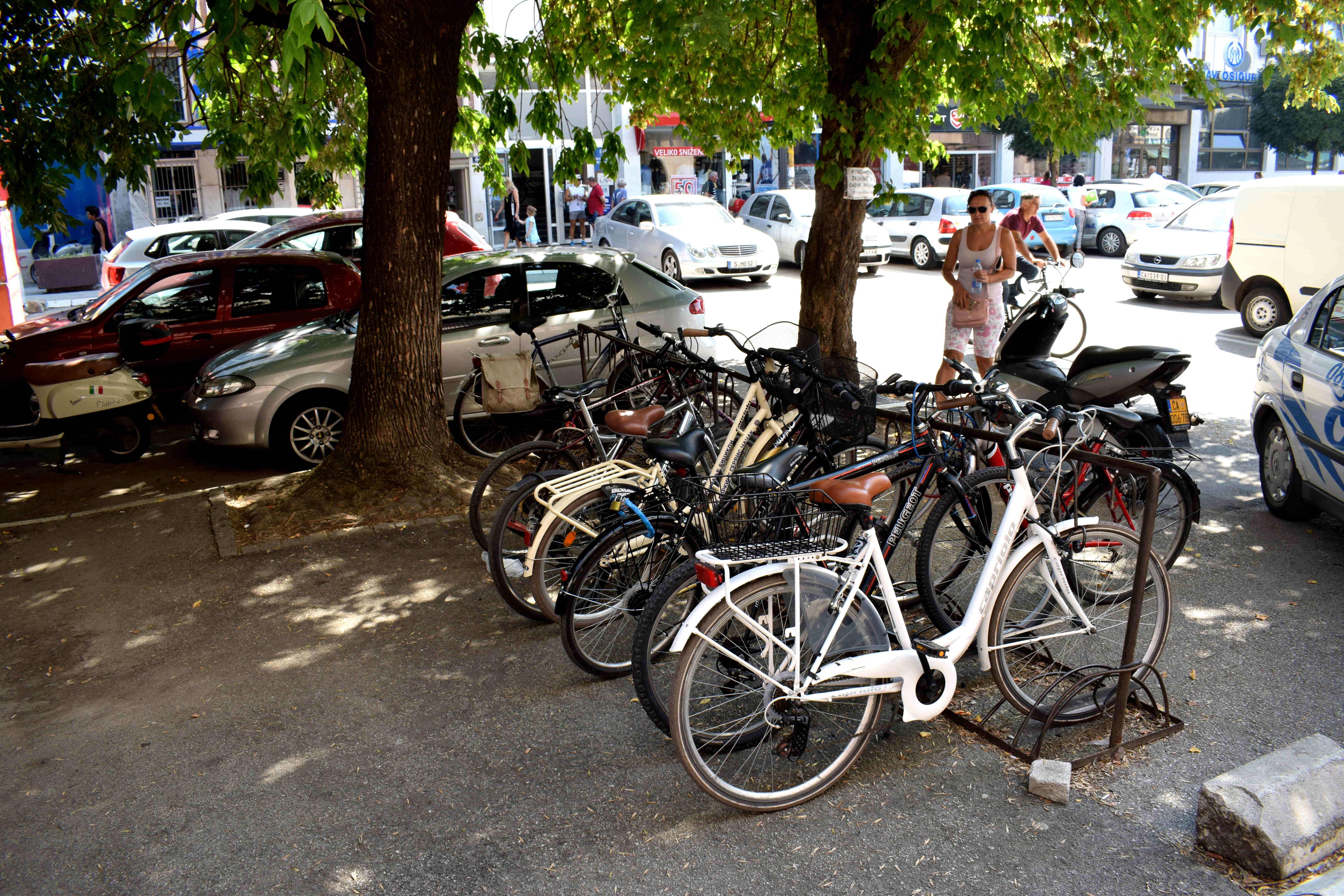 A traditional Serbian Guslar player.
A traditional Serbian Guslar player.
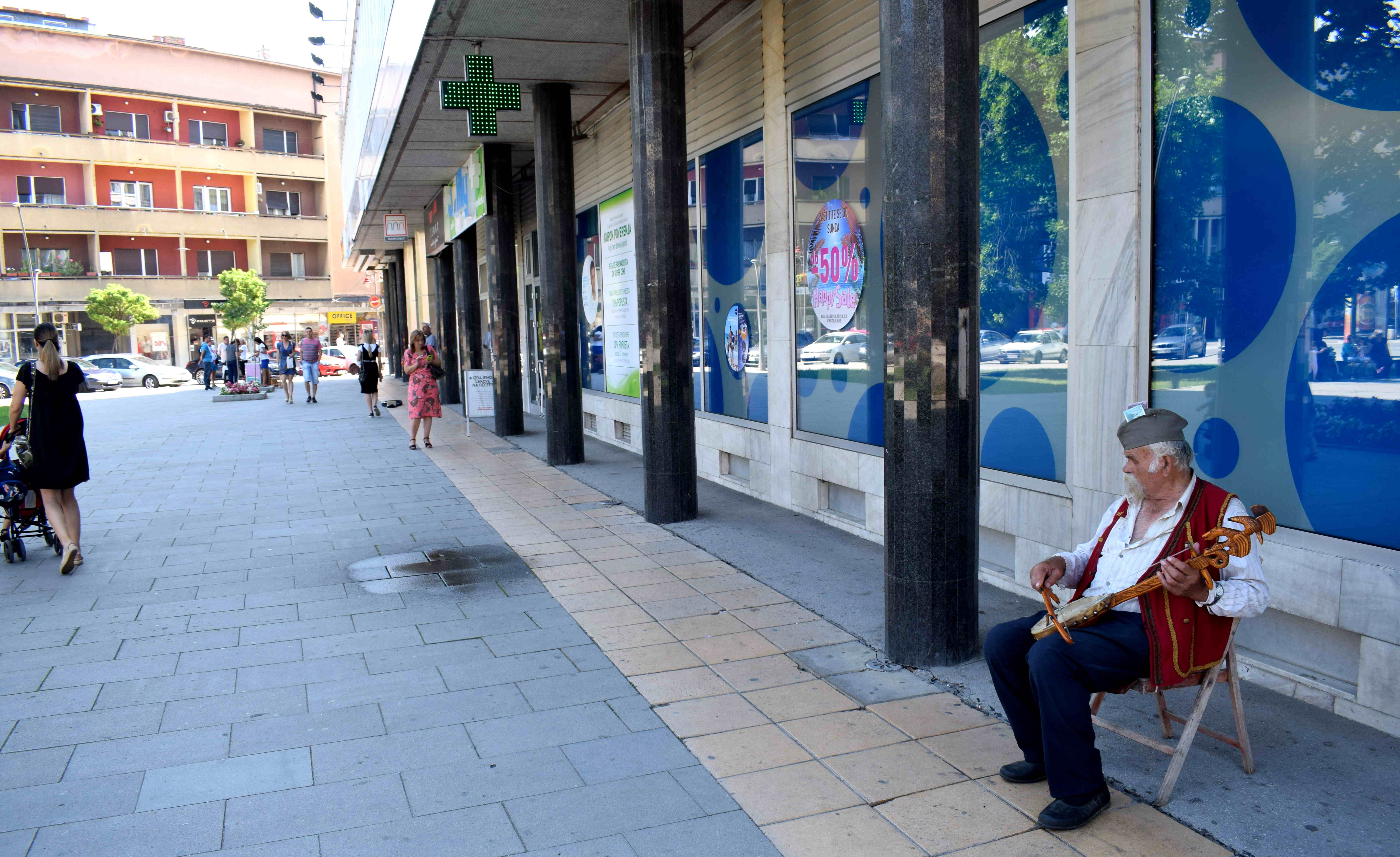 Walking toward Cacak’s central square.
Walking toward Cacak’s central square.
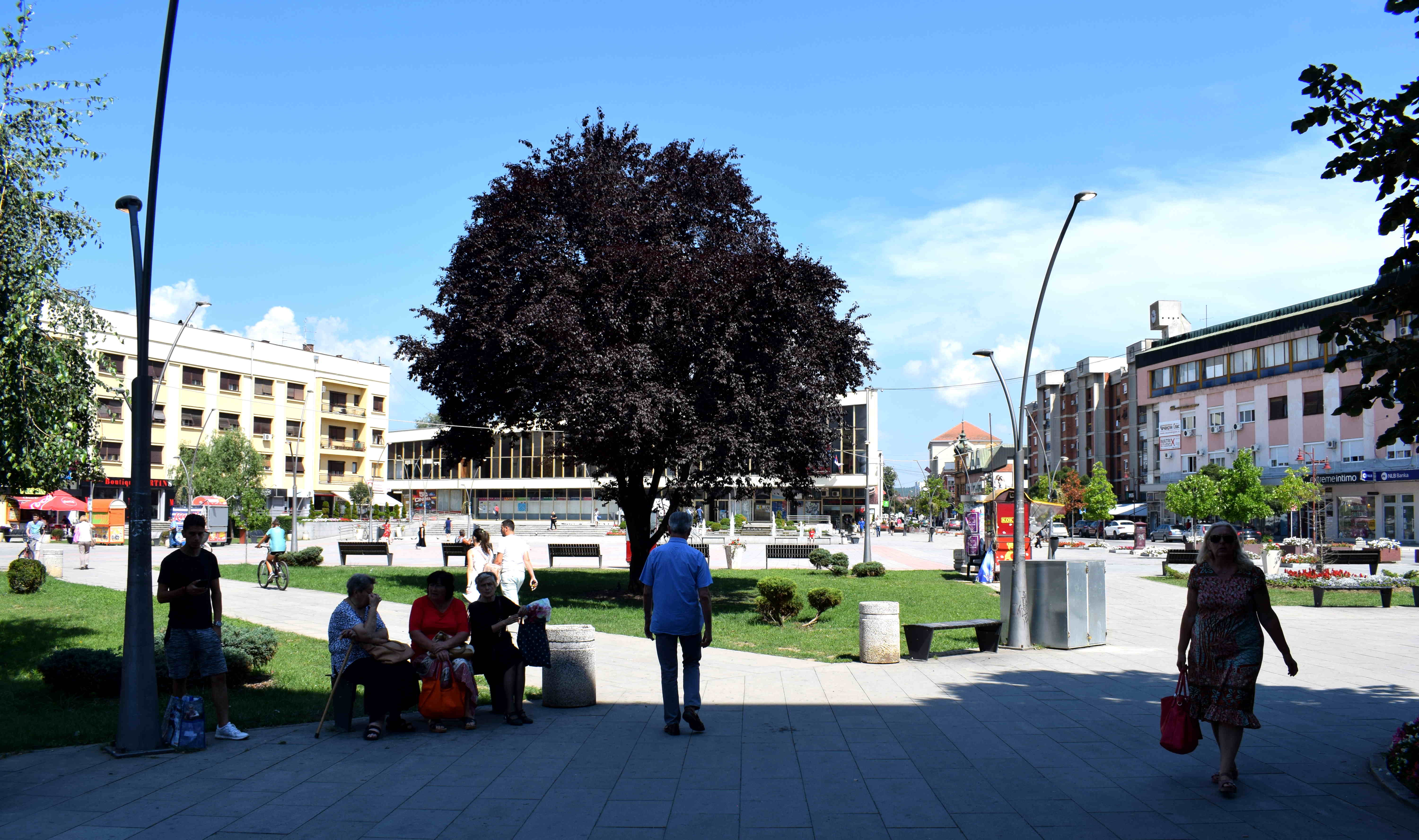 Cacak’s central square is similar to many other central squares in the Balkans designed by Yugoslav communists. After WWII Yugoslav communists wanted to showcase socialist architecture and would typically design a central square in the center of every city in Yugoslavia with a building built in the new socialist style.
Cacak’s central square is similar to many other central squares in the Balkans designed by Yugoslav communists. After WWII Yugoslav communists wanted to showcase socialist architecture and would typically design a central square in the center of every city in Yugoslavia with a building built in the new socialist style.
What did building these kind of squares entail? Usually it meant razing historical sections in the center of cities to the ground and building concrete eyesores to replace them. Cacak did not escape this fate.
Today Cacak’s center is dominated by the Culture House, an eyesore in the very center of town that stands out of place to all of the old architecture. Similar to Hotel Zlatibor in Uzice, Cacak’s central square now has too much concrete and not enough trees.
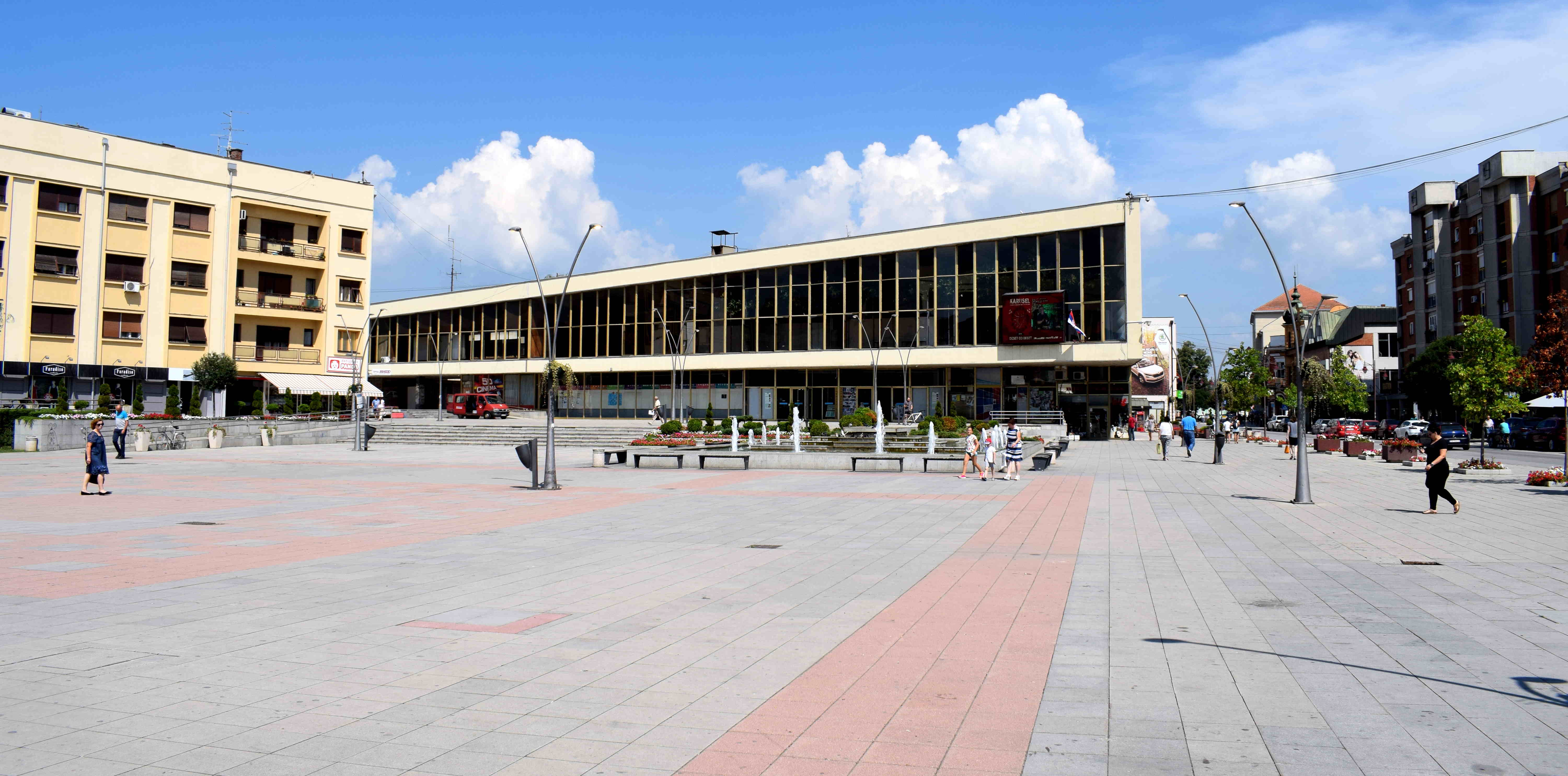 Contrast the communist building to those on the other side of the square. These are the historic buildings the city needs to preserve and promote.
Contrast the communist building to those on the other side of the square. These are the historic buildings the city needs to preserve and promote.
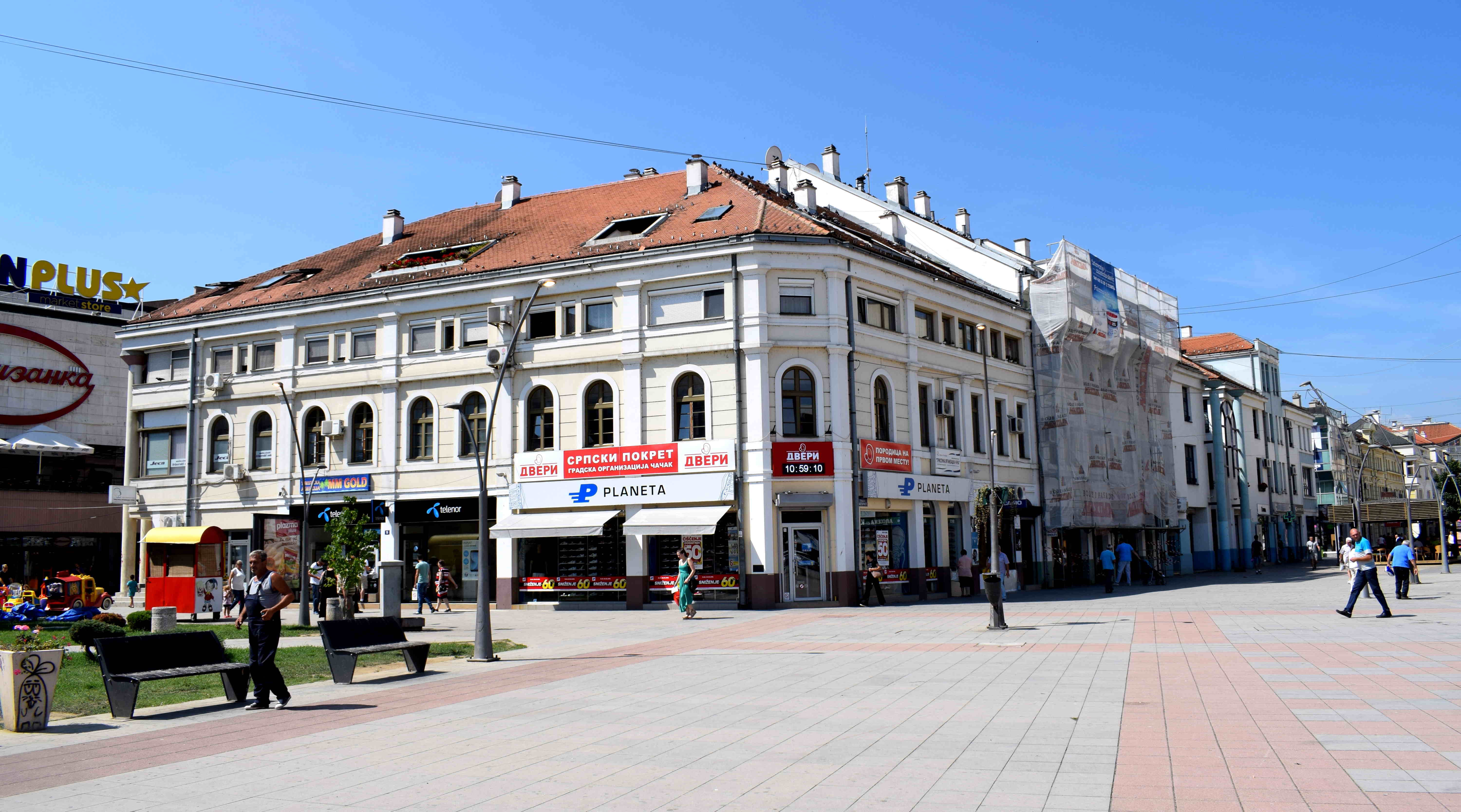 A nice fountain in front of the building built by the communists.
A nice fountain in front of the building built by the communists.
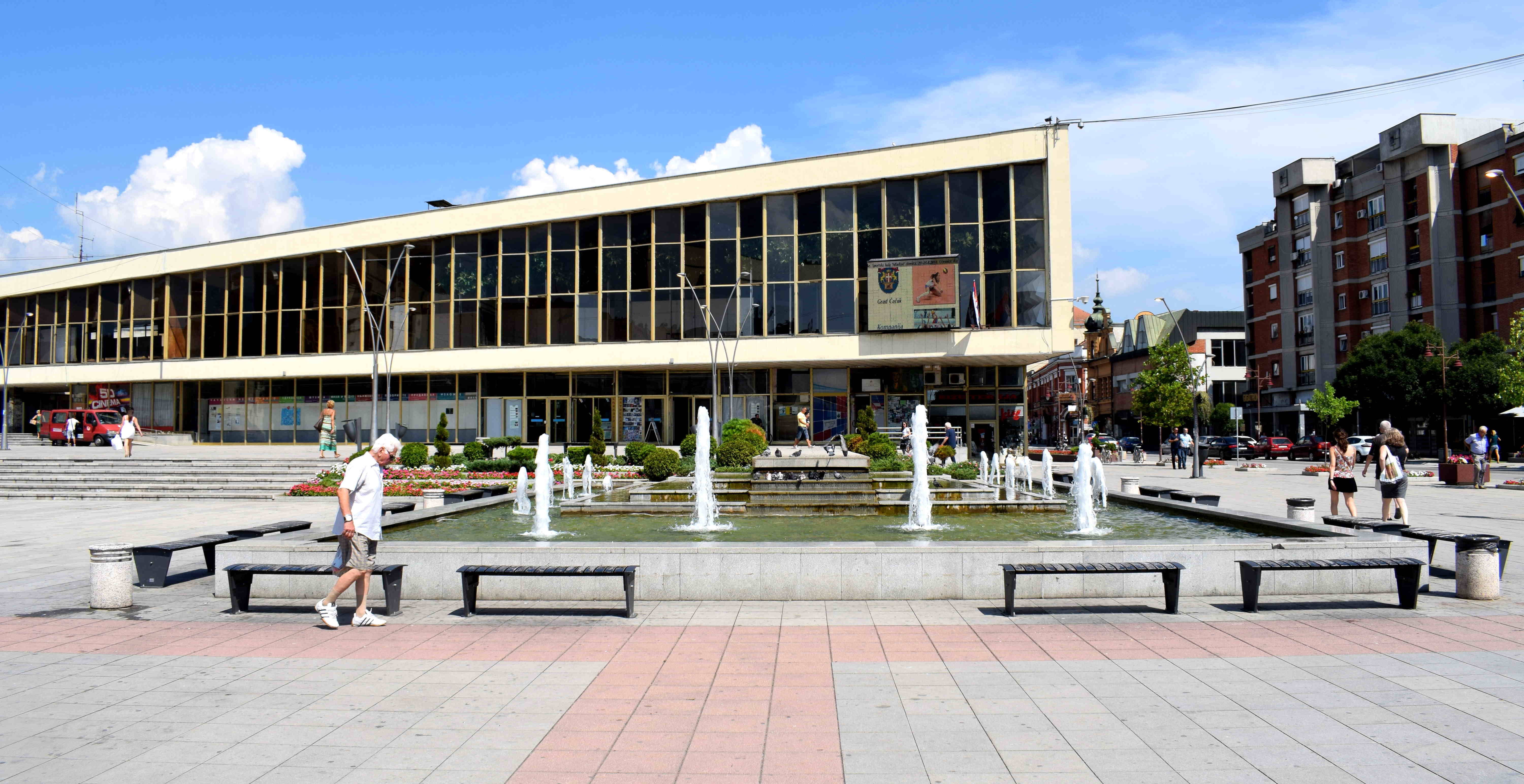 Another bike rack in the city’s center. The sign says “ride a bike, live healthy and well.”
Another bike rack in the city’s center. The sign says “ride a bike, live healthy and well.”
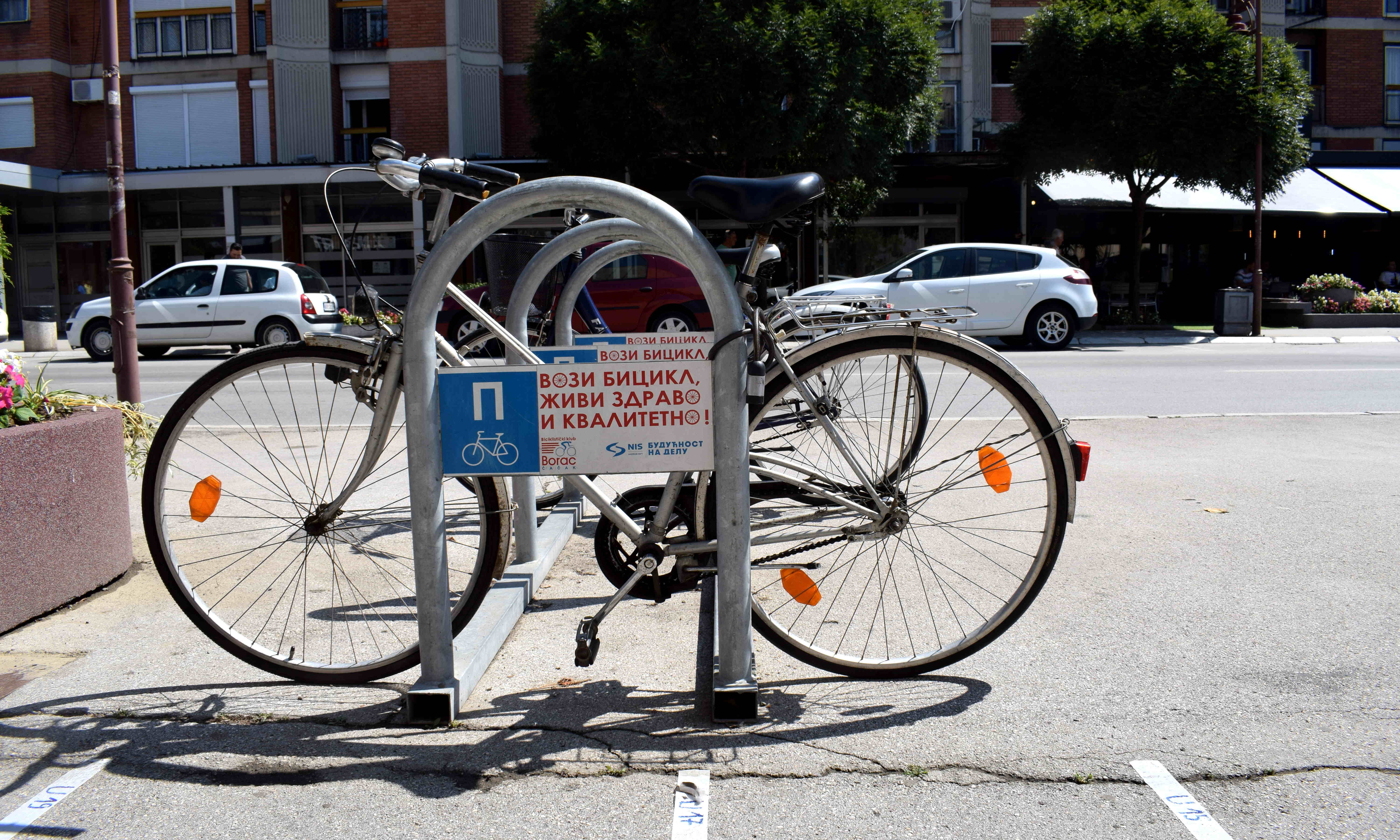 Even older folks were out on the street riding their bikes.
Even older folks were out on the street riding their bikes.
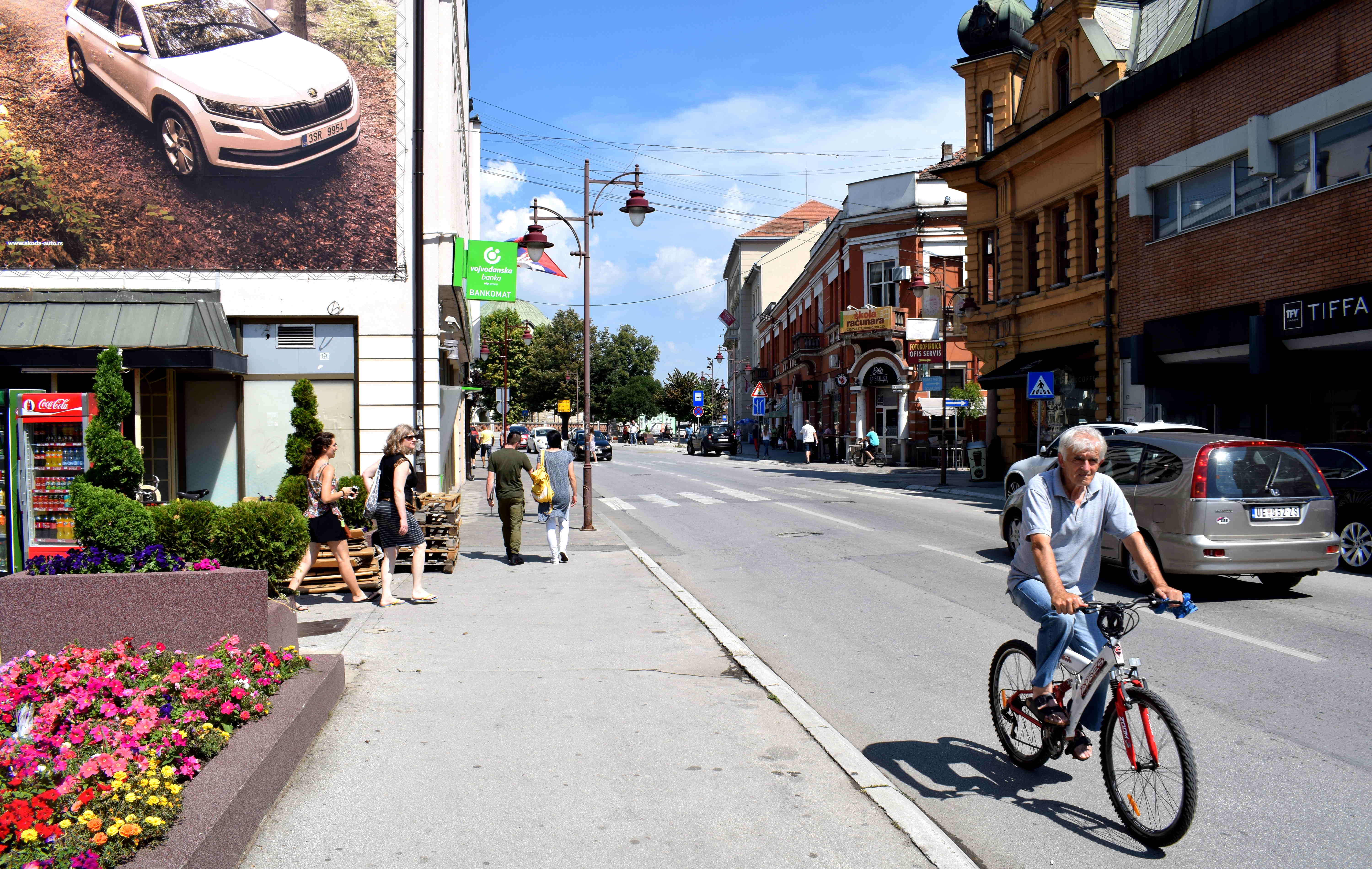 Walking down Zupana Stracimira street.
Walking down Zupana Stracimira street.
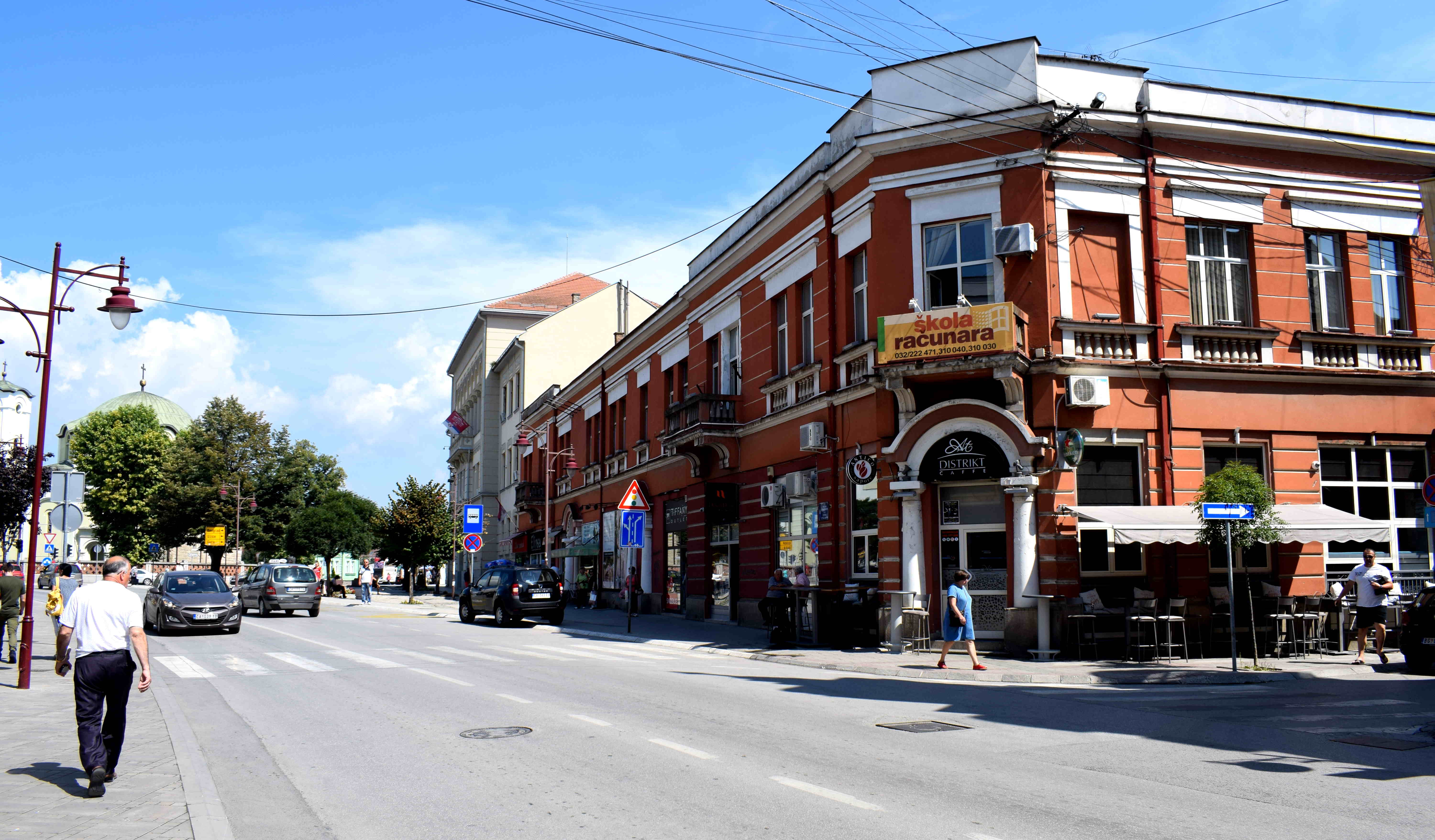 This street also had a lot of historic buildings and is a candidate for further pedestrianization.
This street also had a lot of historic buildings and is a candidate for further pedestrianization.
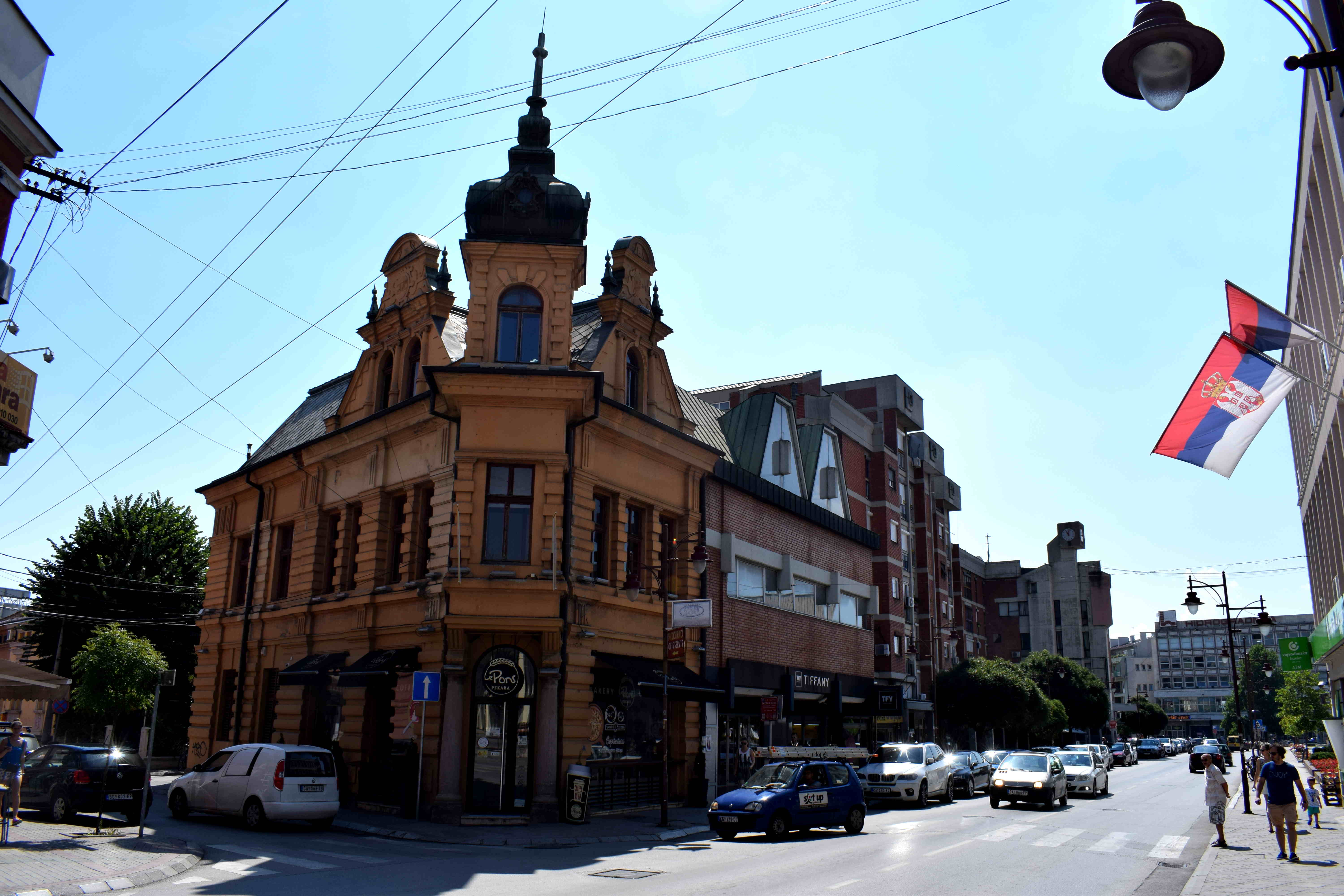 The area around the cities parliament building is almost spotless with beautiful flowers, benches and trees planted.
The area around the cities parliament building is almost spotless with beautiful flowers, benches and trees planted.
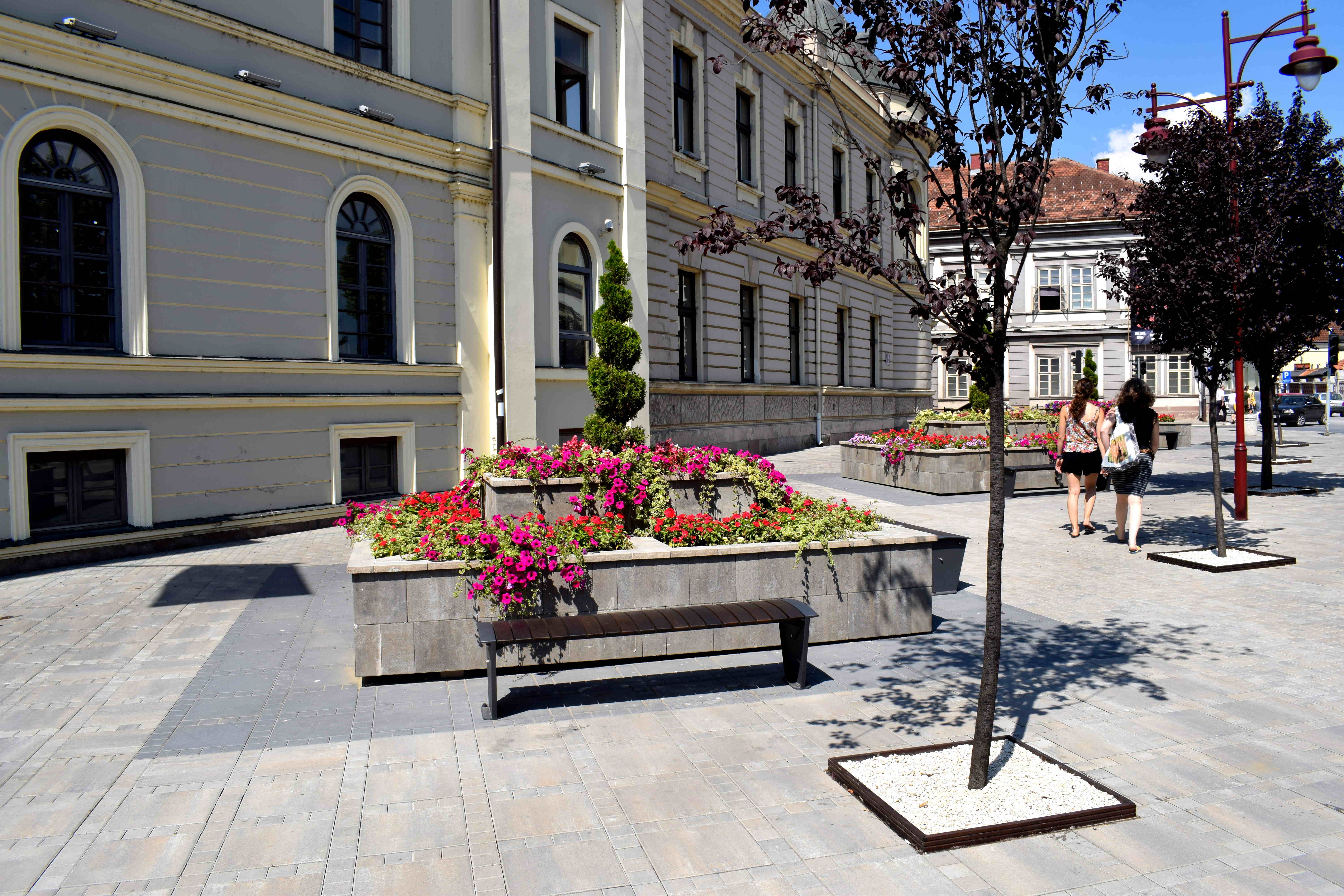 One of the oldest churches in Cacak. It was originally built in ______ but in _______ additional sections to the church were added. When we went inside the interior was completely modern without any frescoes. Unfortunately it looks as if the frescoes were lost over the centuries.
One of the oldest churches in Cacak. It was originally built in ______ but in _______ additional sections to the church were added. When we went inside the interior was completely modern without any frescoes. Unfortunately it looks as if the frescoes were lost over the centuries.
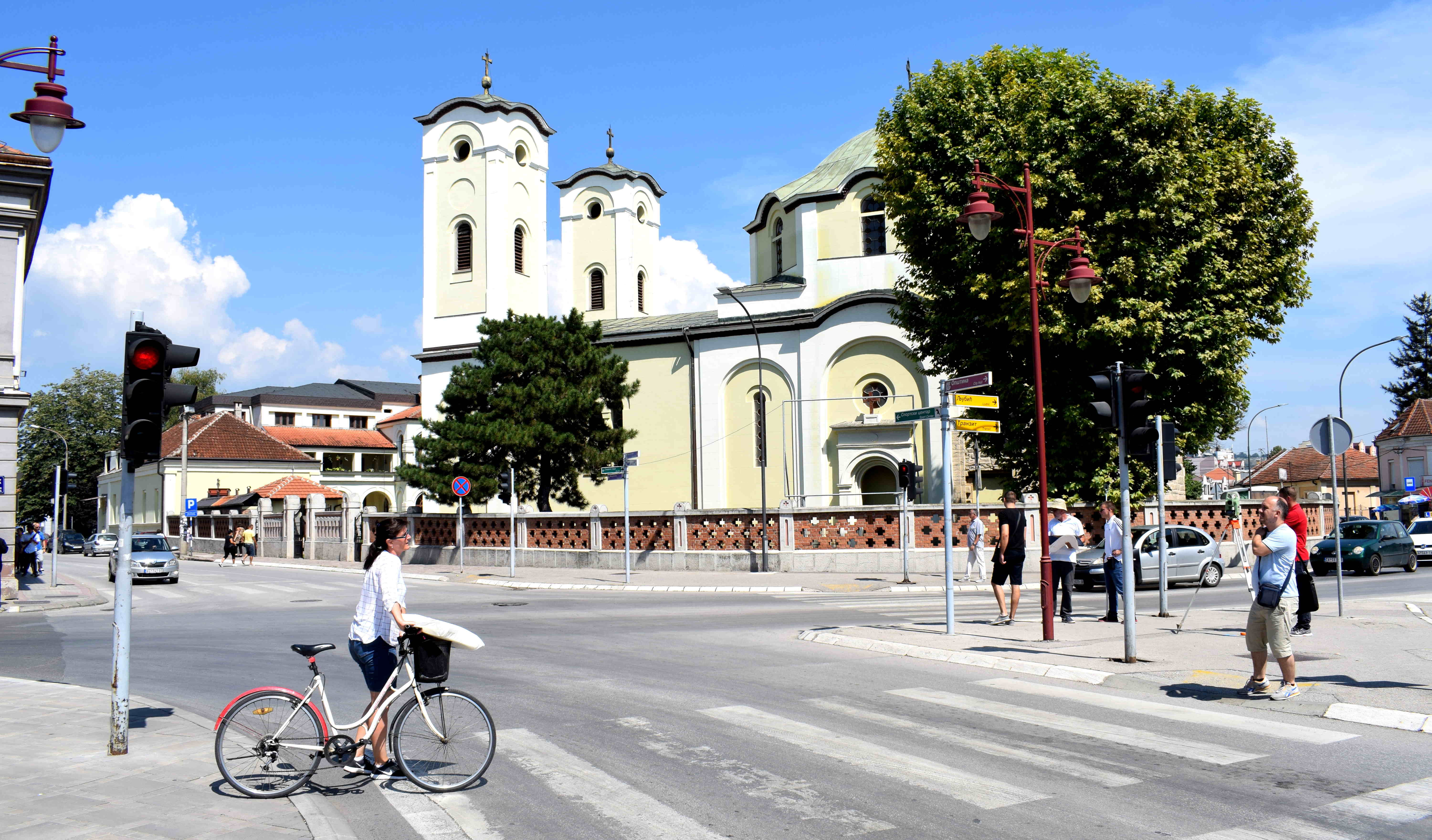 A look down the street away from the church.
A look down the street away from the church.
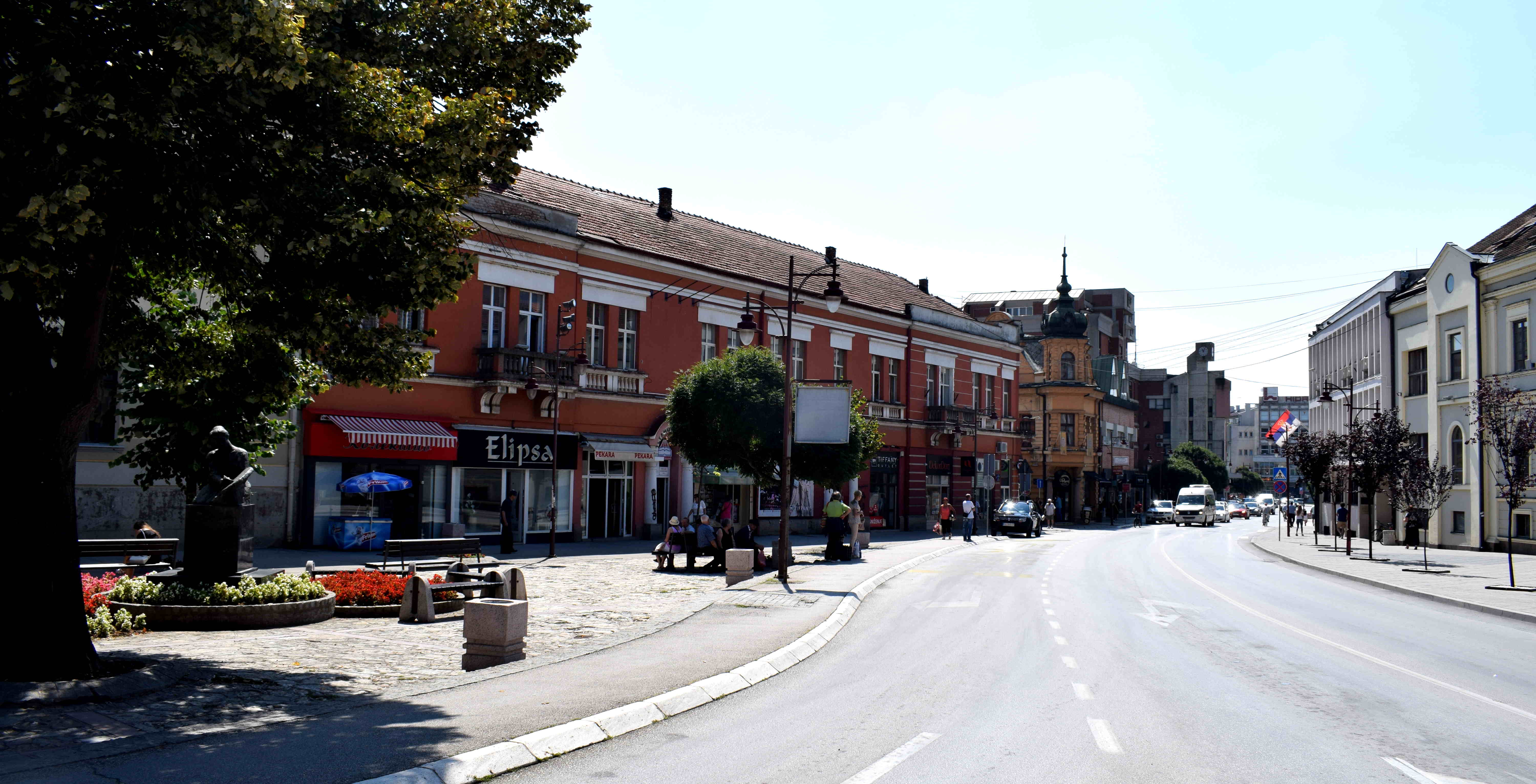 Cacak’s ___________ building.
Cacak’s ___________ building.
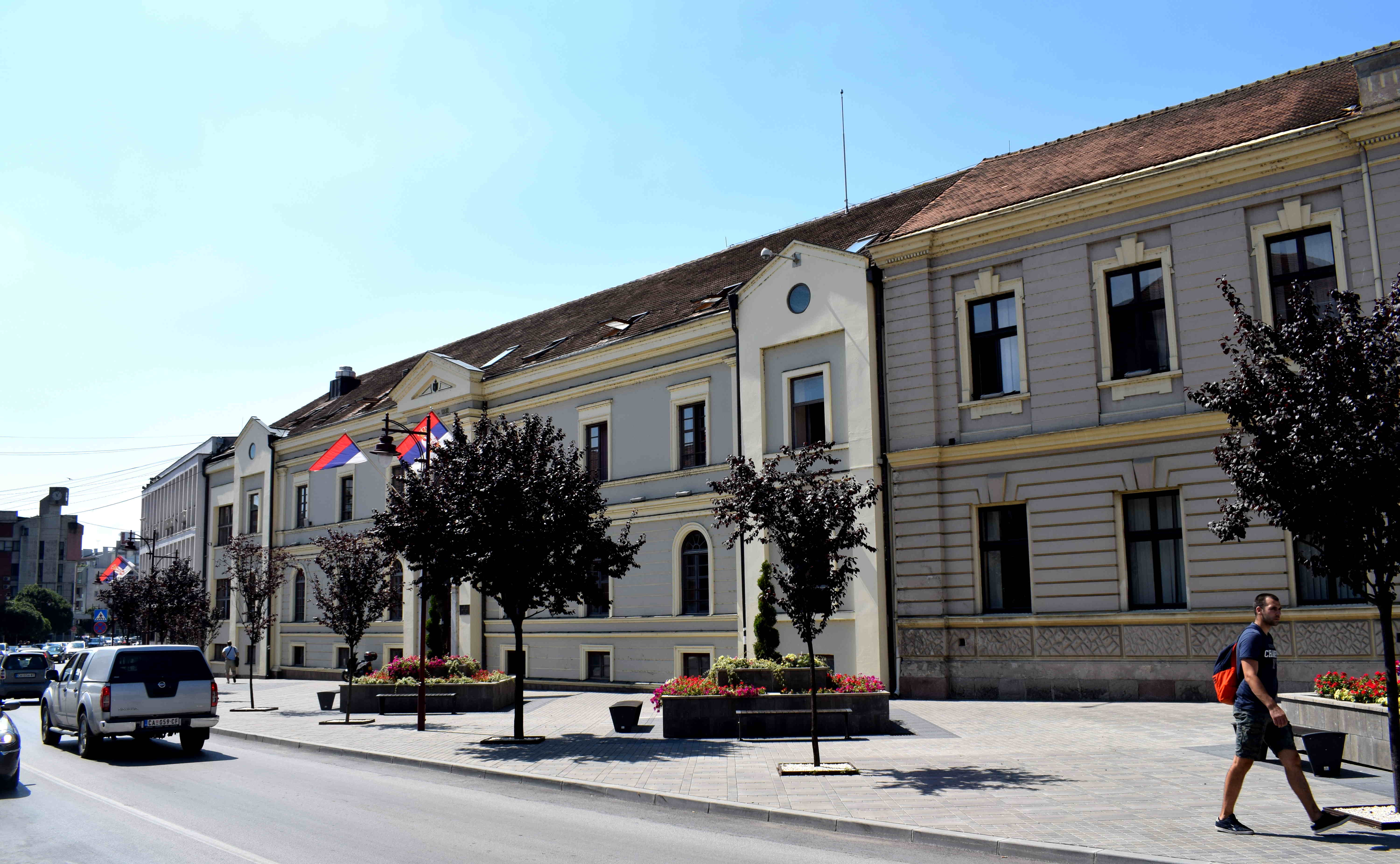 Cacak’s _________________ building.
Cacak’s _________________ building.
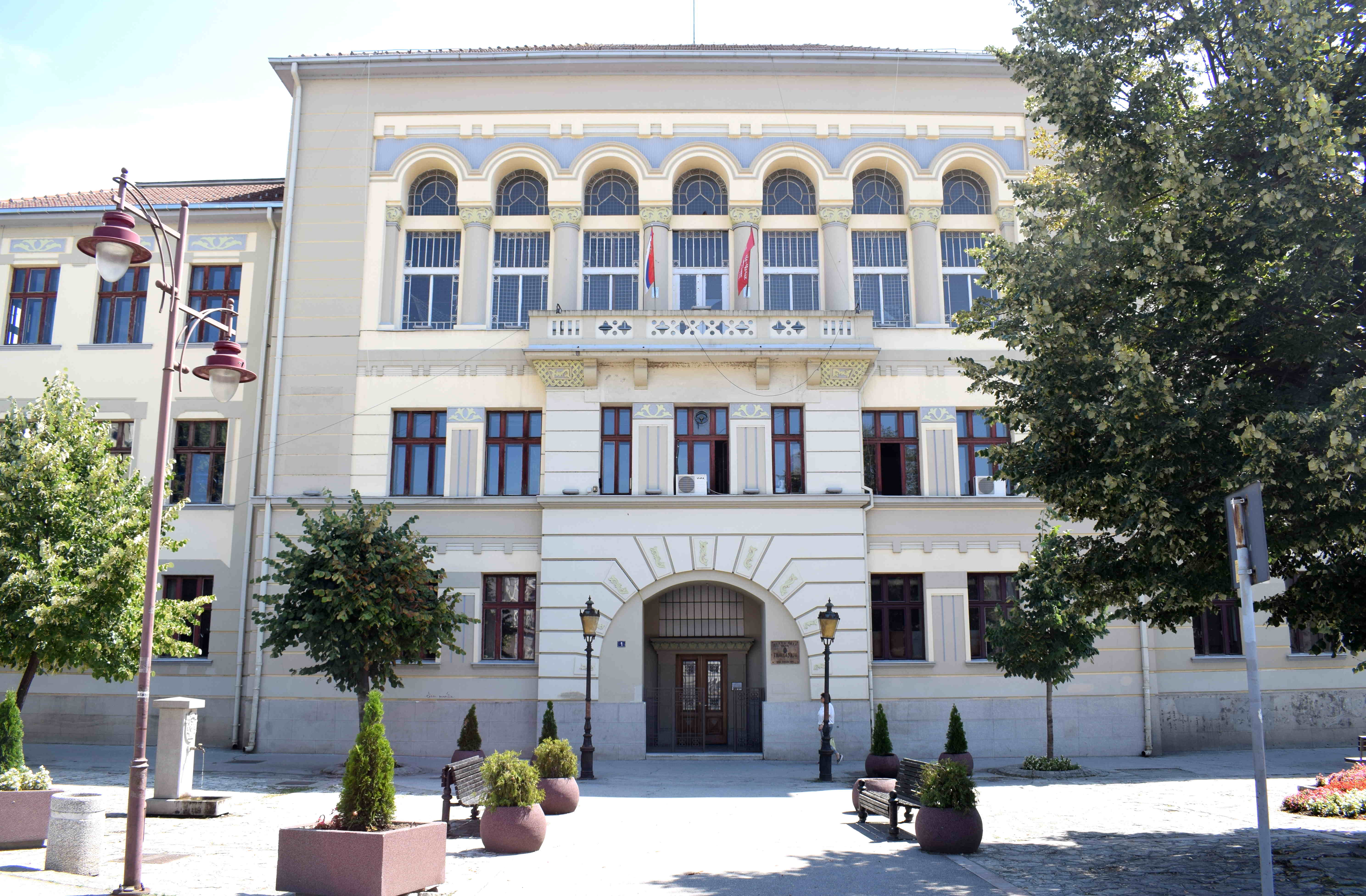
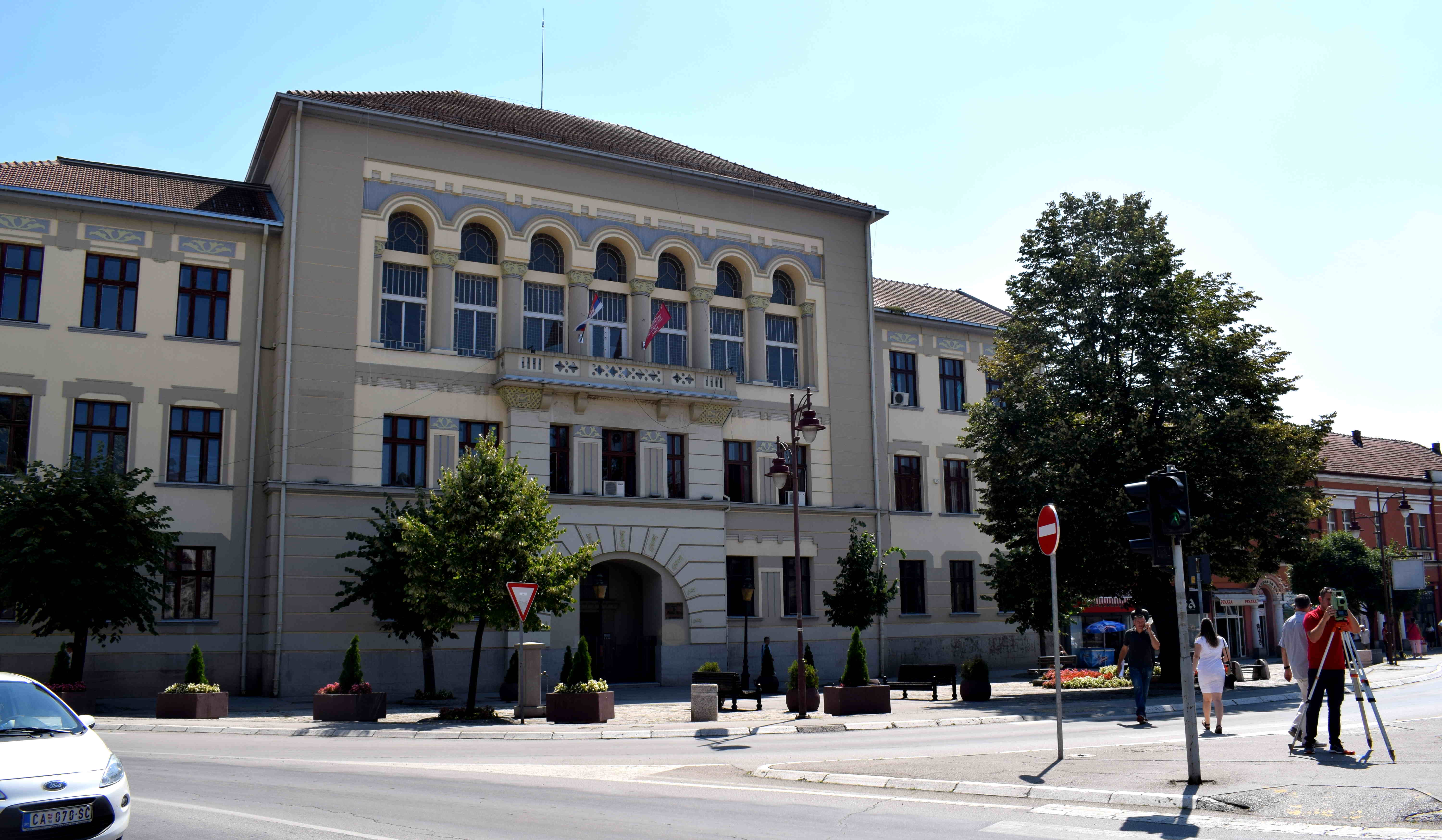 The old architecture of Cacak. It’s interesting to see this old European style architecture in a central Serbian city like Cacak. These buildings were built in the 19th century when Serbia was still nominally part of the Ottoman Empire, but de-facto an independent state. They testify toward the European outlook the population and rulers had at that time, despite centuries of Ottoman rule.
The old architecture of Cacak. It’s interesting to see this old European style architecture in a central Serbian city like Cacak. These buildings were built in the 19th century when Serbia was still nominally part of the Ottoman Empire, but de-facto an independent state. They testify toward the European outlook the population and rulers had at that time, despite centuries of Ottoman rule.
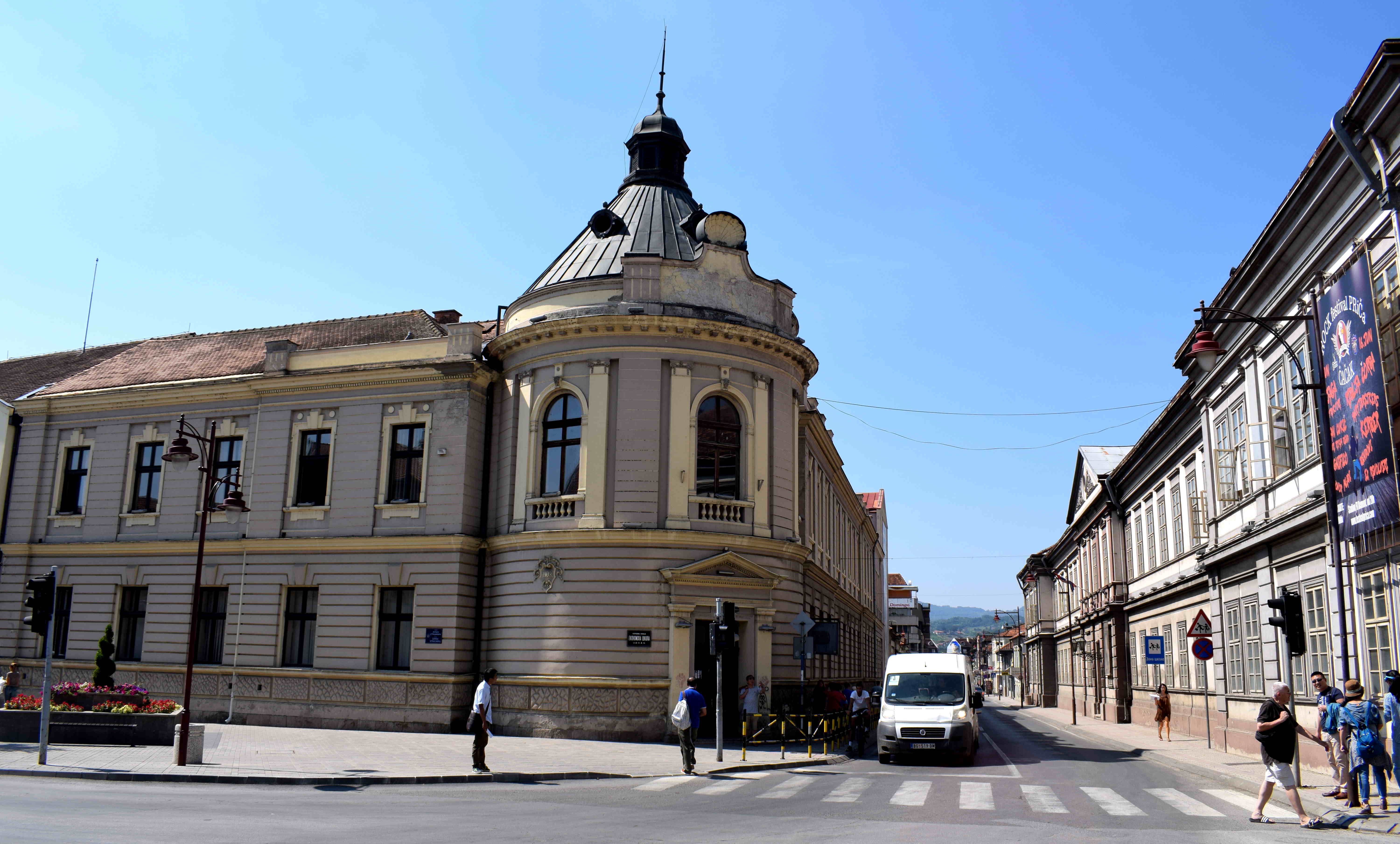 More old buildings.
More old buildings.
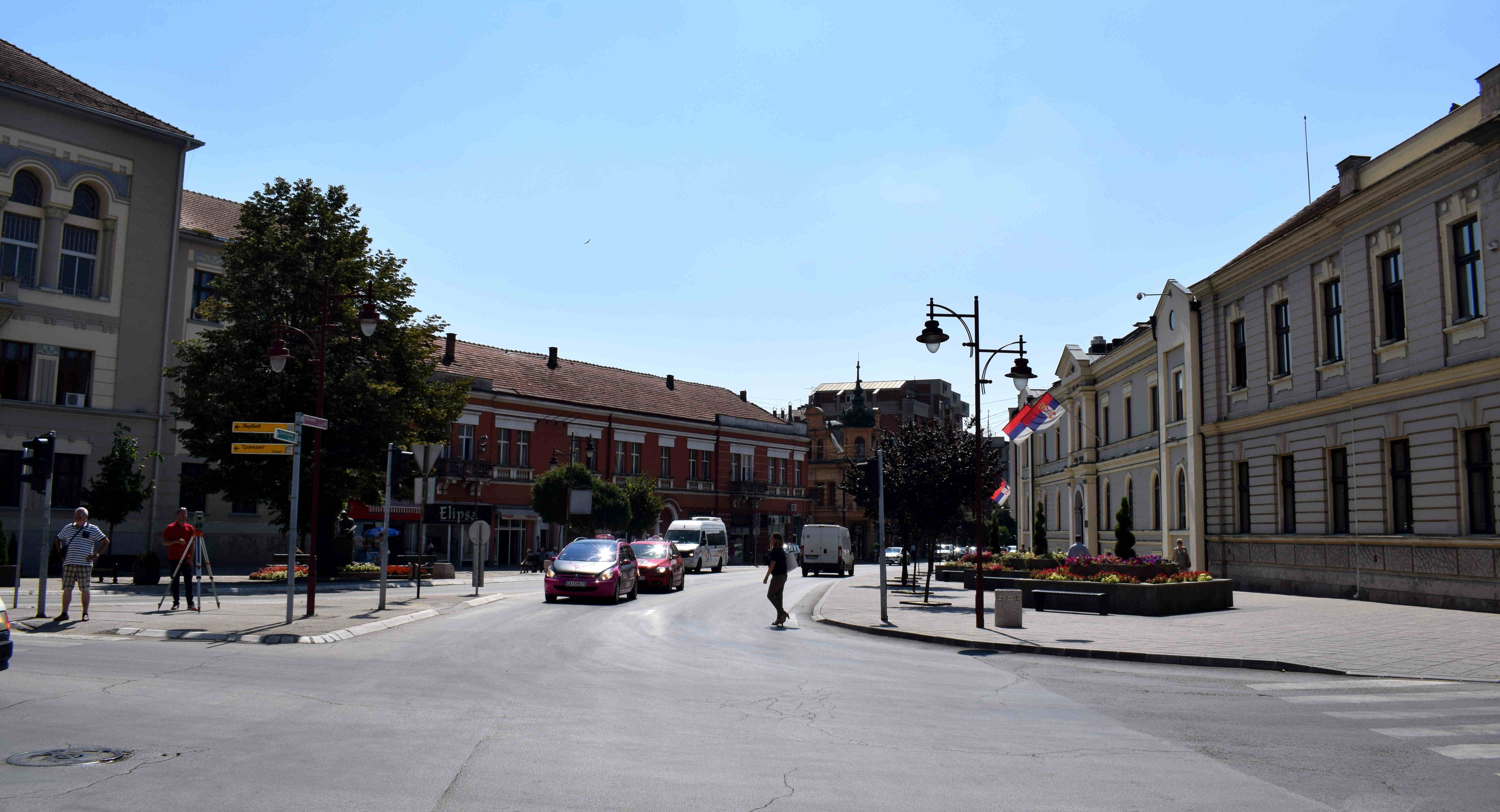 Despite the European buildings, there were traces of Ottoman heritage throughout the town. One is the Cacak National Museum, which is a house built in the traditional Turkish style.
Despite the European buildings, there were traces of Ottoman heritage throughout the town. One is the Cacak National Museum, which is a house built in the traditional Turkish style.
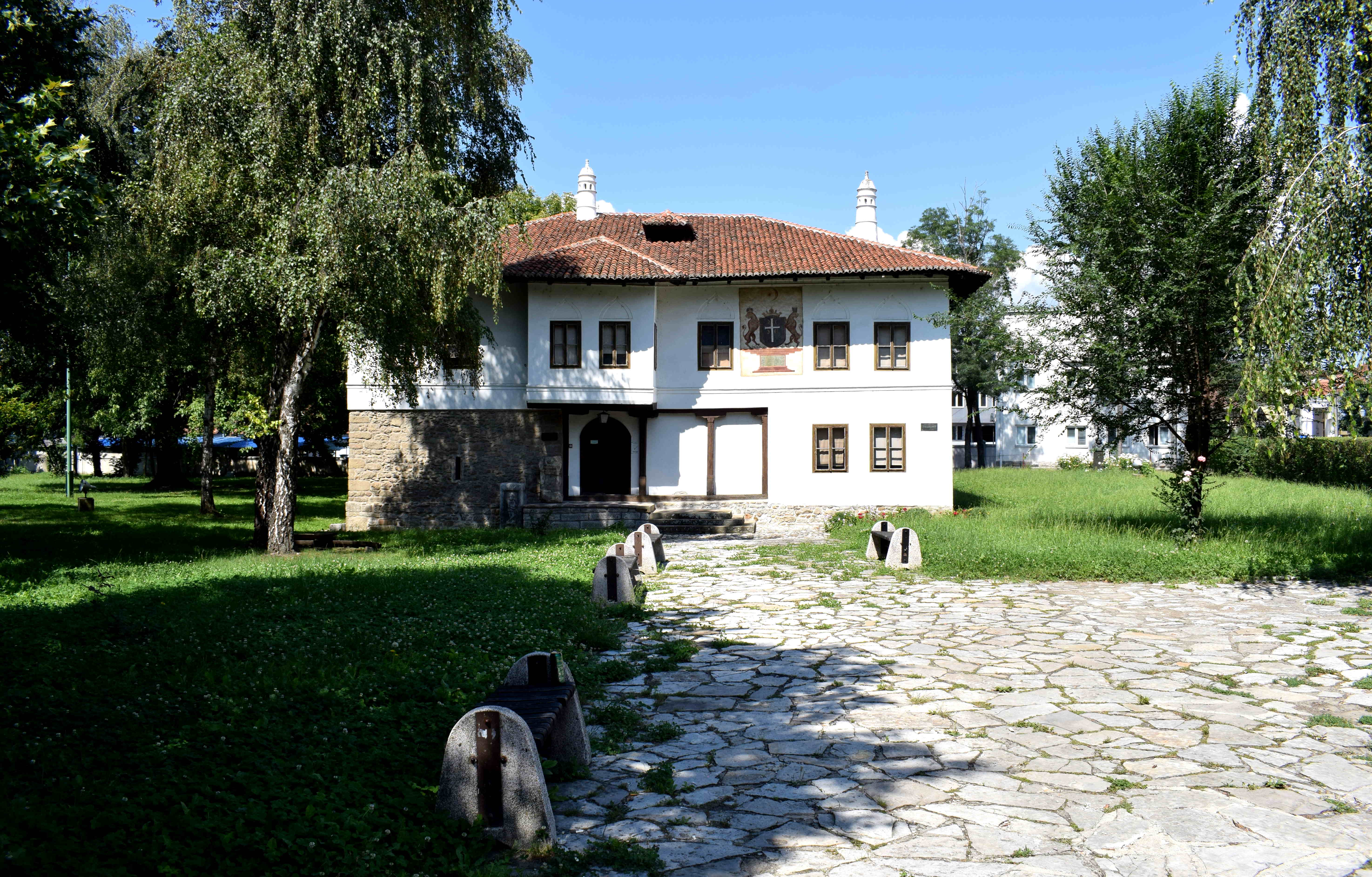 Across the museum is the city’s __________ church, one of the oldest in the city.
Across the museum is the city’s __________ church, one of the oldest in the city.
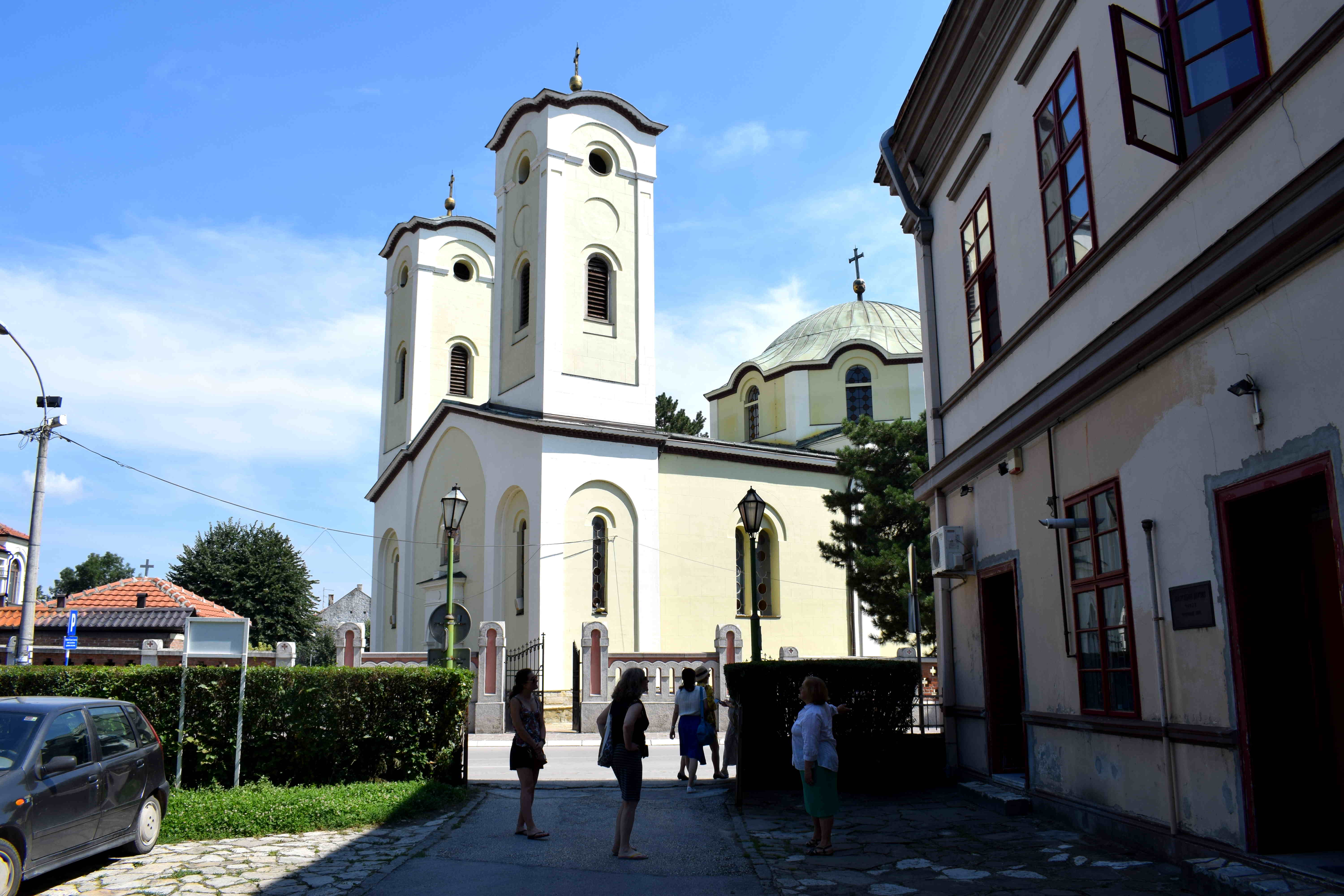 Inside the museum there was a new exhibition on display of student’s from the local high school showcasing their modern art projects.
Inside the museum there was a new exhibition on display of student’s from the local high school showcasing their modern art projects.
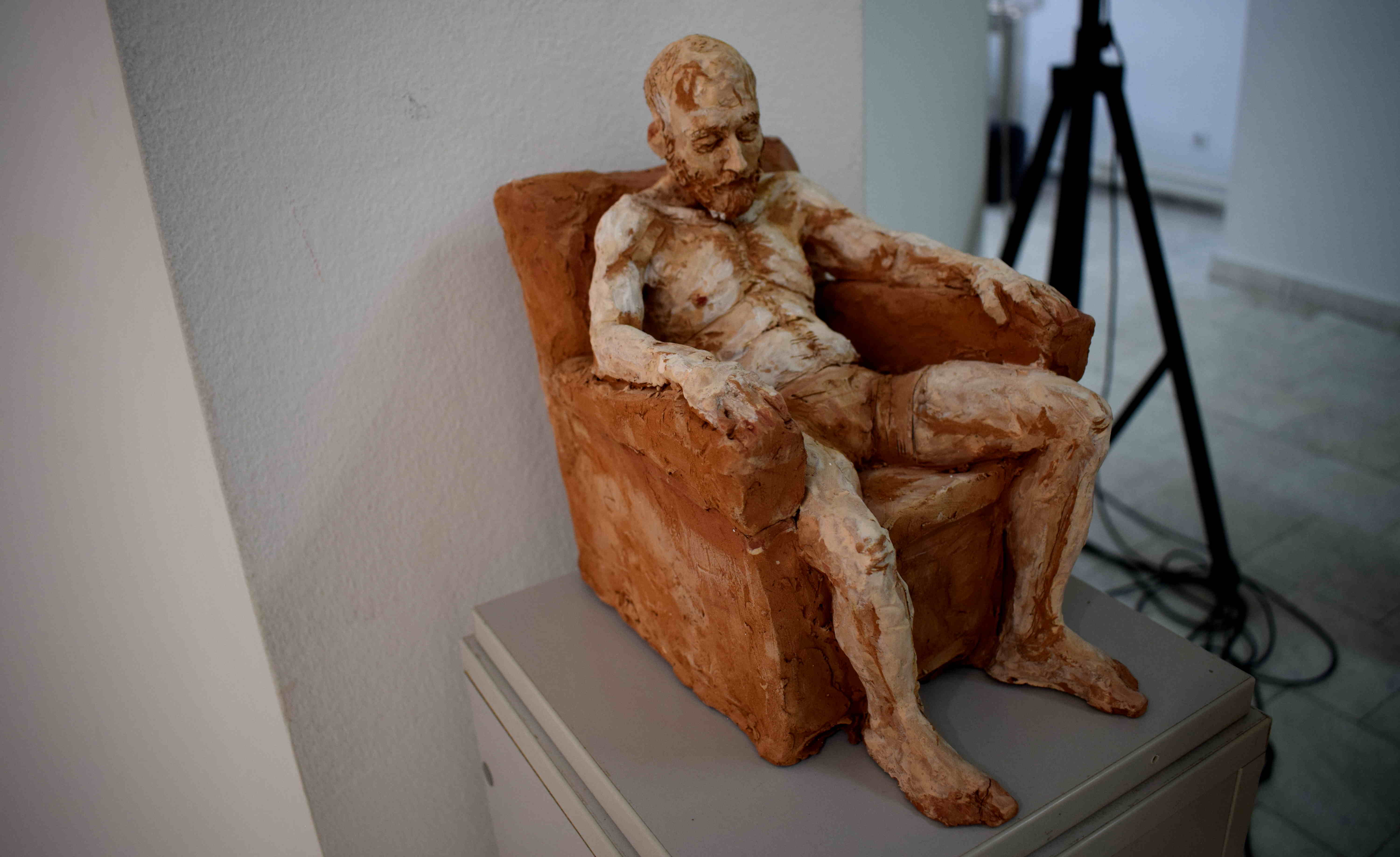 The national museum was originally a ______ built in the ____________. There is not much Ottoman era architecture left in the city, despite Cacak and Serbia being under the rule of the Ottoman Empire for centuries.
The national museum was originally a ______ built in the ____________. There is not much Ottoman era architecture left in the city, despite Cacak and Serbia being under the rule of the Ottoman Empire for centuries.
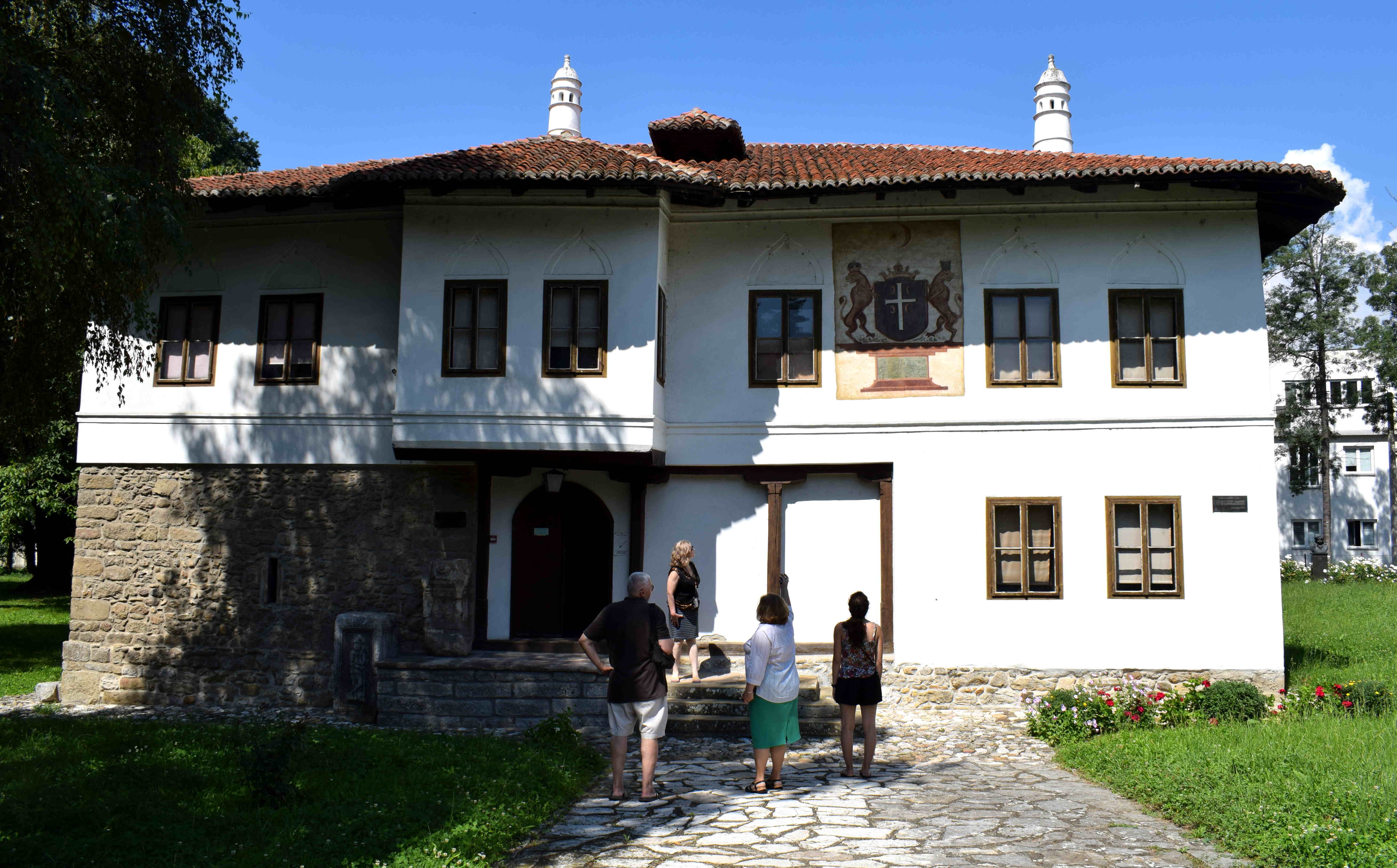 One of the oldest painted markings of the Serbian emblem with three ‘S’ written in the Cyrillic alphabet is on the building of the museum.
One of the oldest painted markings of the Serbian emblem with three ‘S’ written in the Cyrillic alphabet is on the building of the museum.
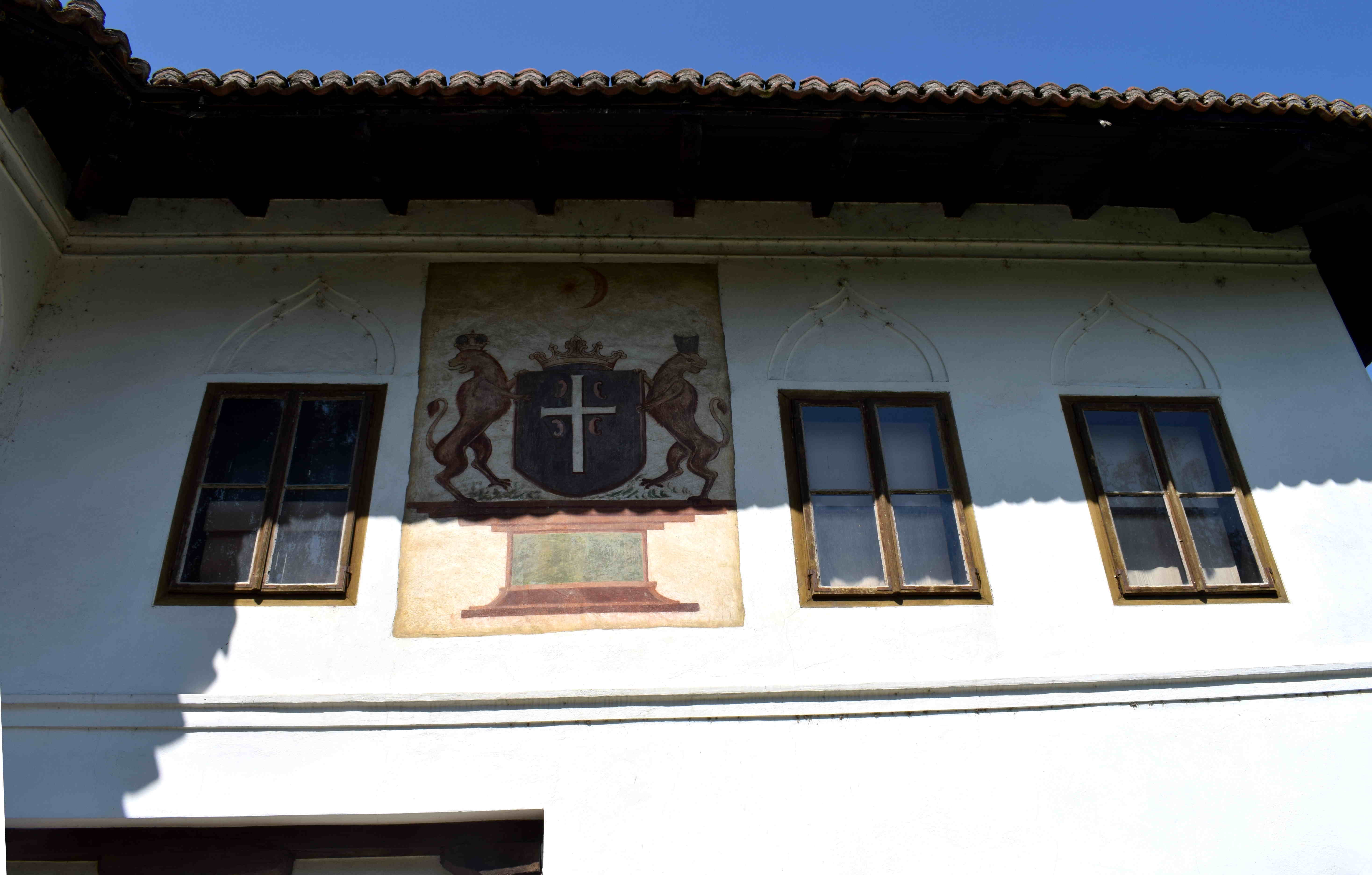 Some old engraved stones in front of the museum.
Some old engraved stones in front of the museum.
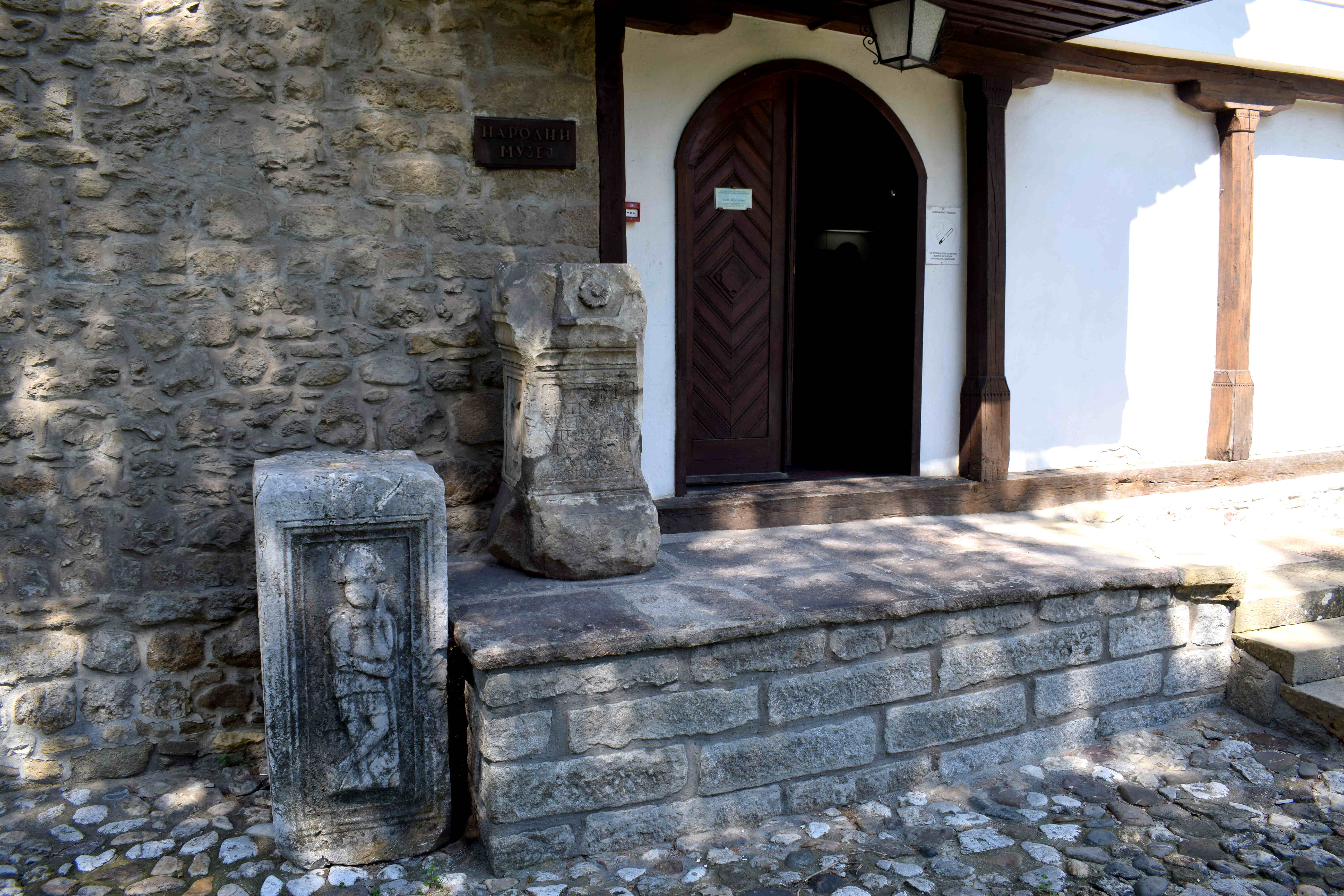 Inside the museum you had old pictures of Cacak. Here is Cacak at the start of the 19th century where the church stands today.
Inside the museum you had old pictures of Cacak. Here is Cacak at the start of the 19th century where the church stands today.
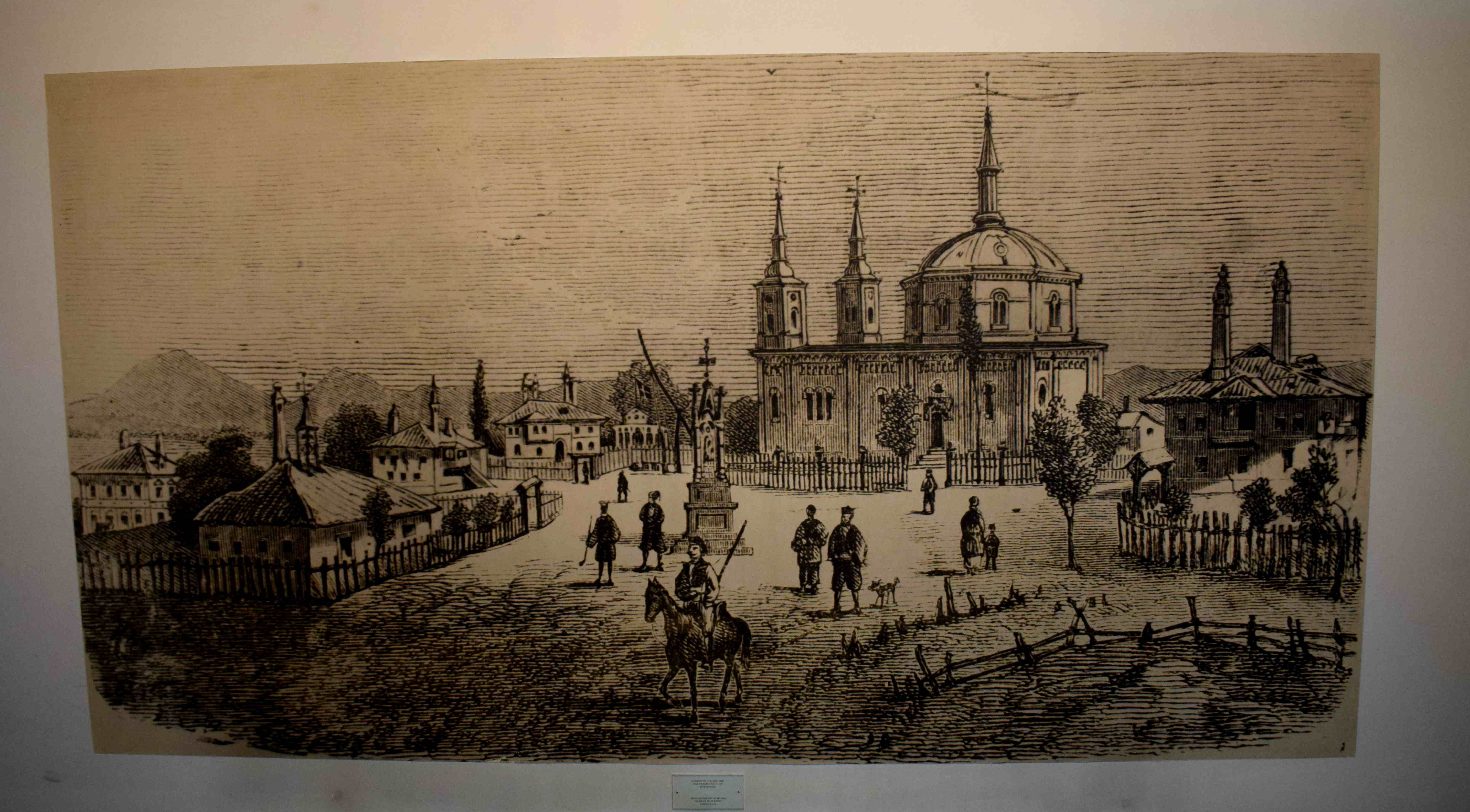 A handrail made of old carved stone.
A handrail made of old carved stone.
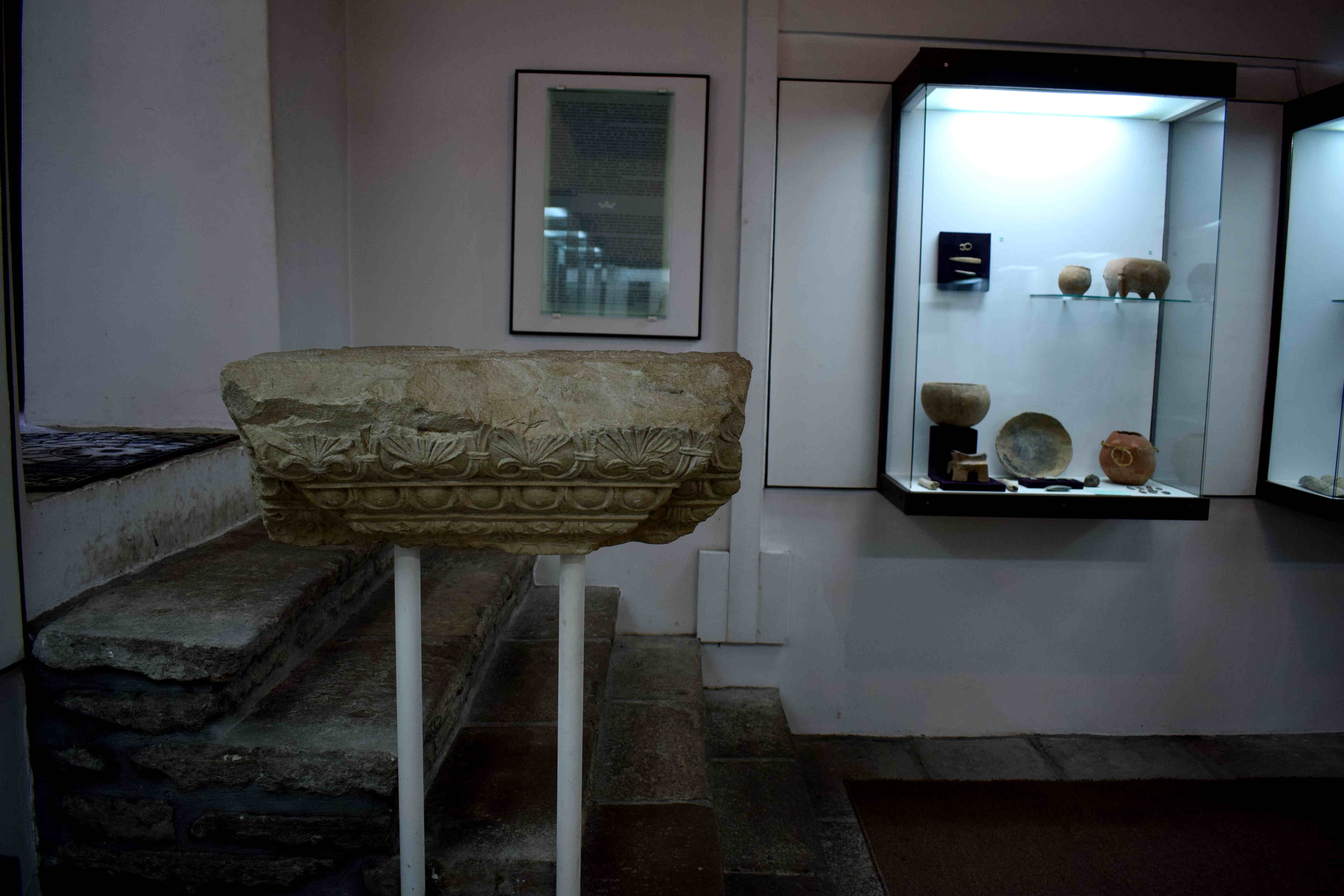 The ceilings, walls and floors of the rooms were made from wood that was over a century old. The rooms were small, but left in exactly the same state that they were in 200 years ago when people lived in the building.
The ceilings, walls and floors of the rooms were made from wood that was over a century old. The rooms were small, but left in exactly the same state that they were in 200 years ago when people lived in the building.
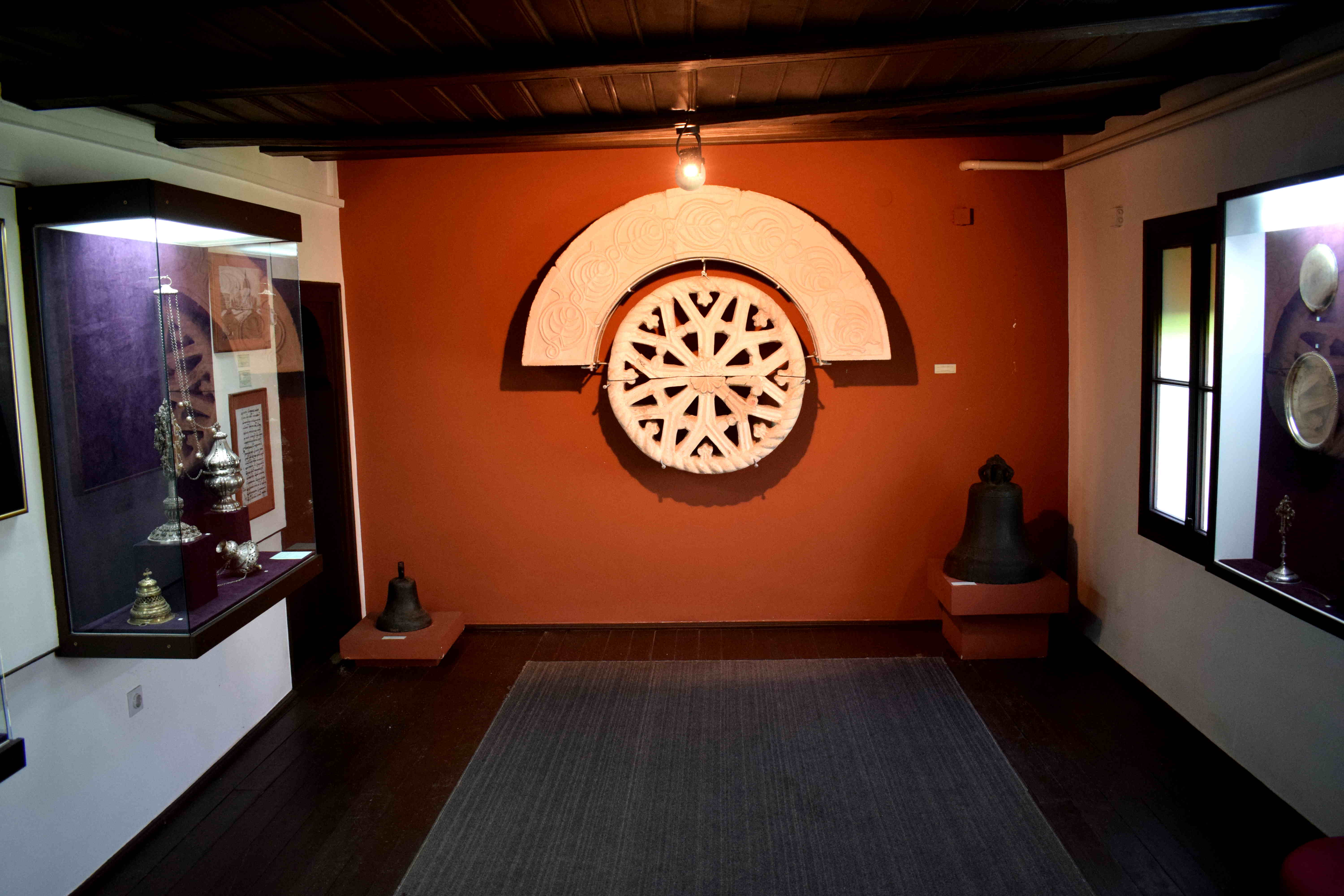 An old picture of the church in Cacak.
An old picture of the church in Cacak.
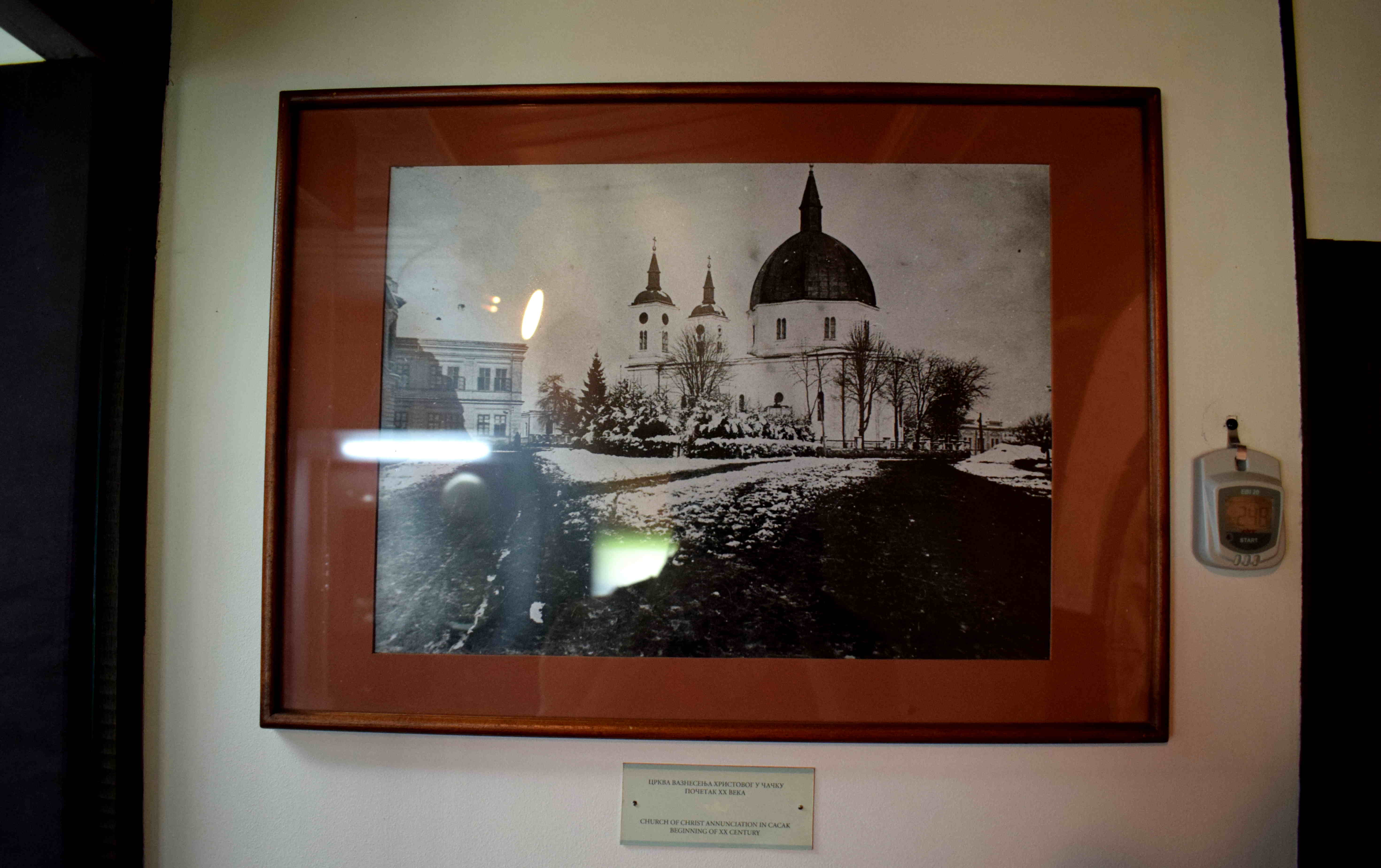 Old weaponry and swords of Slavs who settled this area of the Balkans in the 6th century.
Old weaponry and swords of Slavs who settled this area of the Balkans in the 6th century.
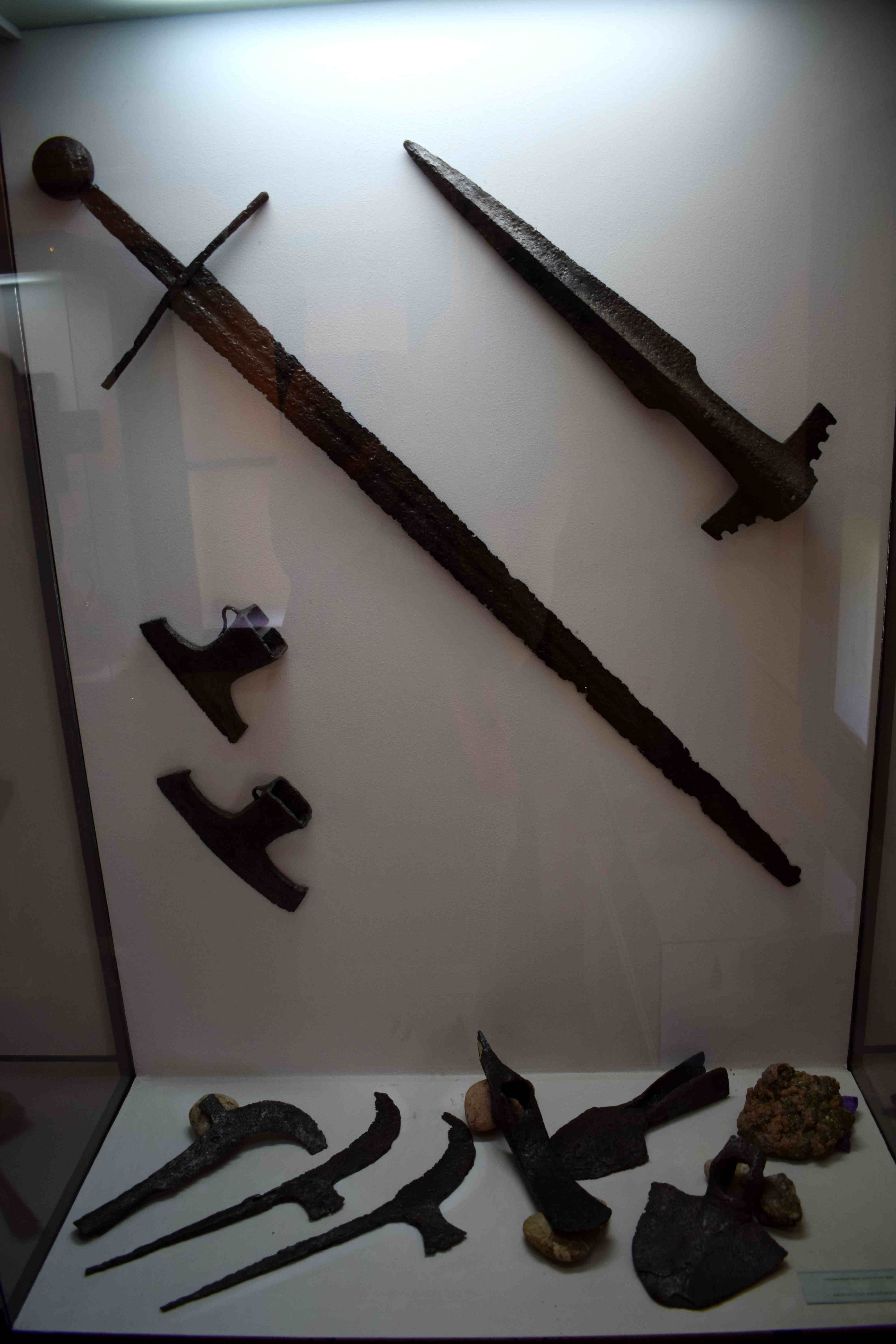 Uniforms of the Serbian army in the early 20th century.
Uniforms of the Serbian army in the early 20th century.
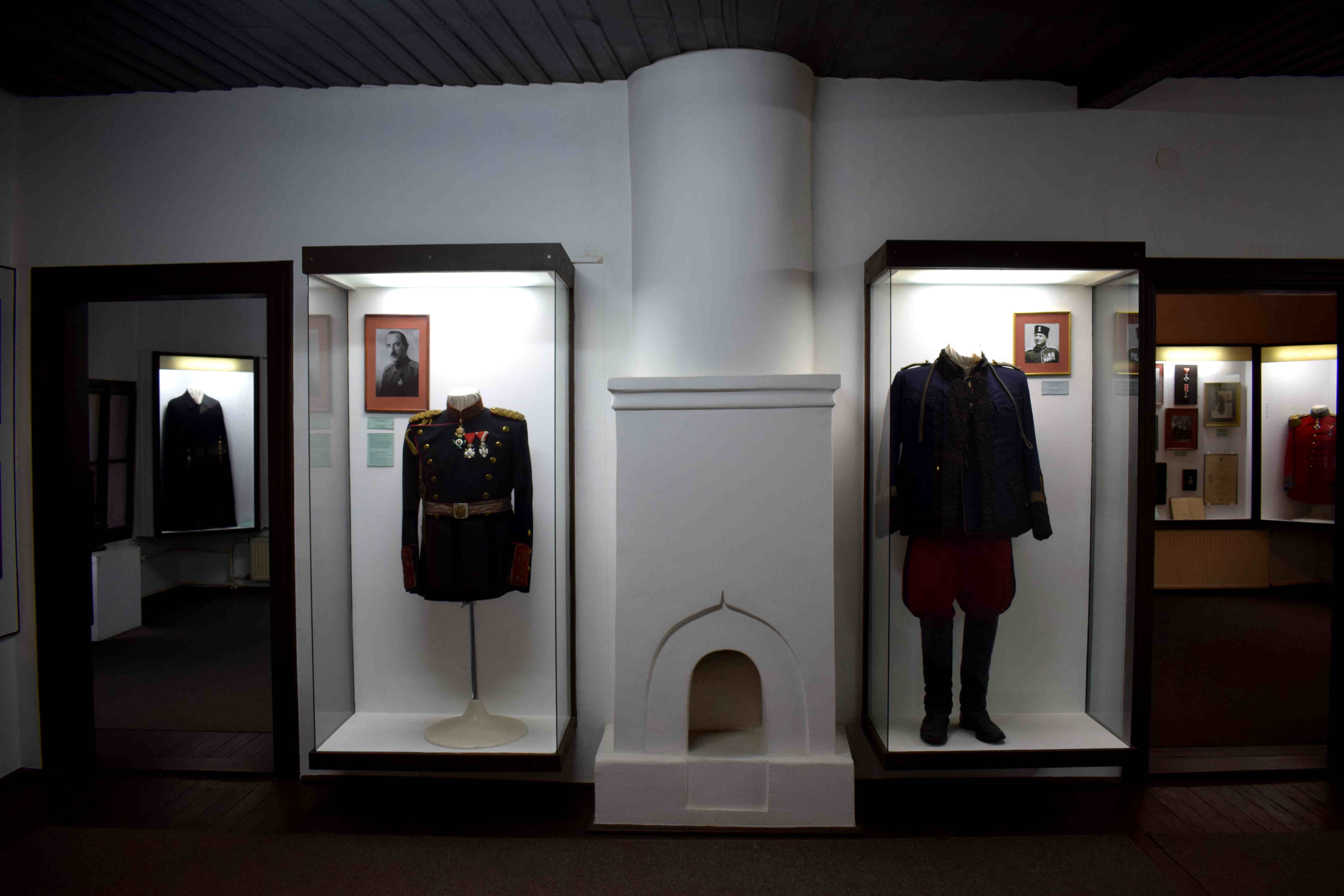 More old photos of Cacak.
More old photos of Cacak.
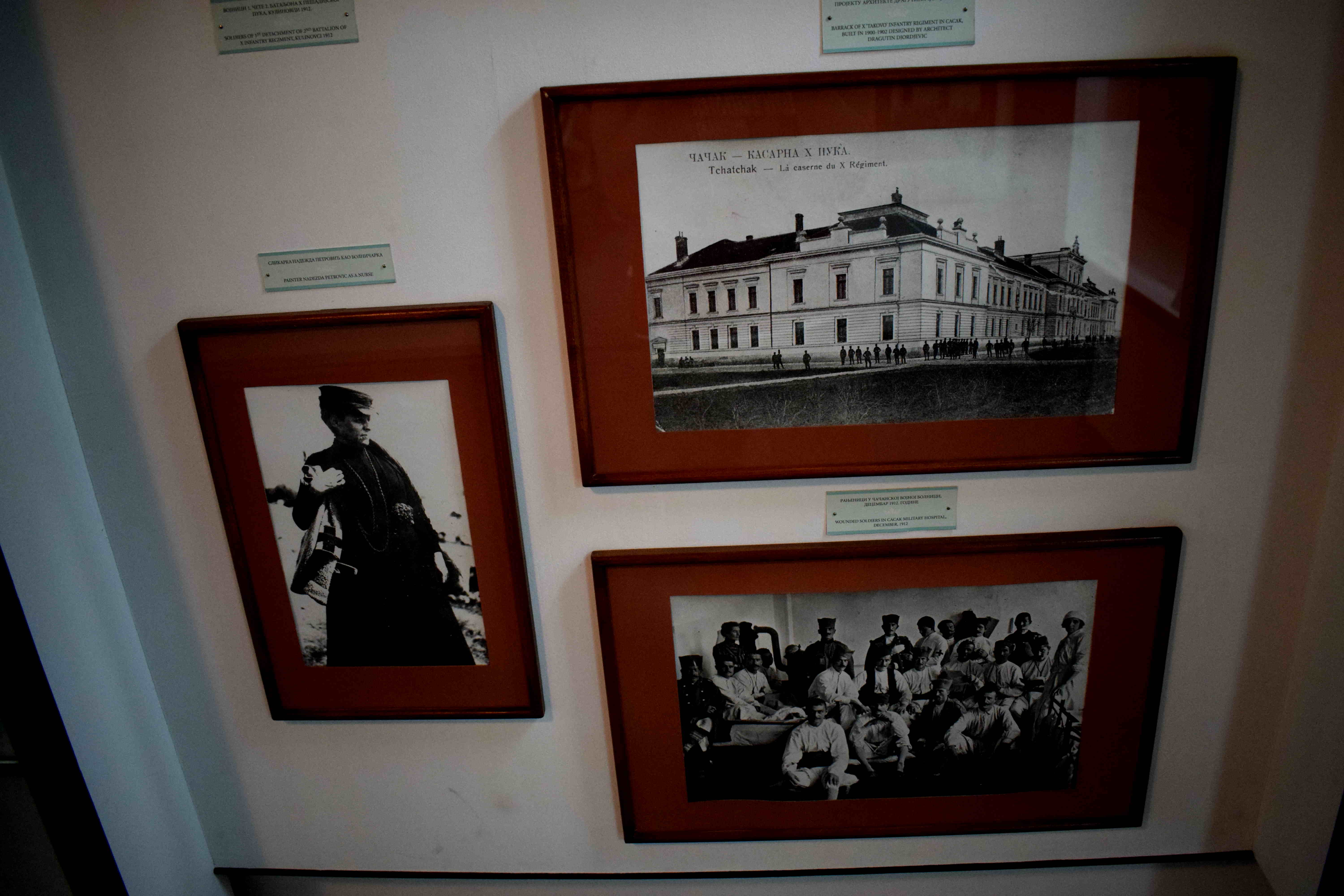 Another old photo of Cacak and the church.
Another old photo of Cacak and the church.
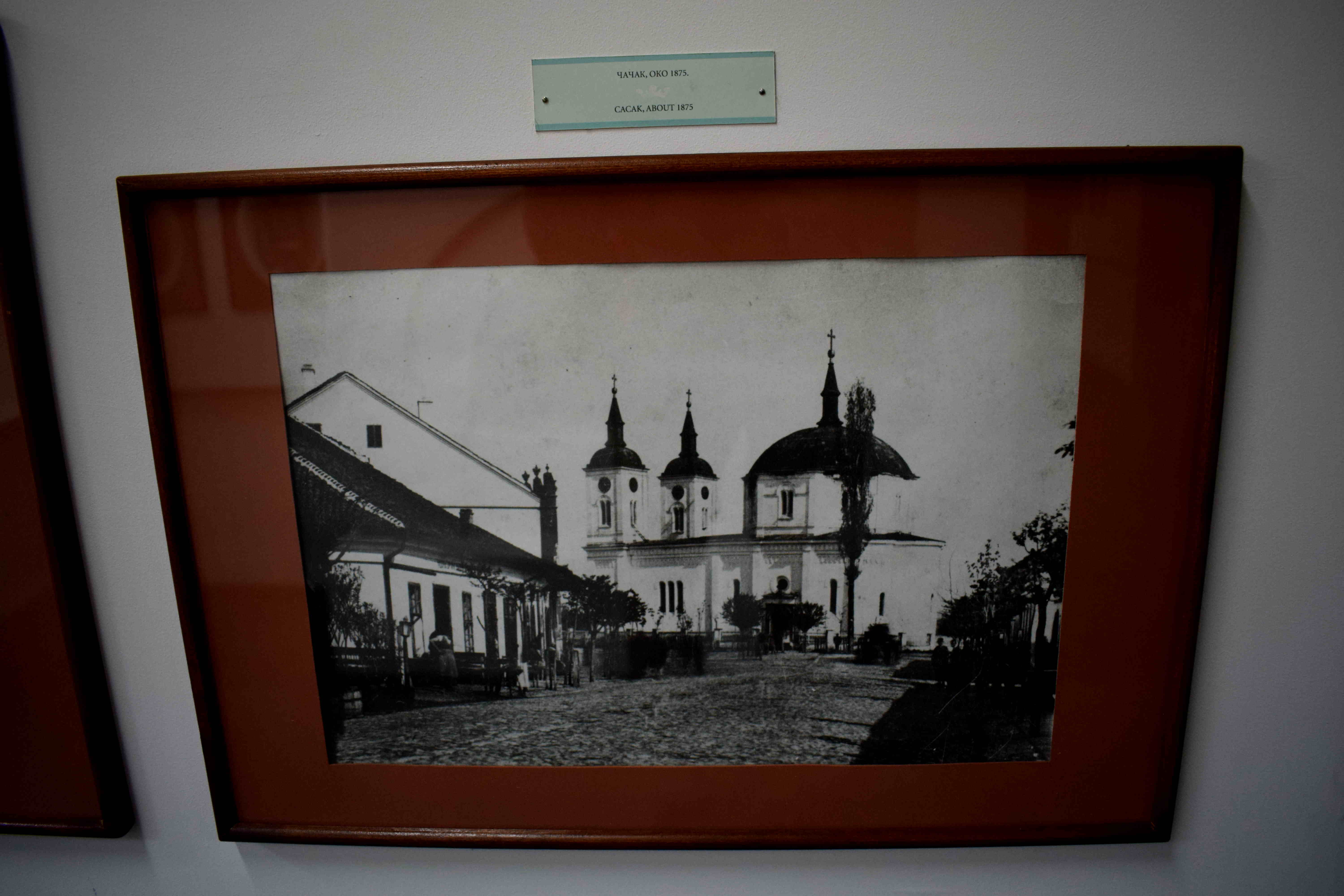
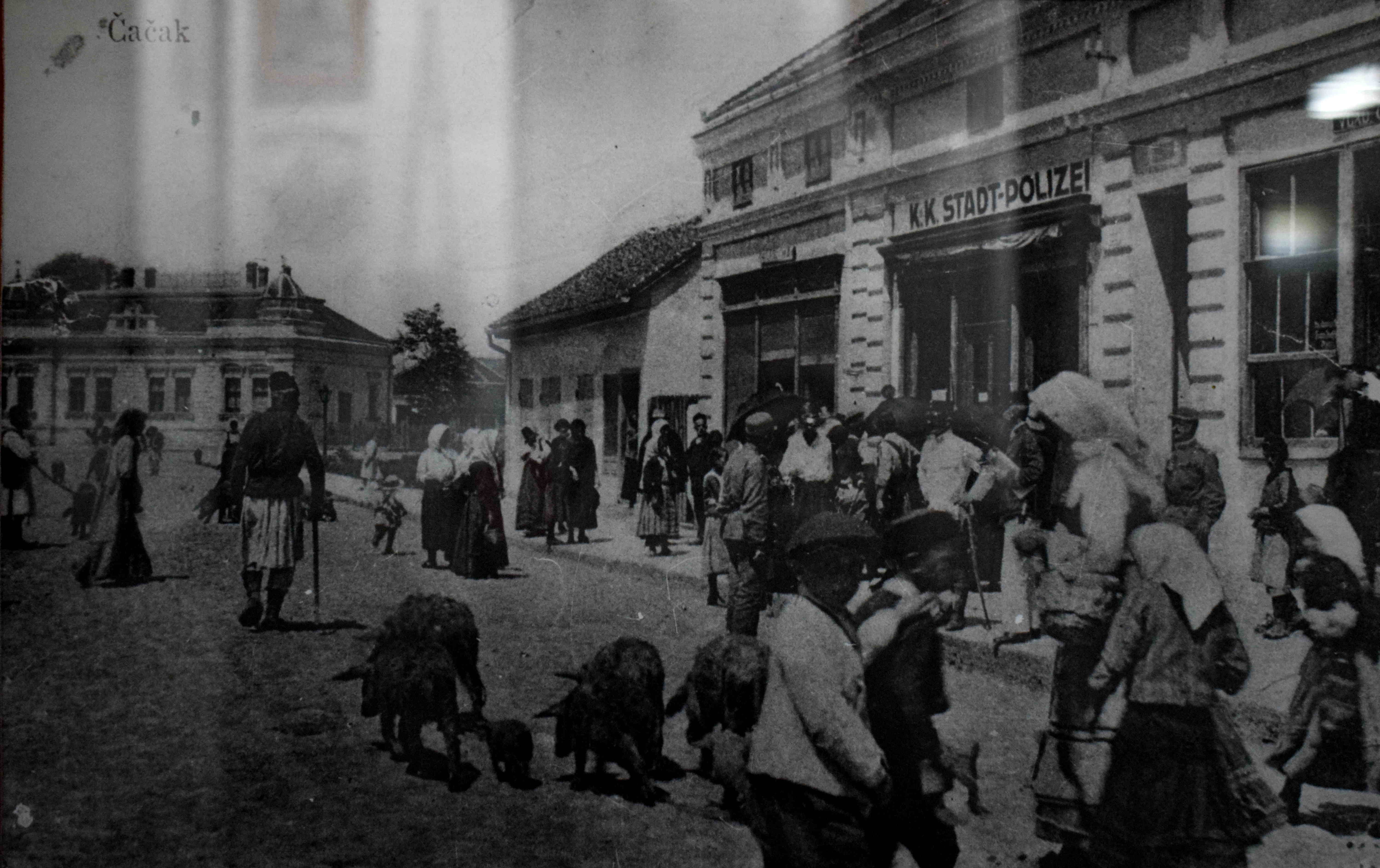 Outside of the museum, looking away from the building.
Outside of the museum, looking away from the building.
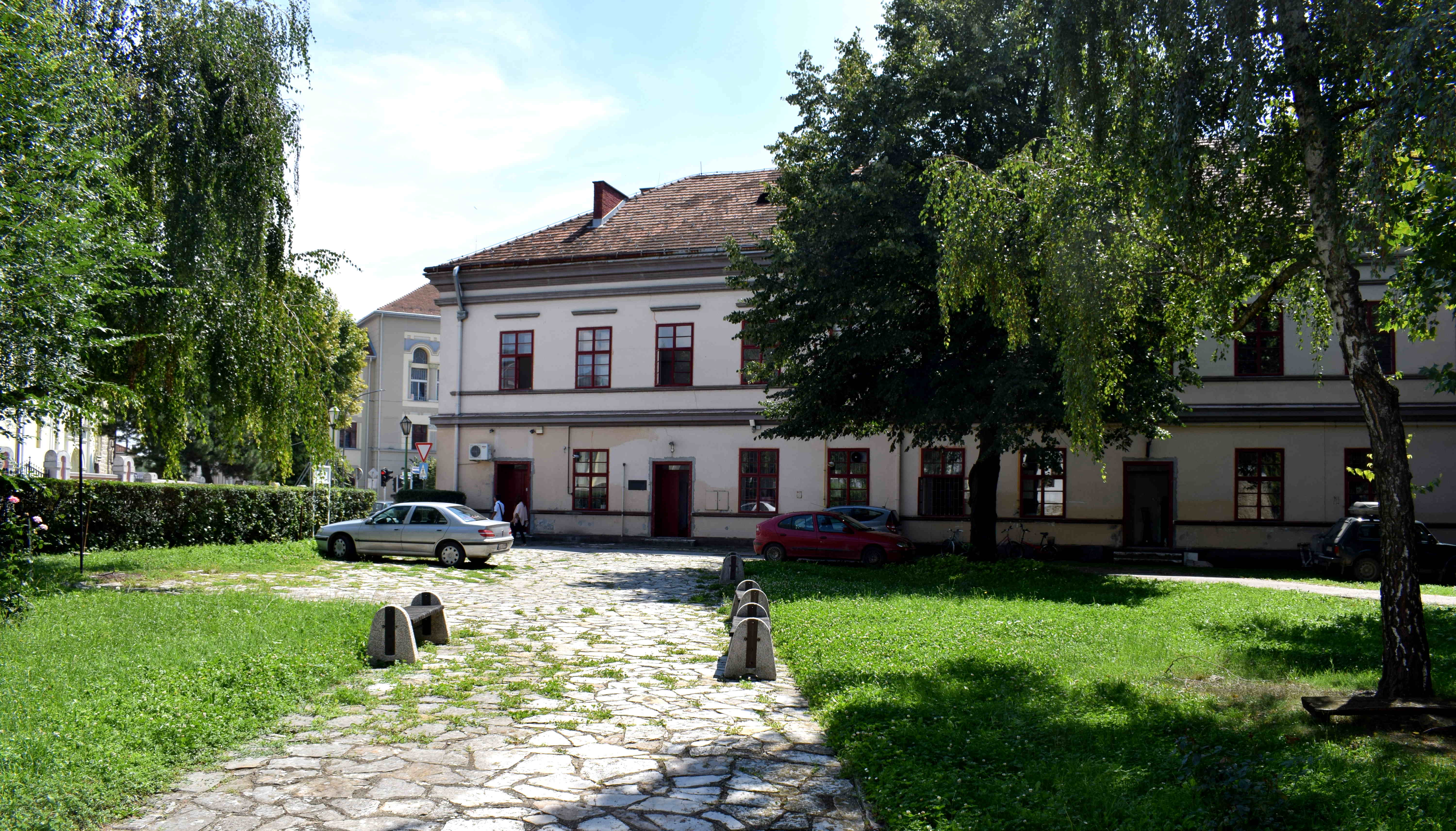 Outside the museum.
Outside the museum.
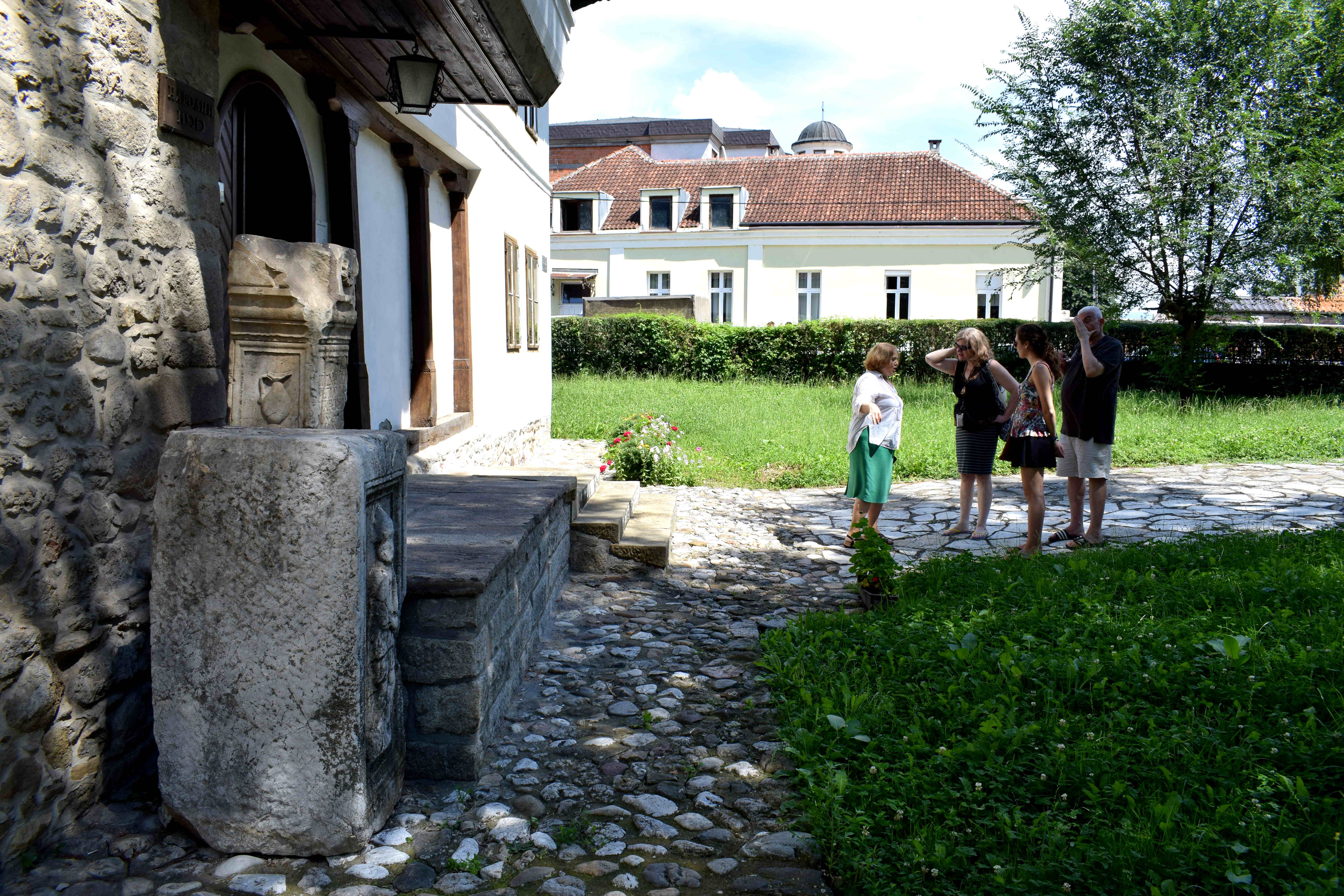 Buildings outside the church in Cacak.
Buildings outside the church in Cacak.
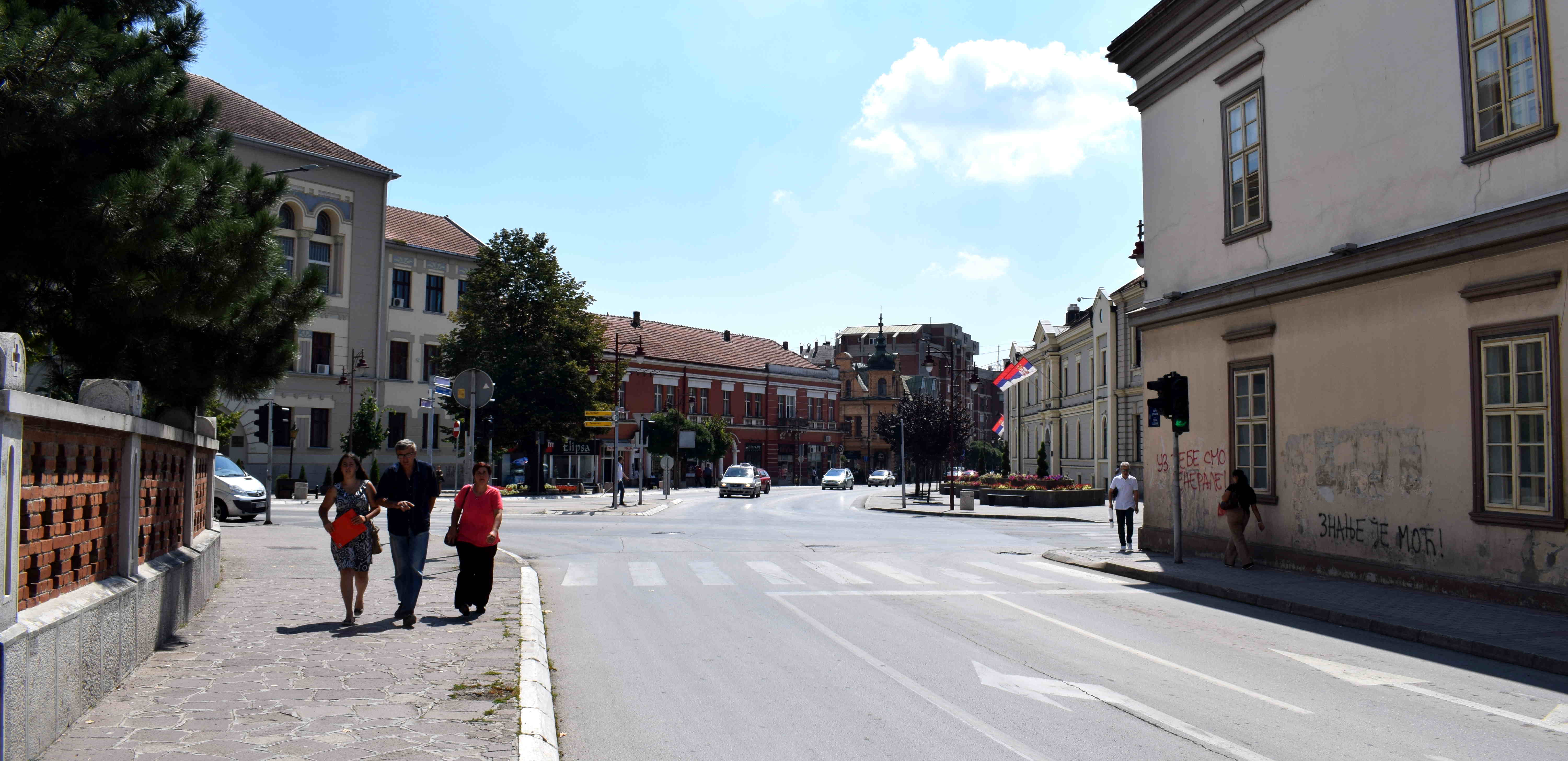 Inside the church.
Inside the church.
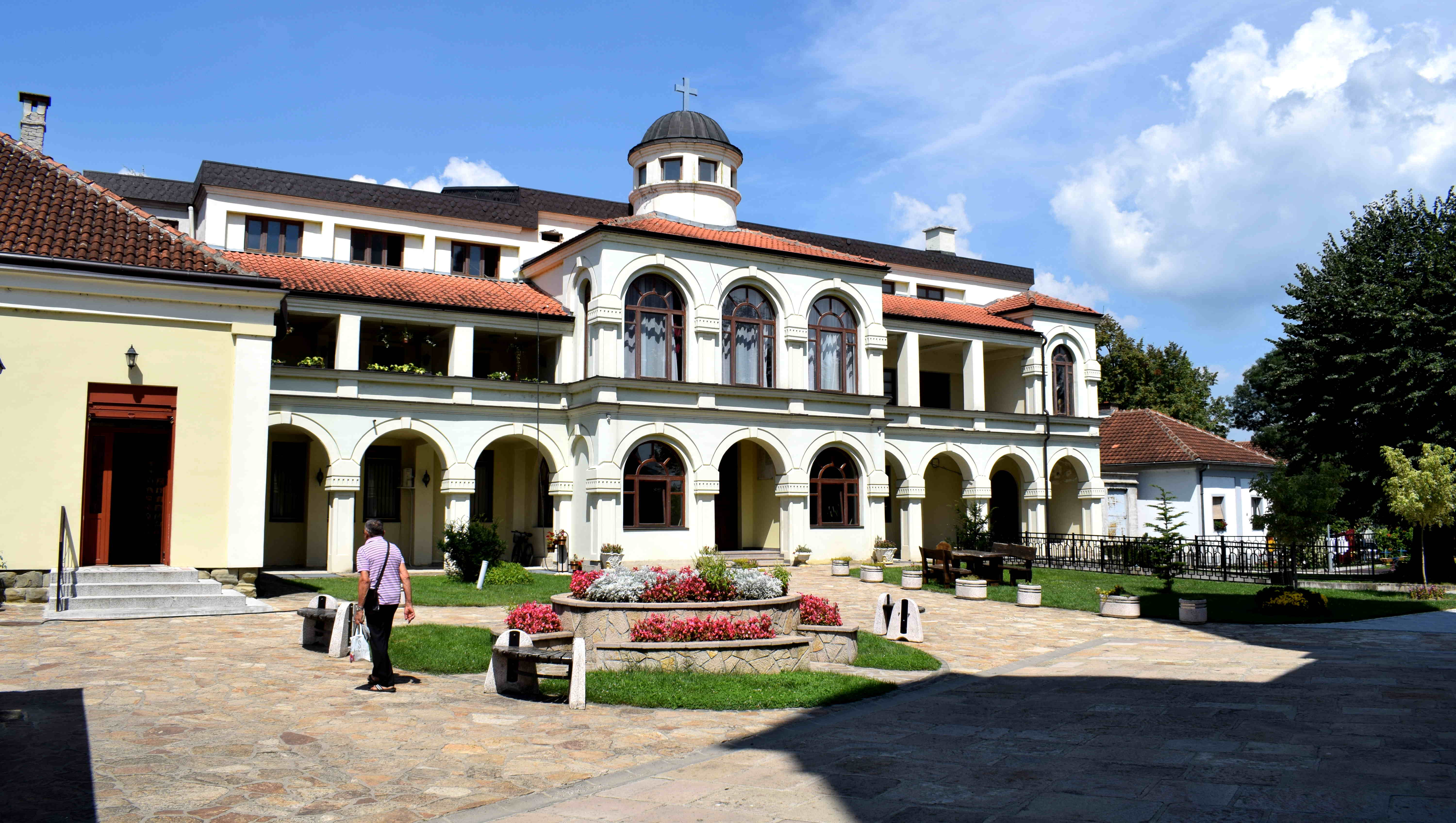 Where the candles are lit for loved and deceased ones.
Where the candles are lit for loved and deceased ones.
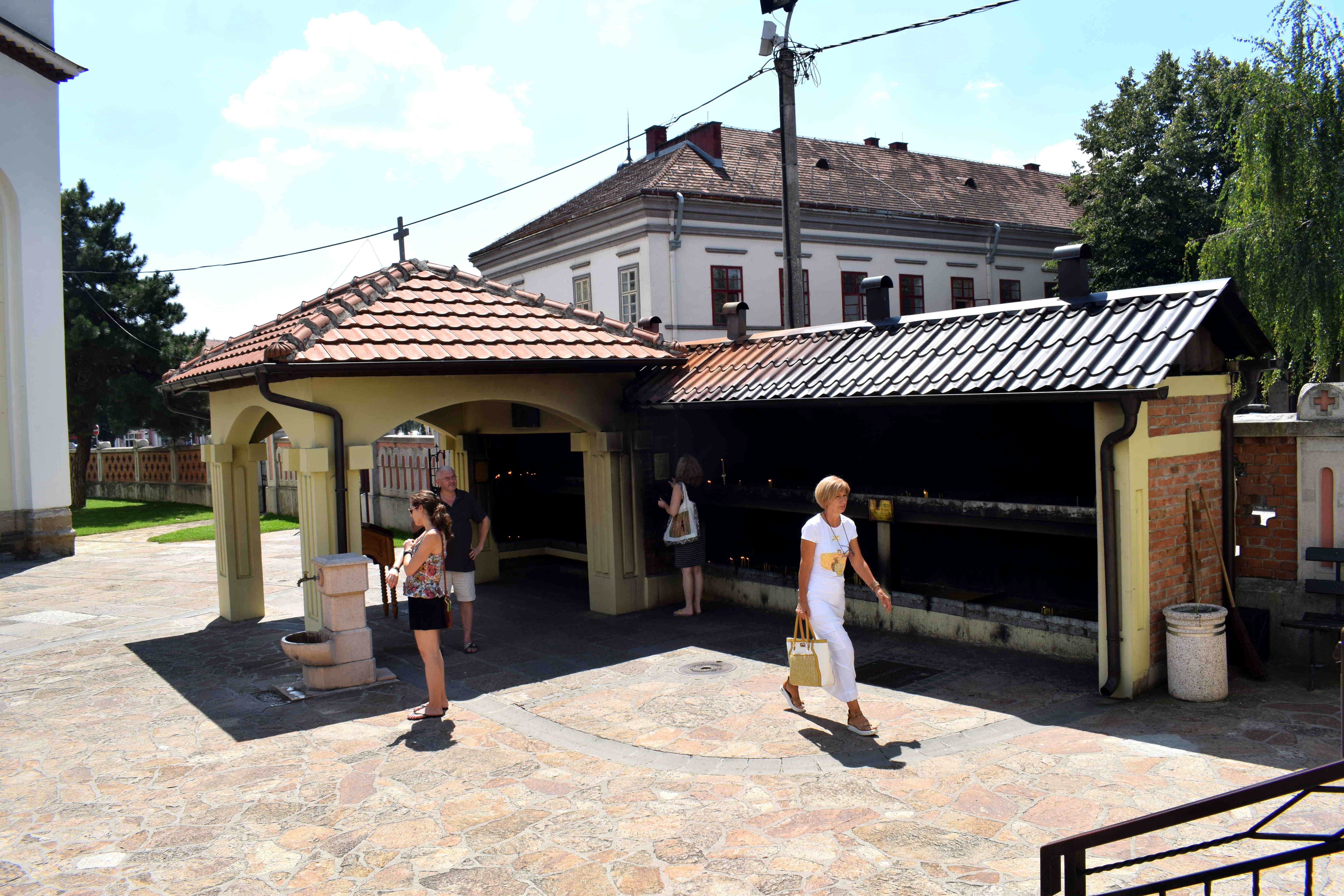 The entrance into the church.
The entrance into the church.
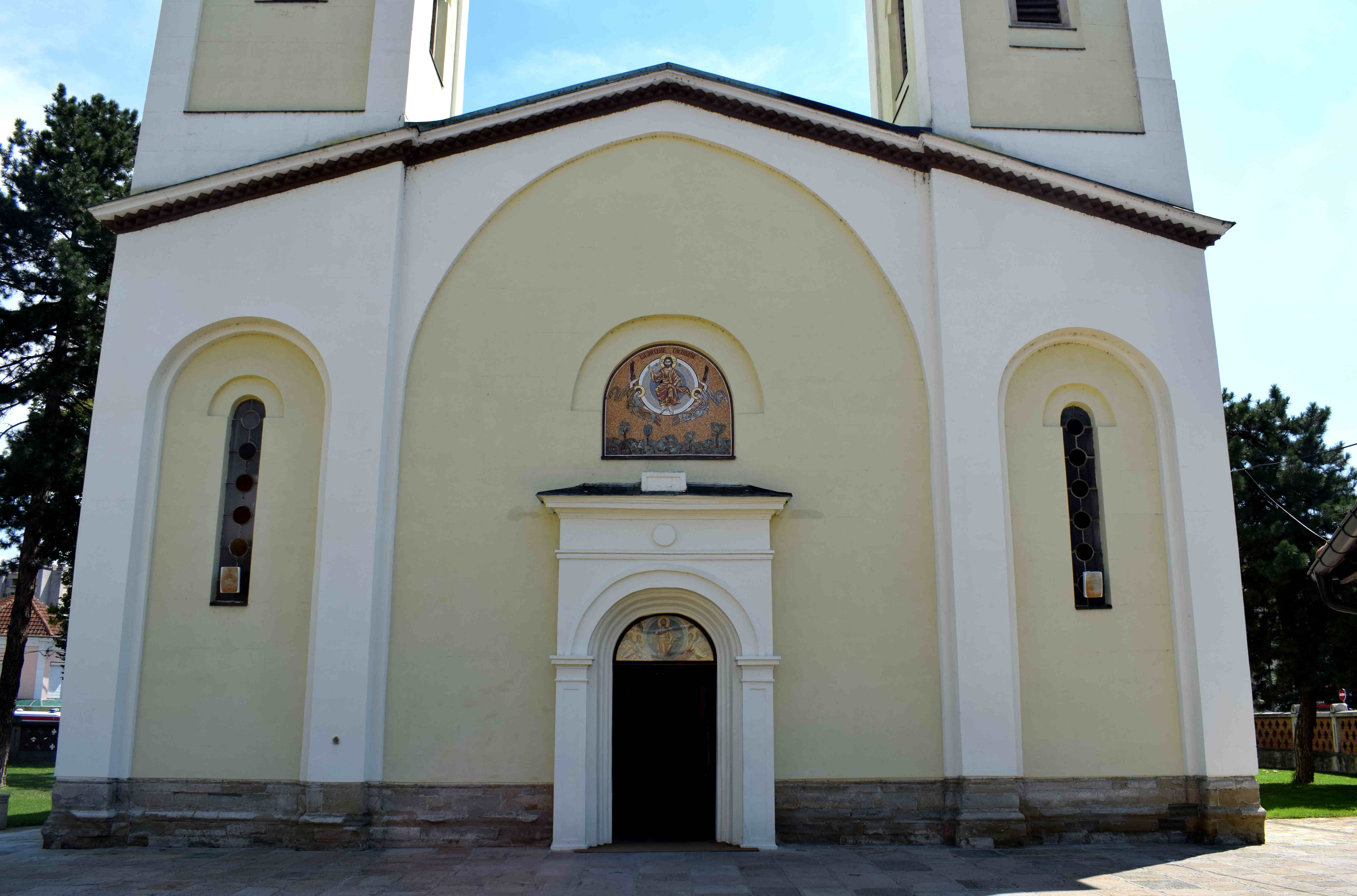 Candles for deceased ones.
Candles for deceased ones.
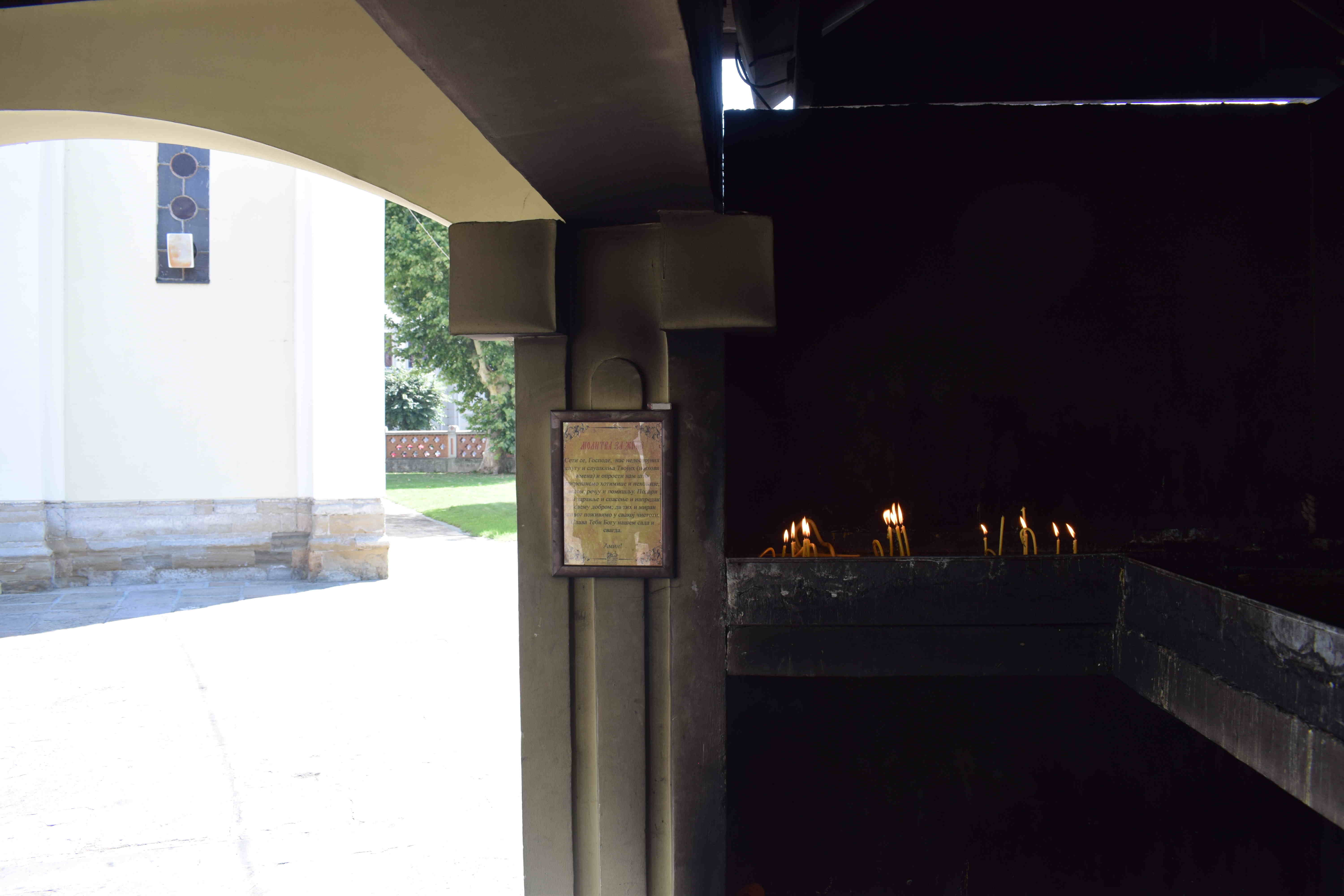
Looking away from the candles toward the church grounds.
 “A prayer for deceased ones”
“A prayer for deceased ones”
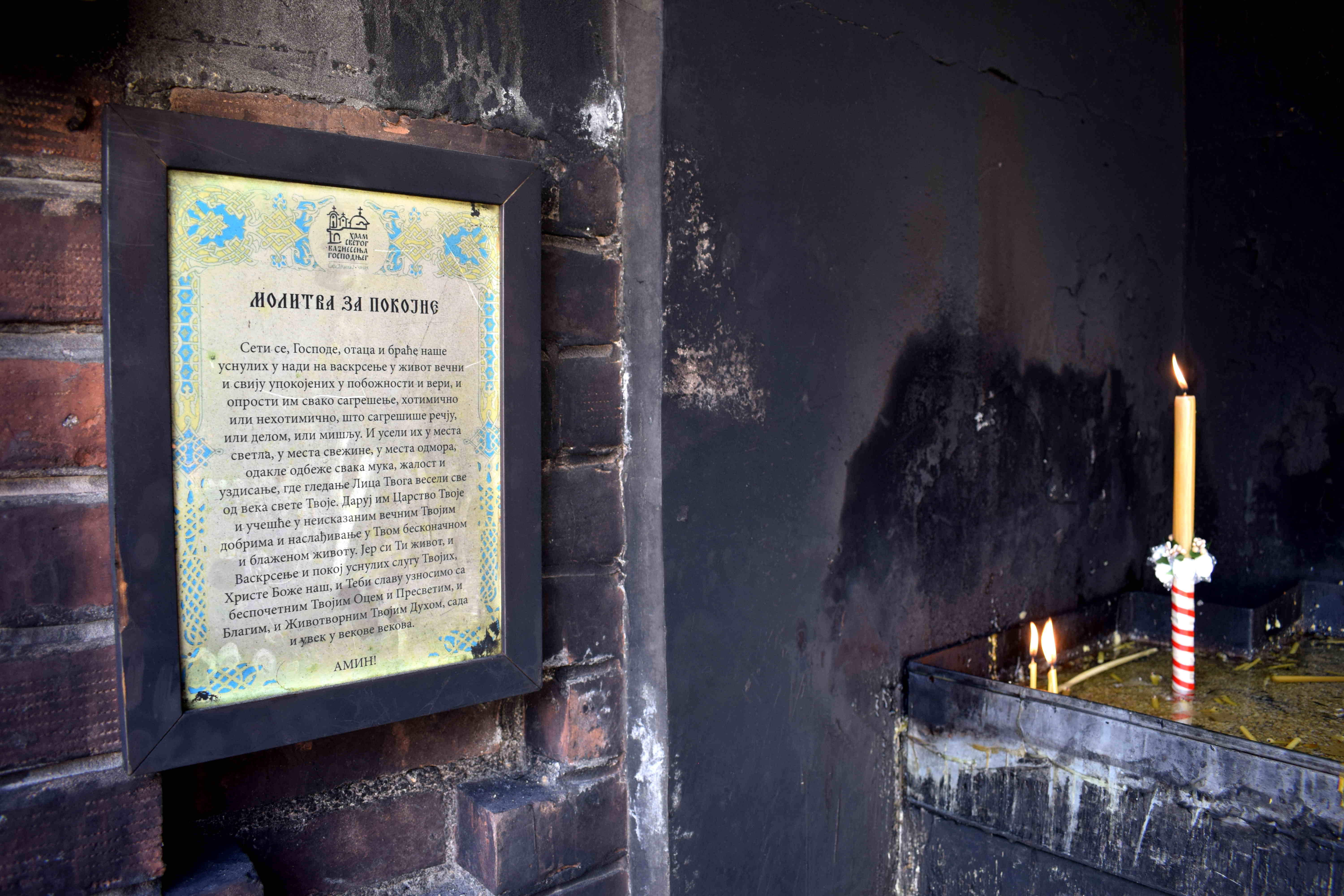 A short walk away from the city center toward the Ibar River you begin to see residential homes where people live in Cacak. These homes are beautiful one or two story homes that are well-maintained, with nice gardens, rooftops and lawns. You don’t get any sense of this area being a poor area of Europe or Serbia. It’s a shame because salaries really are low in the Serbia, but despite this, people live lives that are in many ways much richer and rewarding than in the United States.
A short walk away from the city center toward the Ibar River you begin to see residential homes where people live in Cacak. These homes are beautiful one or two story homes that are well-maintained, with nice gardens, rooftops and lawns. You don’t get any sense of this area being a poor area of Europe or Serbia. It’s a shame because salaries really are low in the Serbia, but despite this, people live lives that are in many ways much richer and rewarding than in the United States.
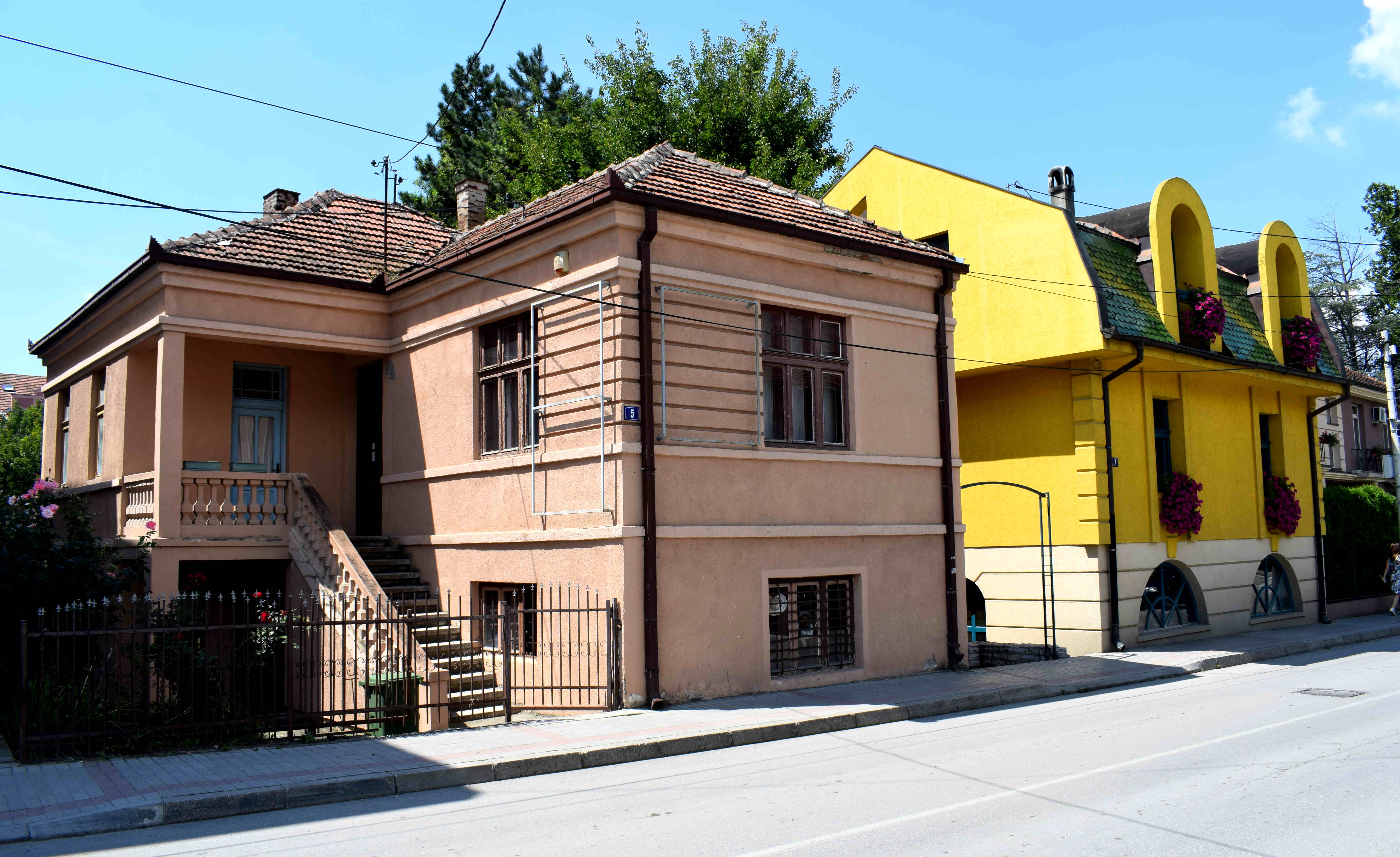 It’s nice to see these homes still standing. In many parts of the United States, Russia or Europe, cities are tearing down these homes to build ugly, modern apartment blocks that ruin the skyline of cities and are out of place compared to the rest of the architecture of the city. In Cacak at first glance it looks like the city is keeping track of its history and heritage and preserving its historical buildings.
It’s nice to see these homes still standing. In many parts of the United States, Russia or Europe, cities are tearing down these homes to build ugly, modern apartment blocks that ruin the skyline of cities and are out of place compared to the rest of the architecture of the city. In Cacak at first glance it looks like the city is keeping track of its history and heritage and preserving its historical buildings.
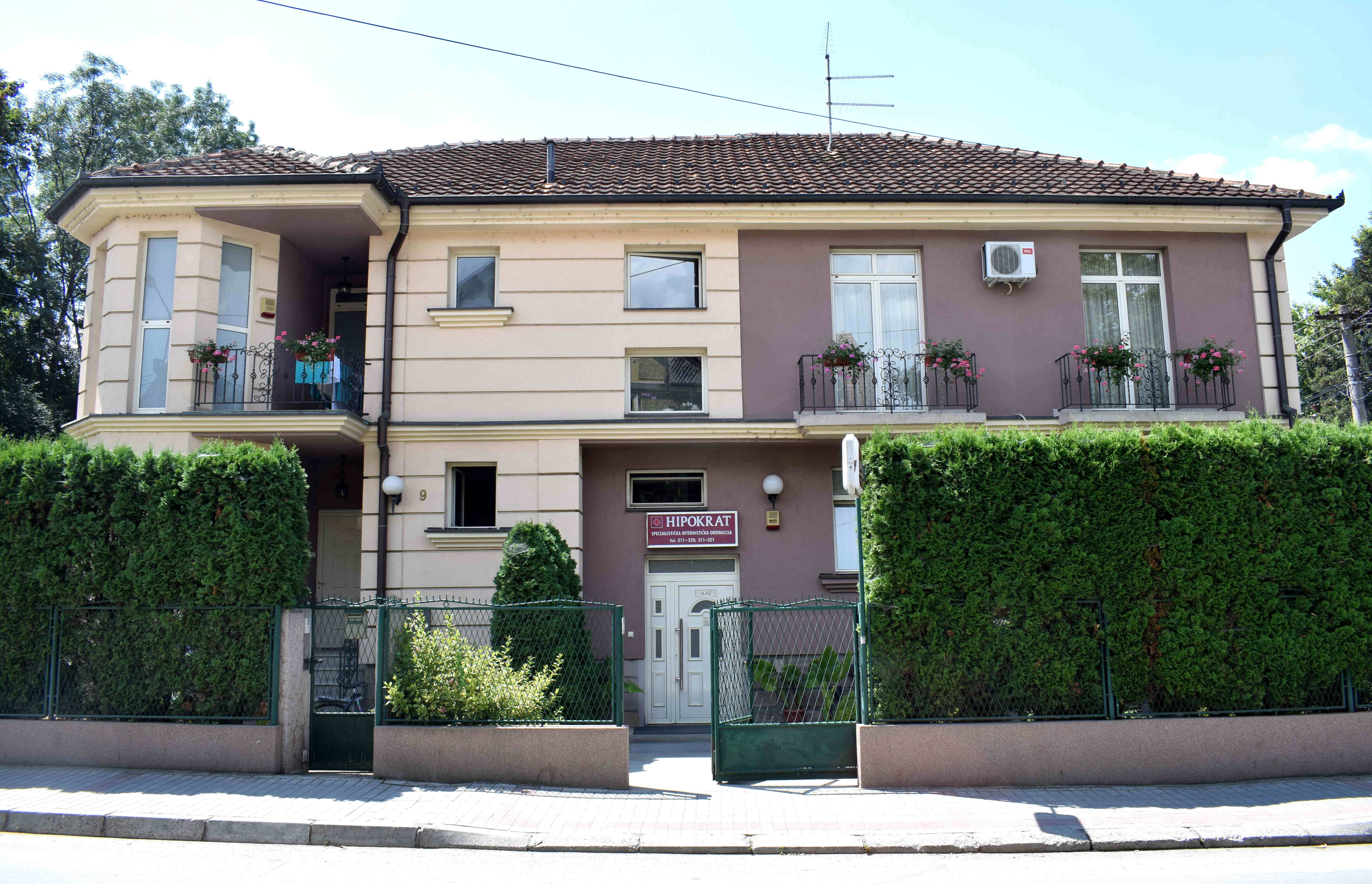 More examples of Cacak homes.
More examples of Cacak homes.
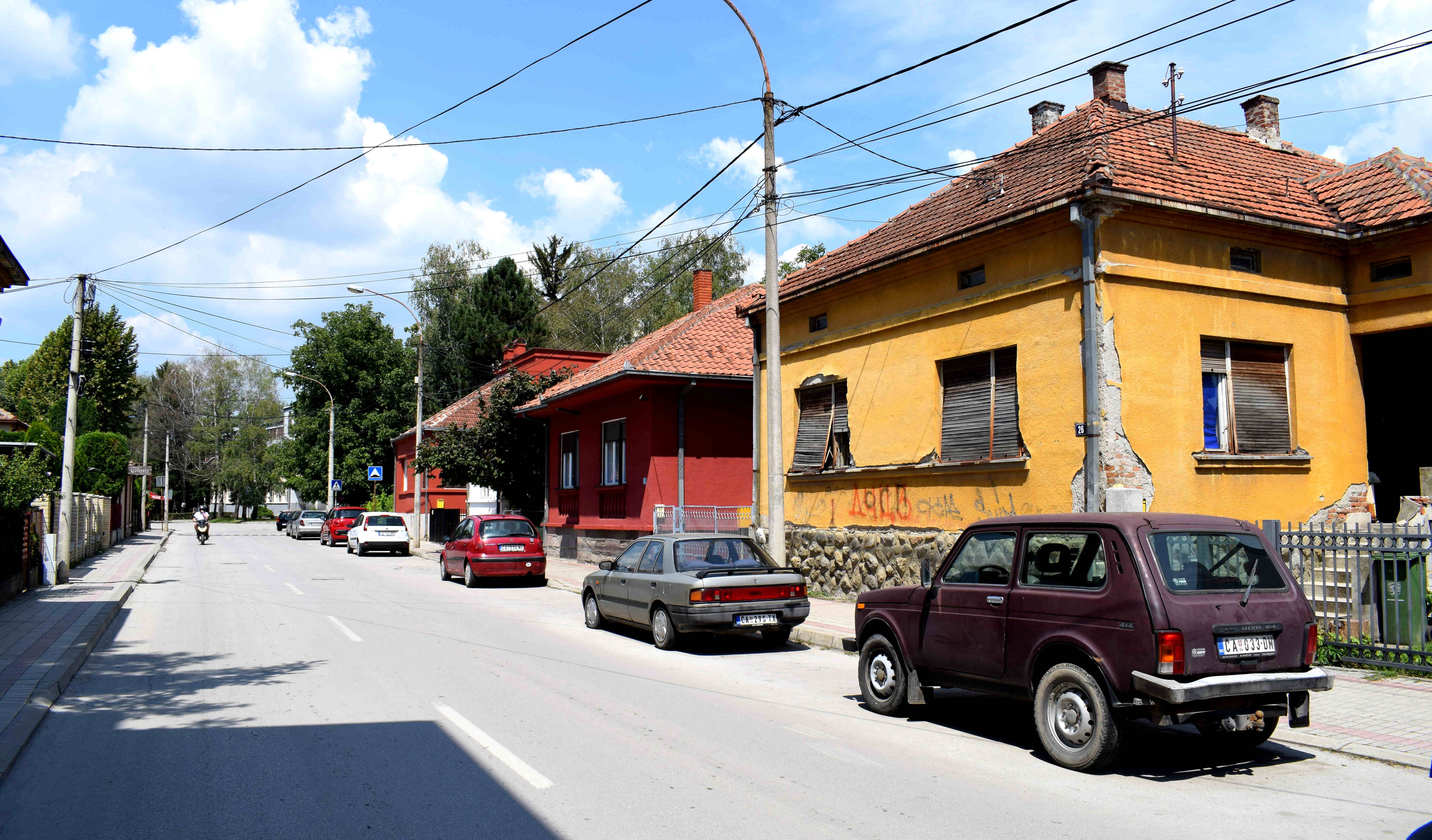
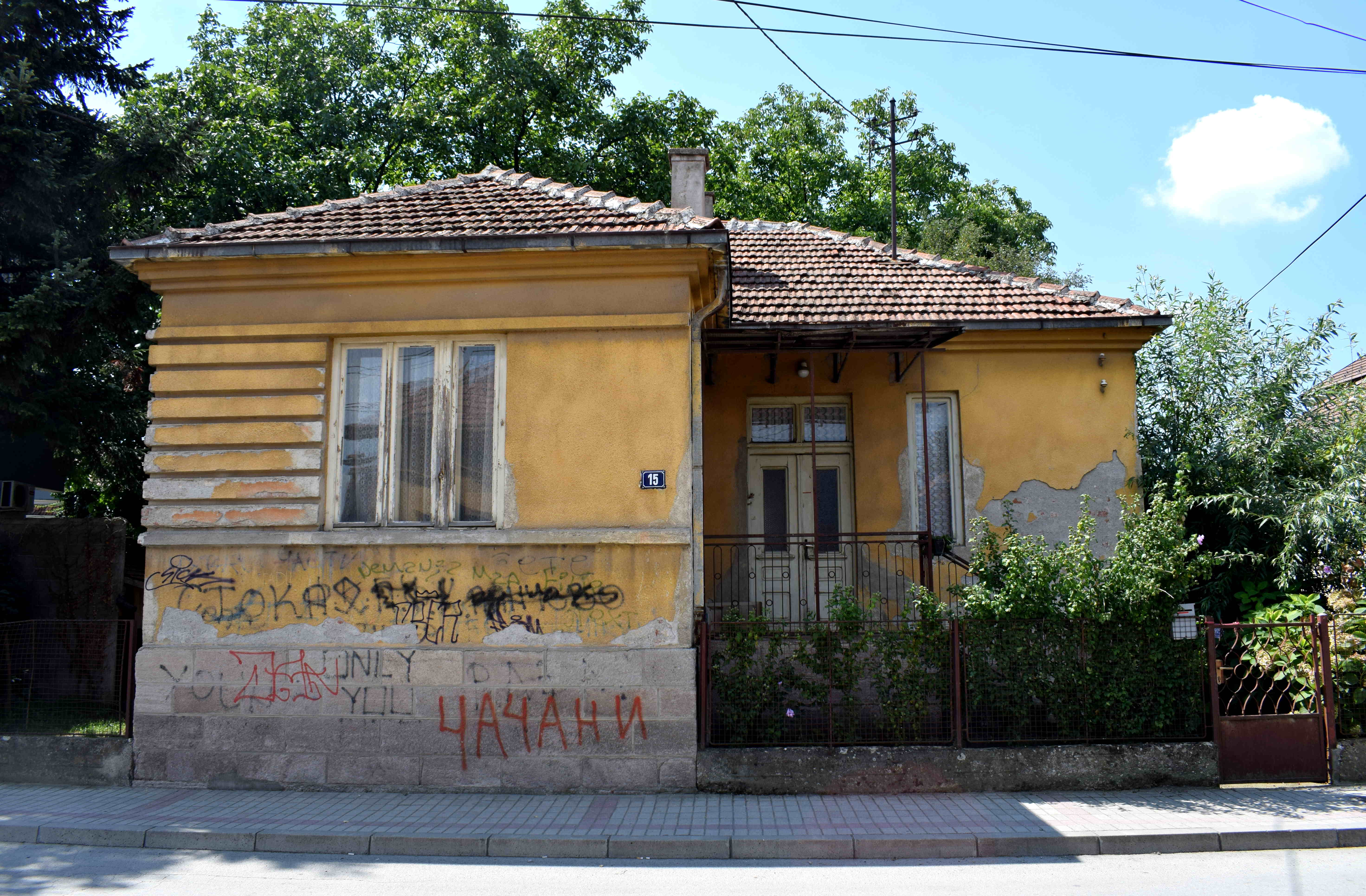 The Ibar River is a short fifteen minute walk from the city center. It passes through an area with lots of trees and greenery.
The Ibar River is a short fifteen minute walk from the city center. It passes through an area with lots of trees and greenery.
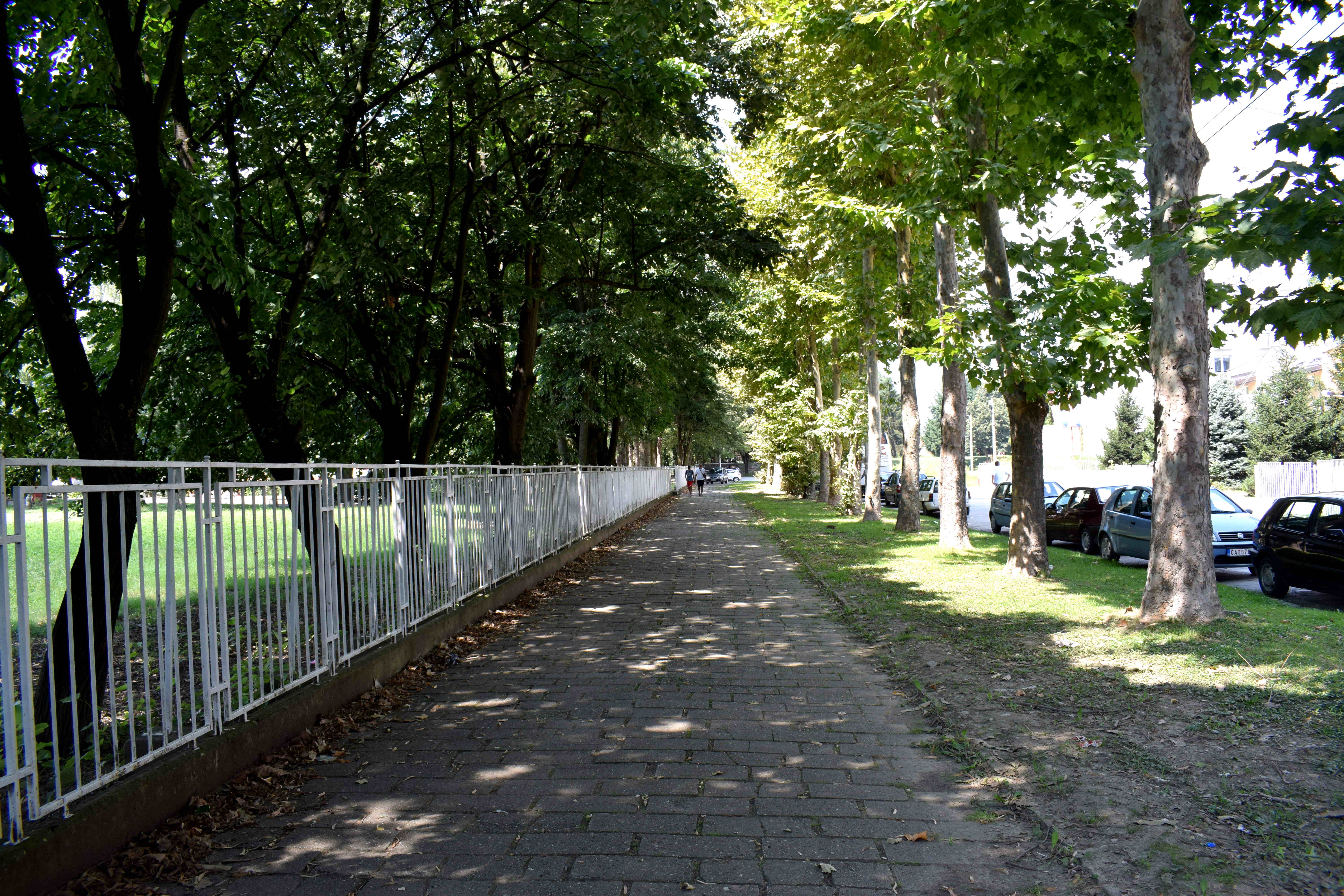
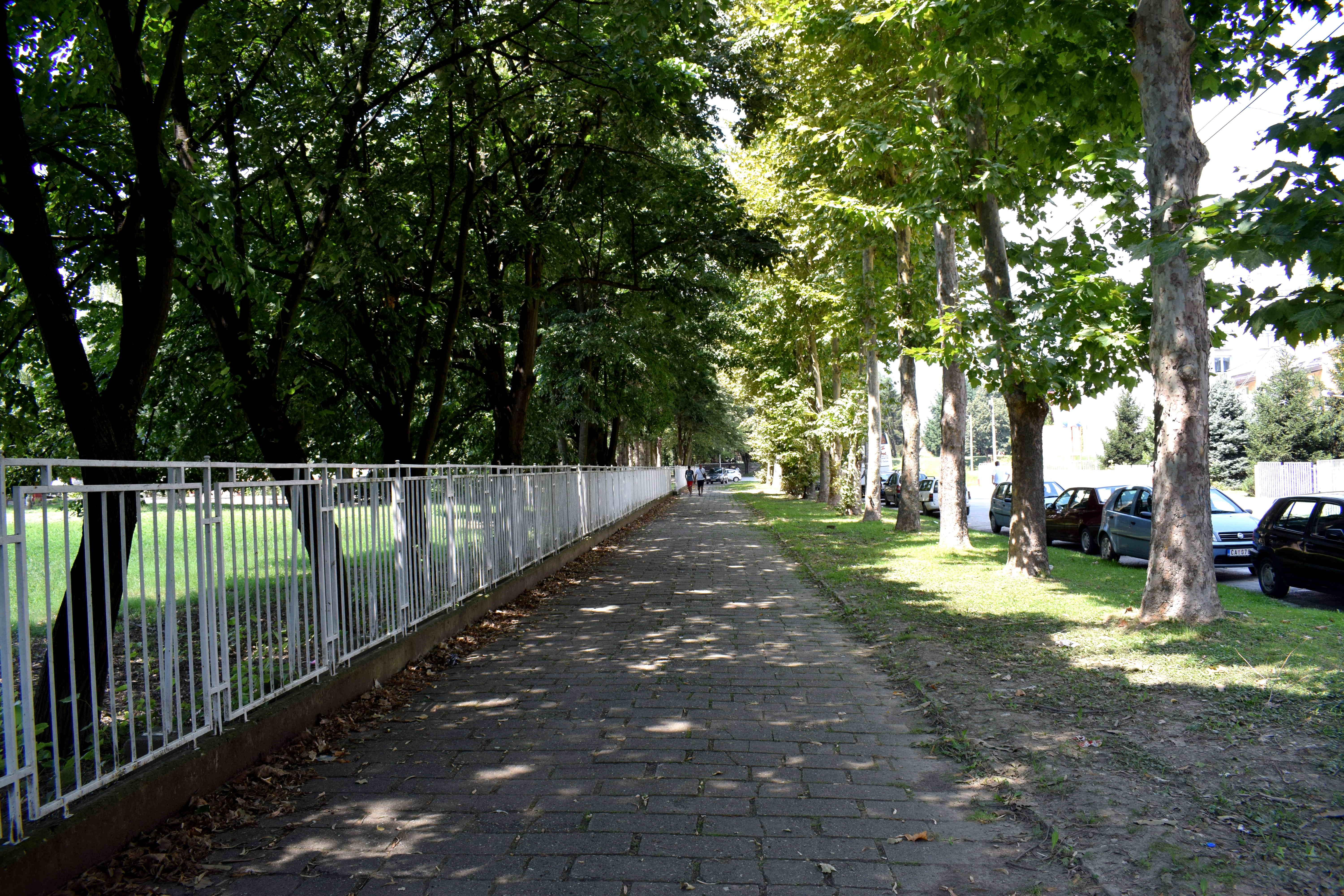 Serbia and Balkan countries are sports super houses, churning out basketball, football, tennis, volleyball and water polo players that are at the top of their leagues around the world. Many people wonder why. A major reason is that during socialist Yugoslav times, the authorities built tons of outdoor volleyball, basketball football and tennis courts and sports centers that anybody could access free of charge. This infrastructure remains to this day, and is still in use, despite sometimes being in poor conditions. When people grow up in small Balkan cities like Cacak, they grow up surrounded by kids who spend their time outside playing different sports. Nobody has to pay to use the football field or basketball court, and therefore kids and teenagers play sports growing up instead of videogames or drinking or doing drugs. When college comes, they often get scholarships and head out west to universities in the United States or Europe to play sports. The big ones make it and go on to be the stars we know them to be today. But often times their stories all begin with that local basketball court in their neighborhood in their small city in Serbia where they played every day growing up.
Serbia and Balkan countries are sports super houses, churning out basketball, football, tennis, volleyball and water polo players that are at the top of their leagues around the world. Many people wonder why. A major reason is that during socialist Yugoslav times, the authorities built tons of outdoor volleyball, basketball football and tennis courts and sports centers that anybody could access free of charge. This infrastructure remains to this day, and is still in use, despite sometimes being in poor conditions. When people grow up in small Balkan cities like Cacak, they grow up surrounded by kids who spend their time outside playing different sports. Nobody has to pay to use the football field or basketball court, and therefore kids and teenagers play sports growing up instead of videogames or drinking or doing drugs. When college comes, they often get scholarships and head out west to universities in the United States or Europe to play sports. The big ones make it and go on to be the stars we know them to be today. But often times their stories all begin with that local basketball court in their neighborhood in their small city in Serbia where they played every day growing up.
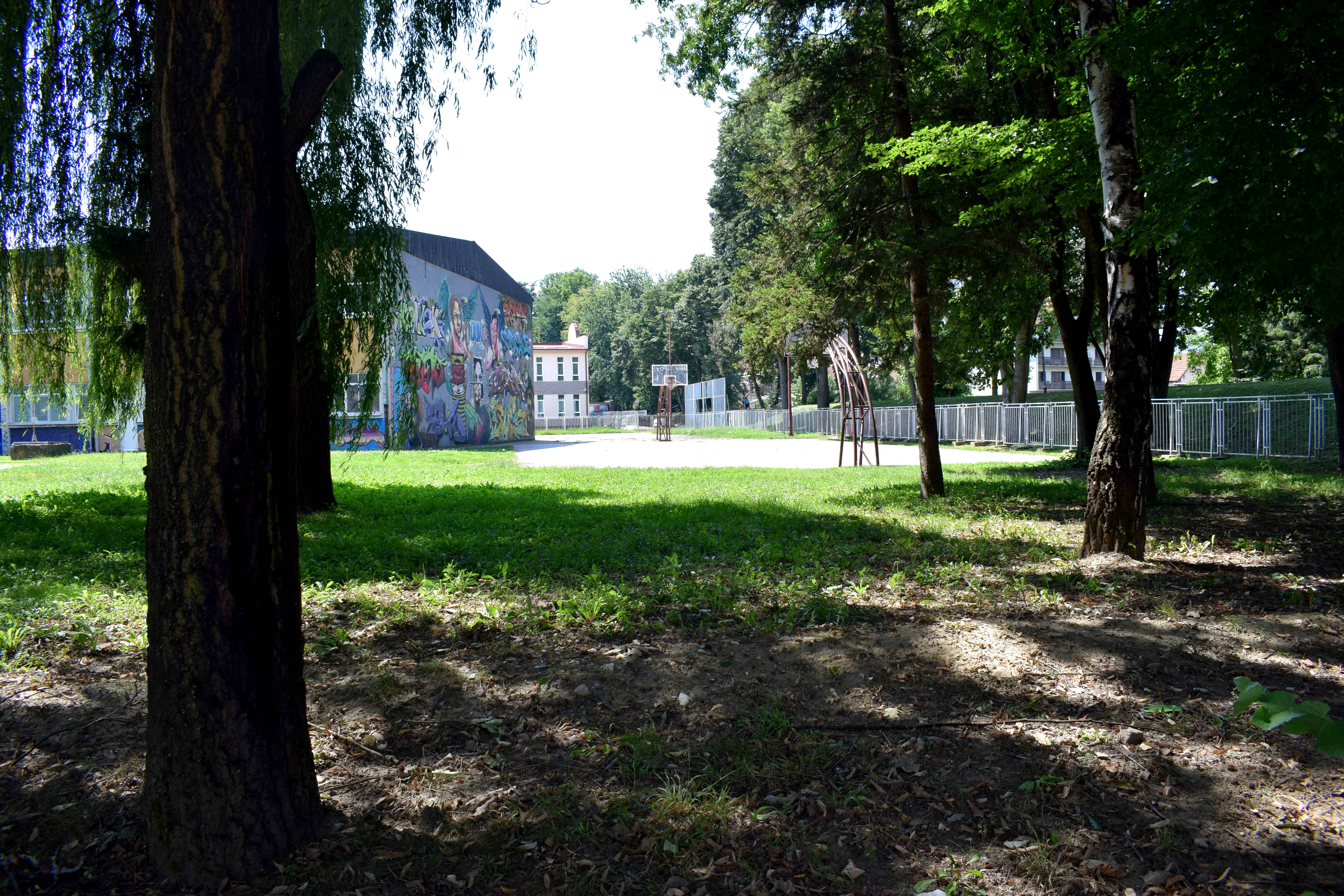 A bike path near the river.
A bike path near the river.
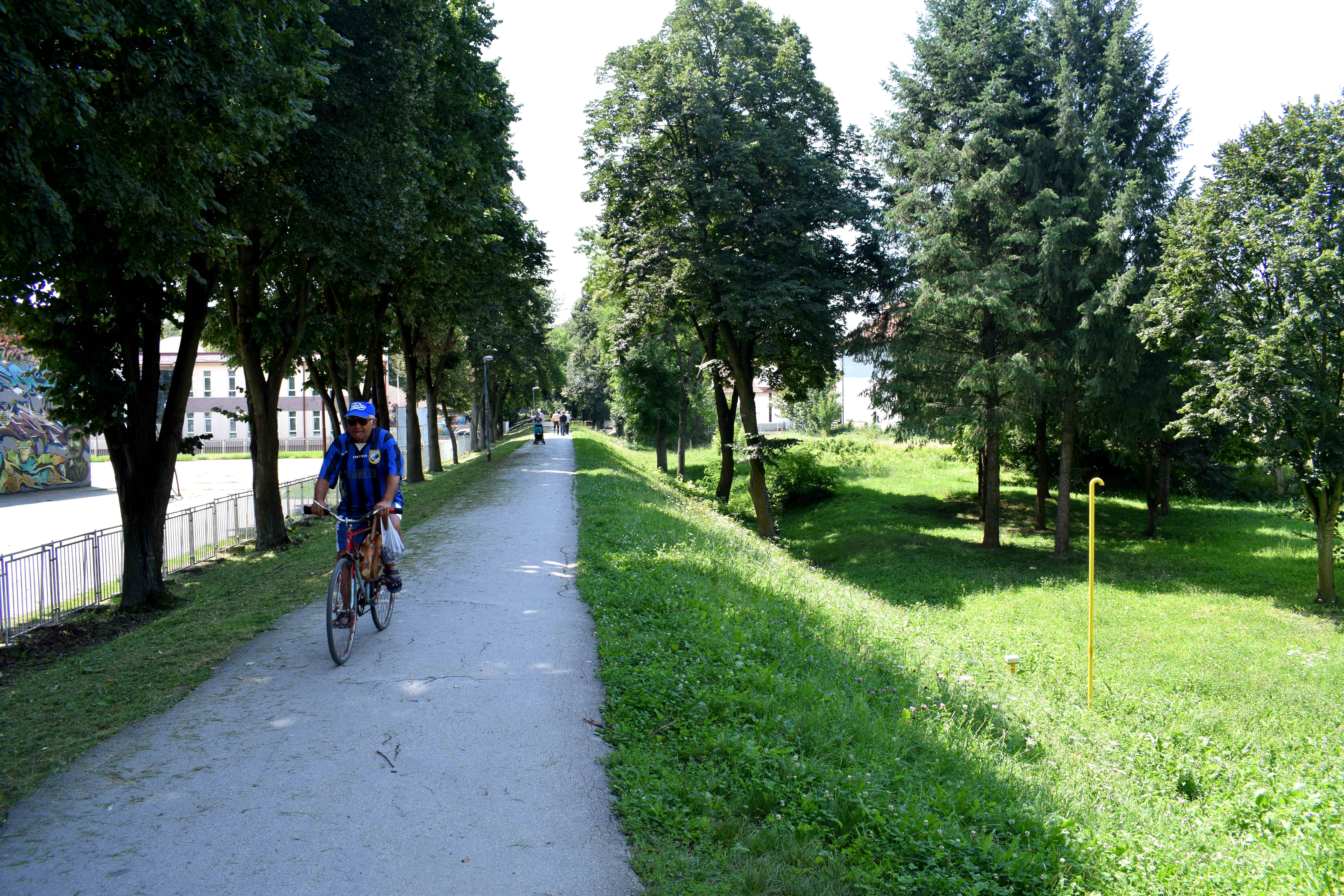 Around the river.
Around the river.
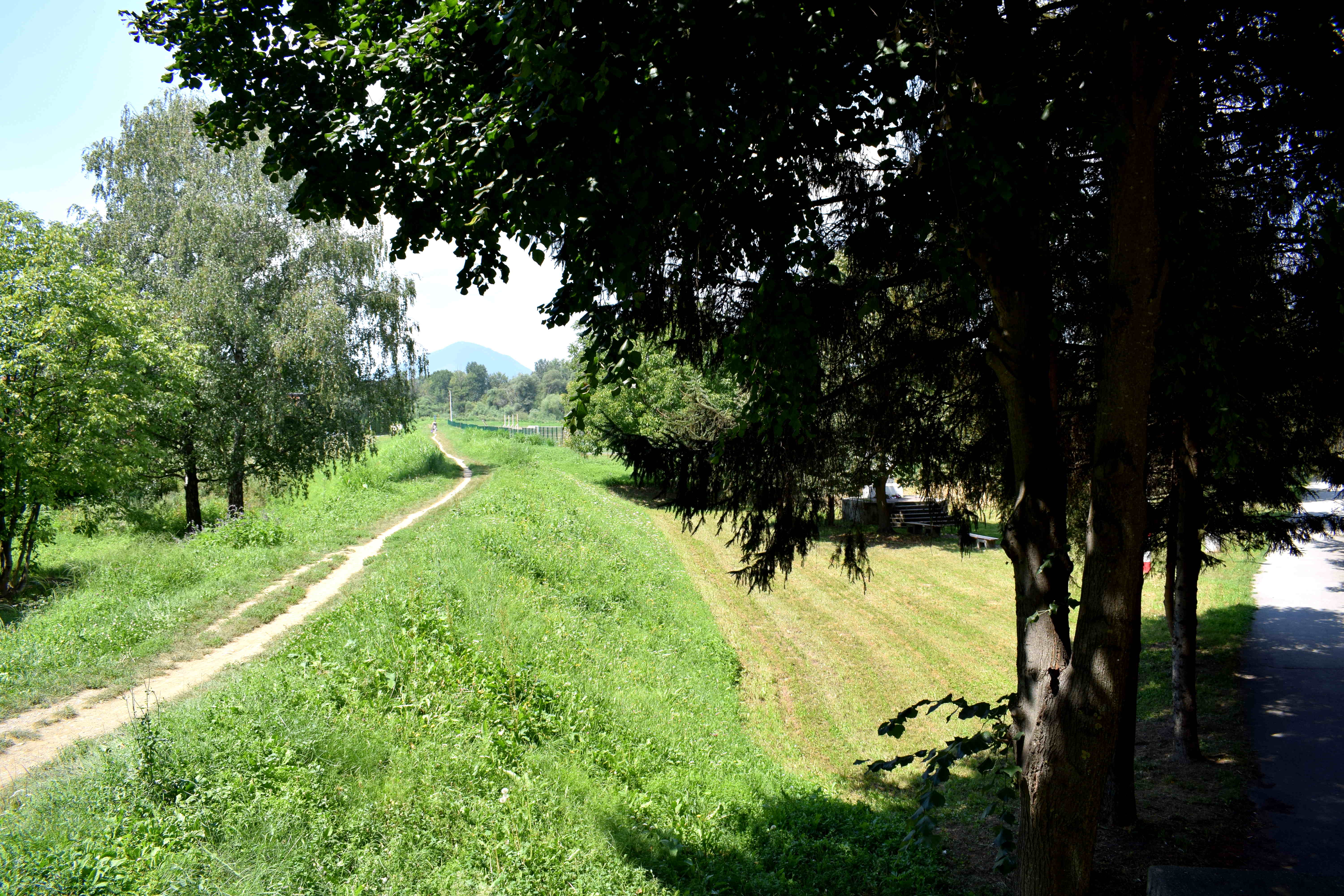 Cacak’s soccer stadium.
Cacak’s soccer stadium.
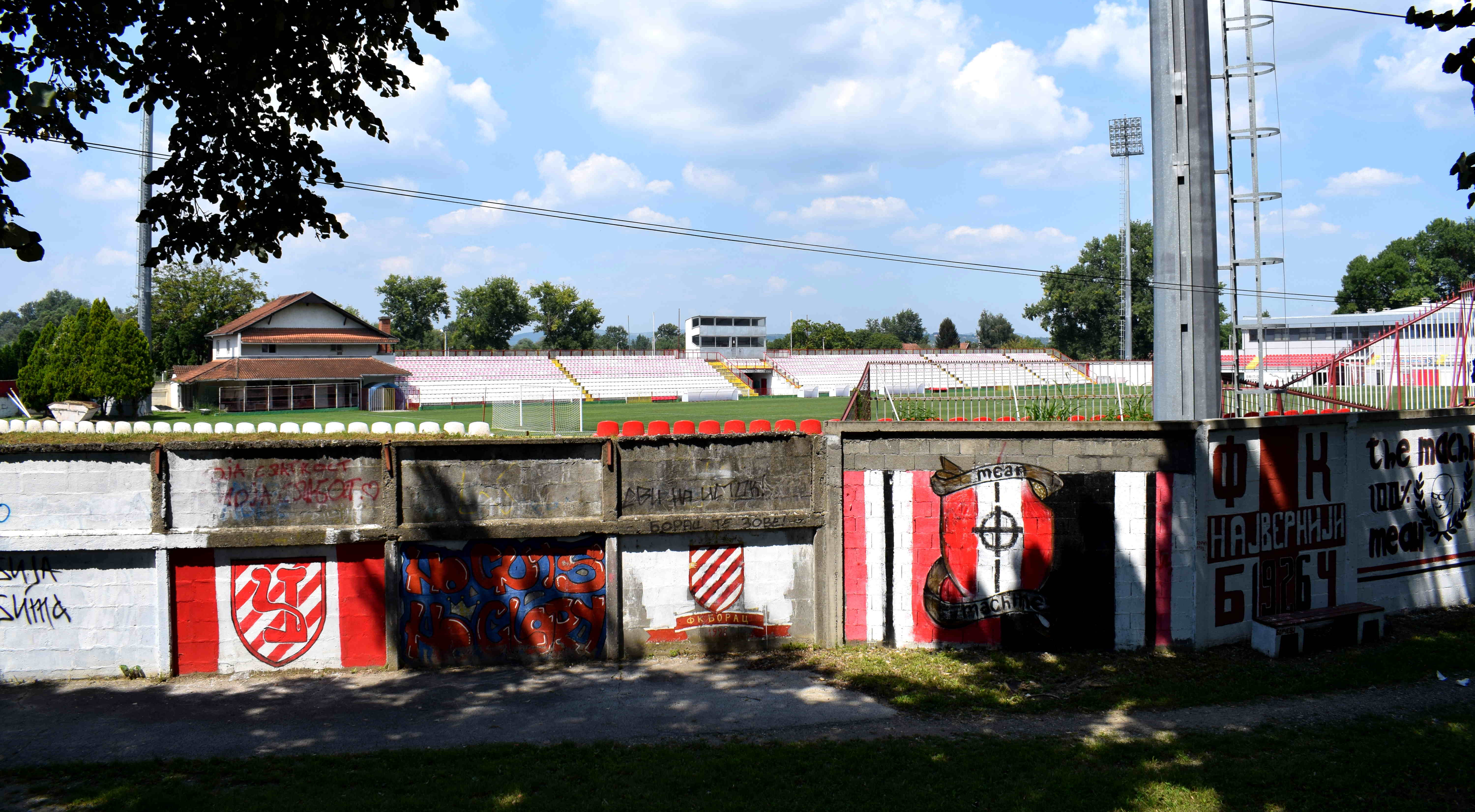 The bike path winding between the trees and through the woods around the Ibar River.
The bike path winding between the trees and through the woods around the Ibar River.
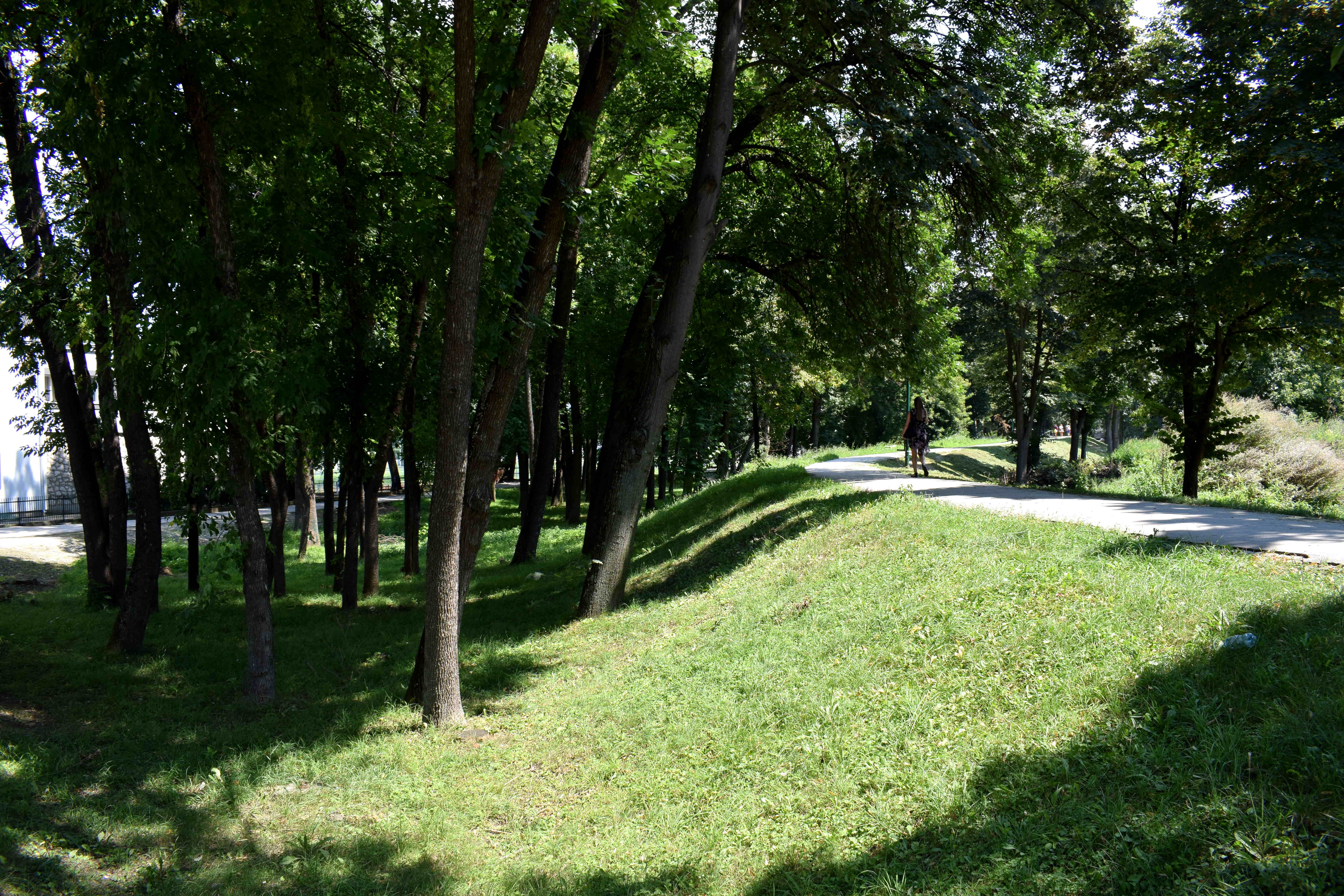 An area to play beach volleyball.
An area to play beach volleyball.
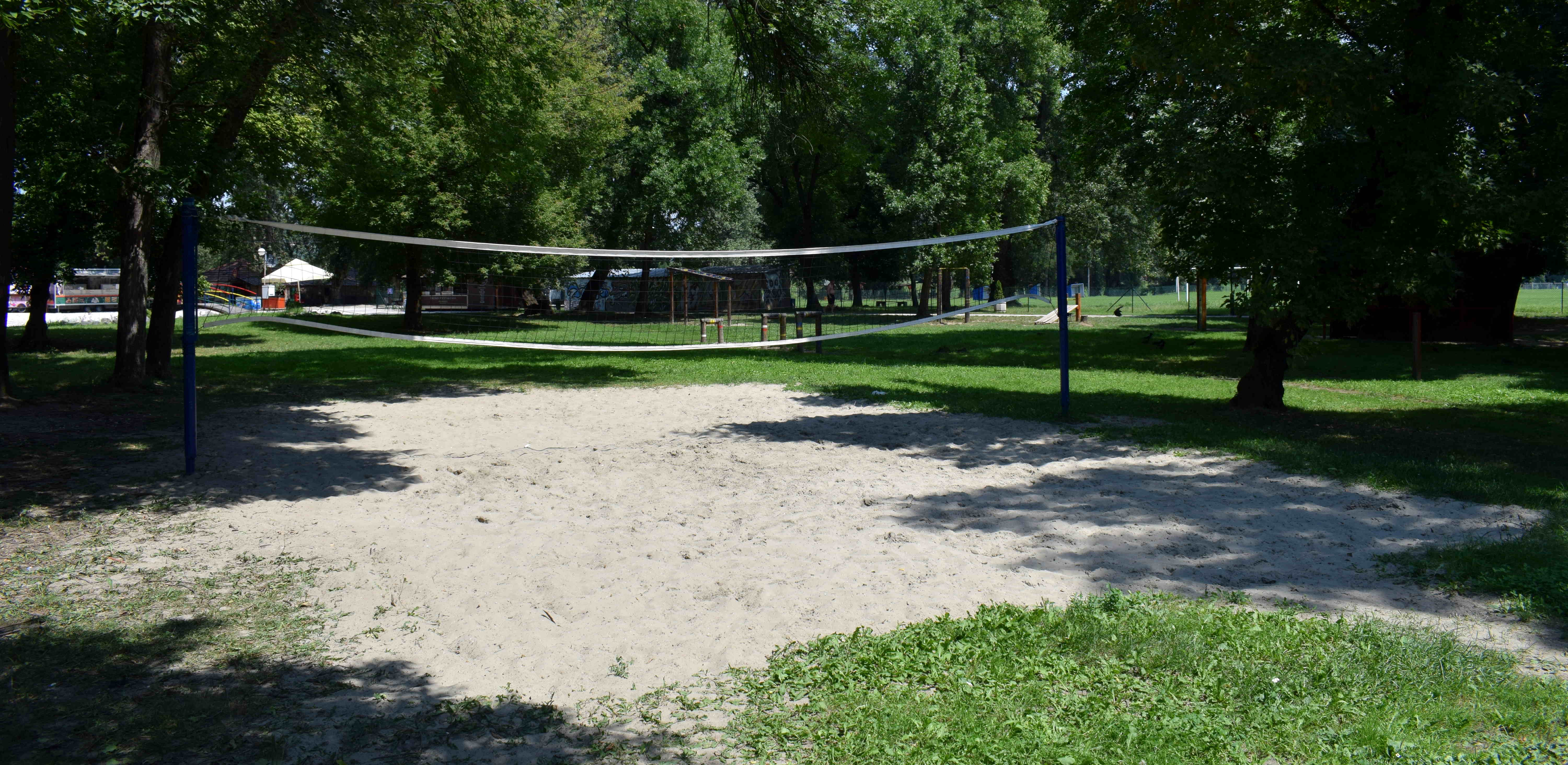 The Ibar River with a nice café set up nearby.
The Ibar River with a nice café set up nearby.
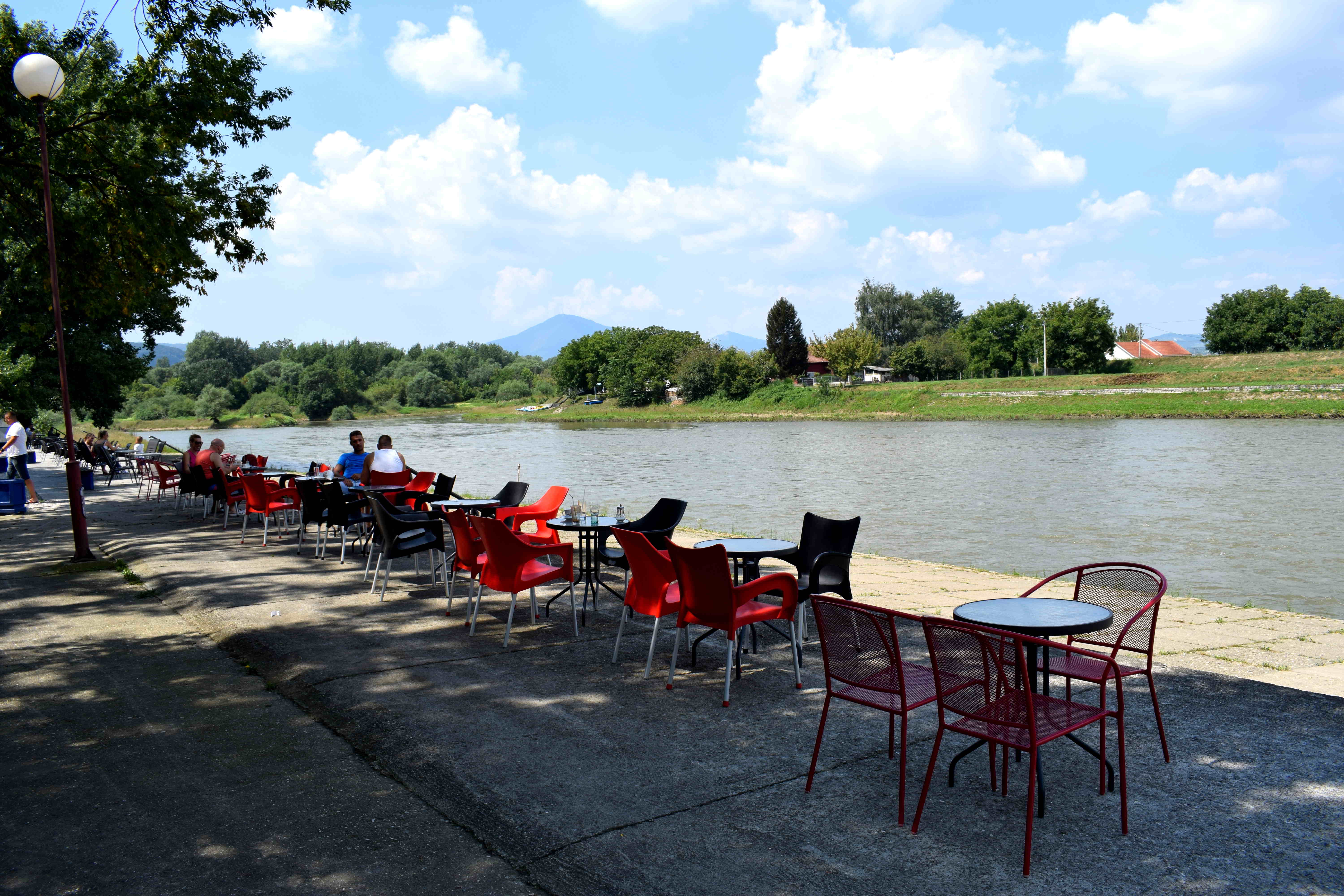 Some locals sunbathing by the river.
Some locals sunbathing by the river.
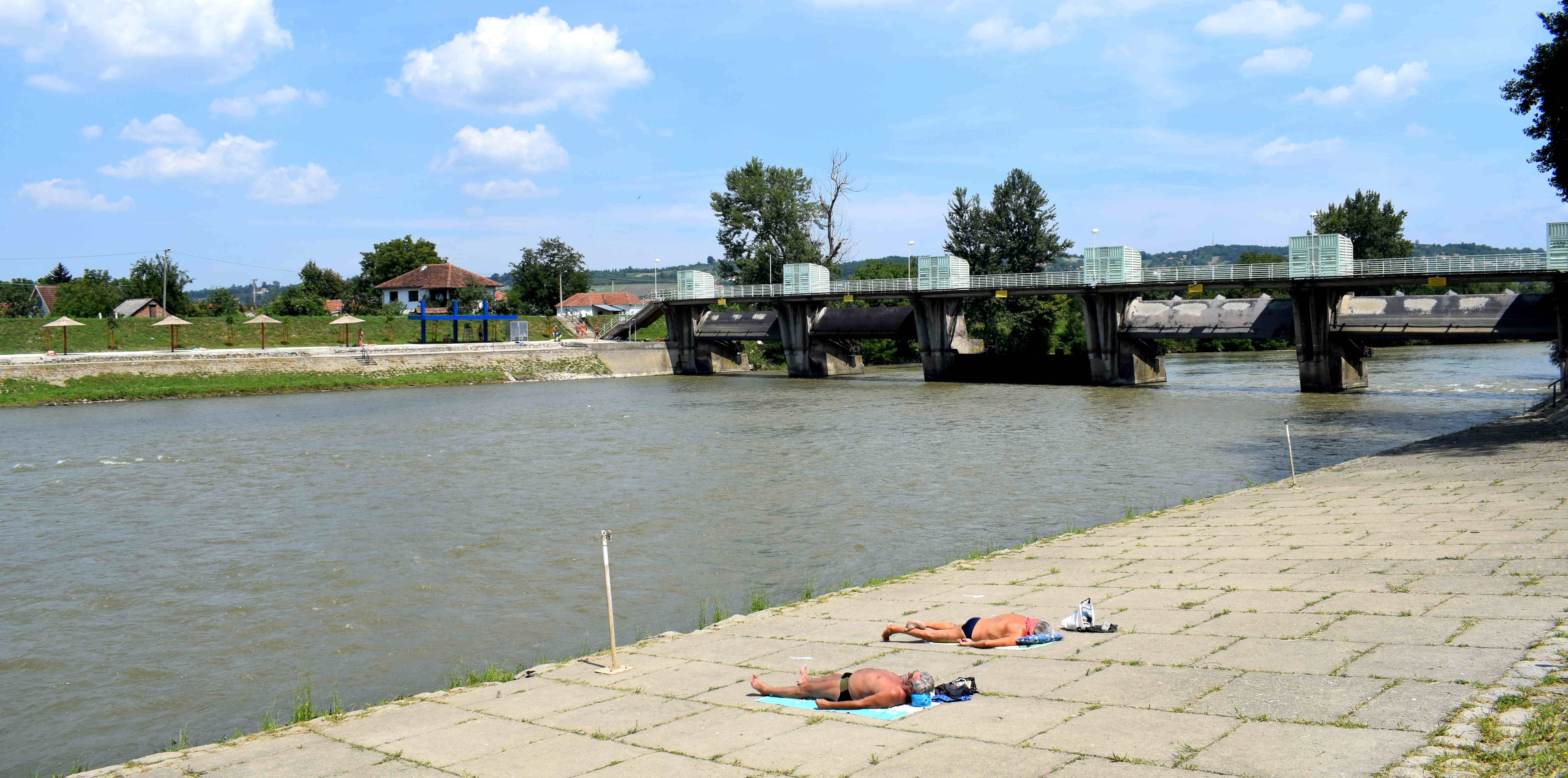 I love Cacak.
I love Cacak.
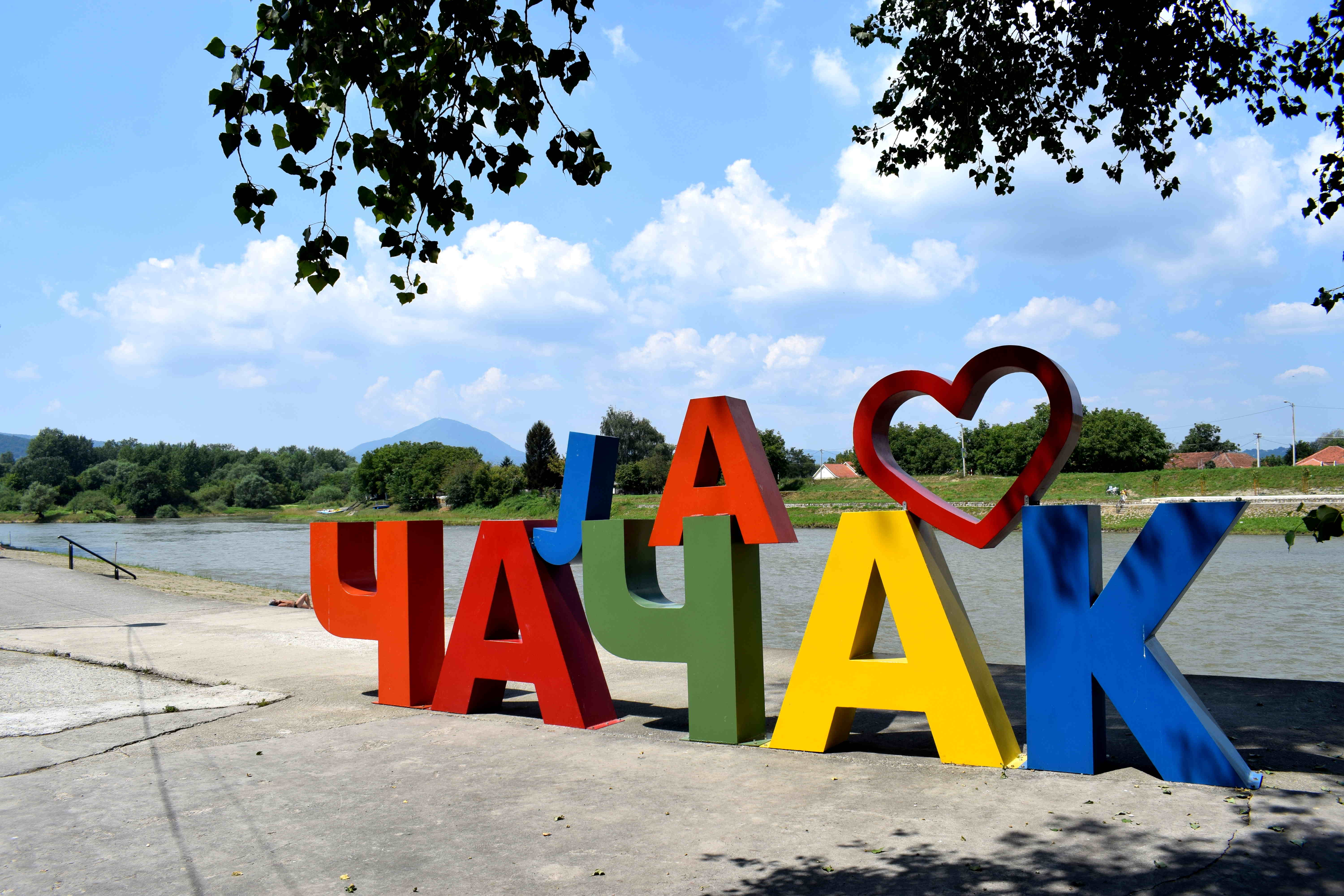 Sitting by the Ibar River.
Sitting by the Ibar River.
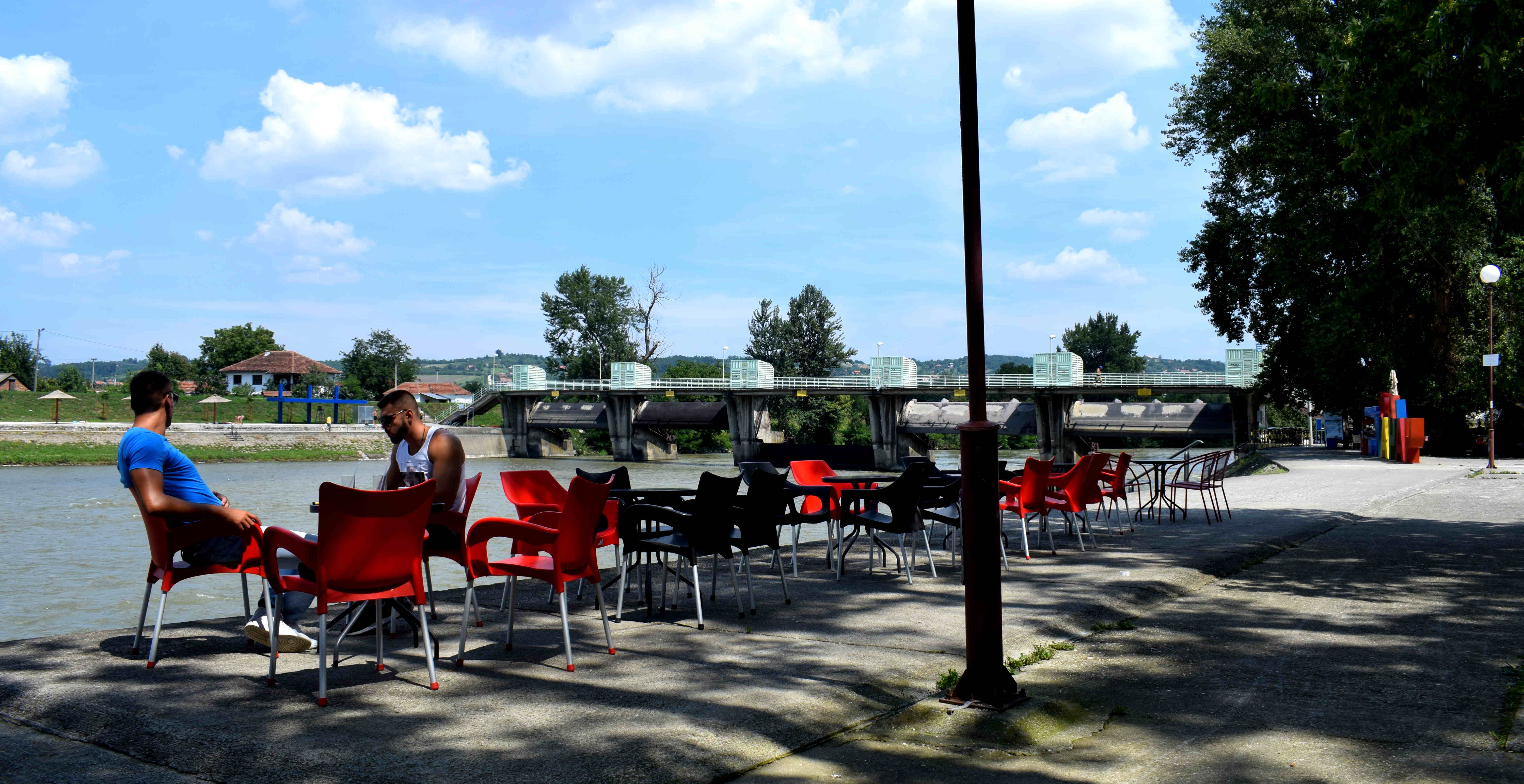 In the evening the center of Cacak fills up with parents and their kids walking around. Cacak does not have a university, so there are few students between the ages of 18-22 in the city. They often go off to study in Belgrade or other closer universities in Nis or Kragujevac. As a result, most of the people in Cacak are families with their kids or grandparents.
In the evening the center of Cacak fills up with parents and their kids walking around. Cacak does not have a university, so there are few students between the ages of 18-22 in the city. They often go off to study in Belgrade or other closer universities in Nis or Kragujevac. As a result, most of the people in Cacak are families with their kids or grandparents.
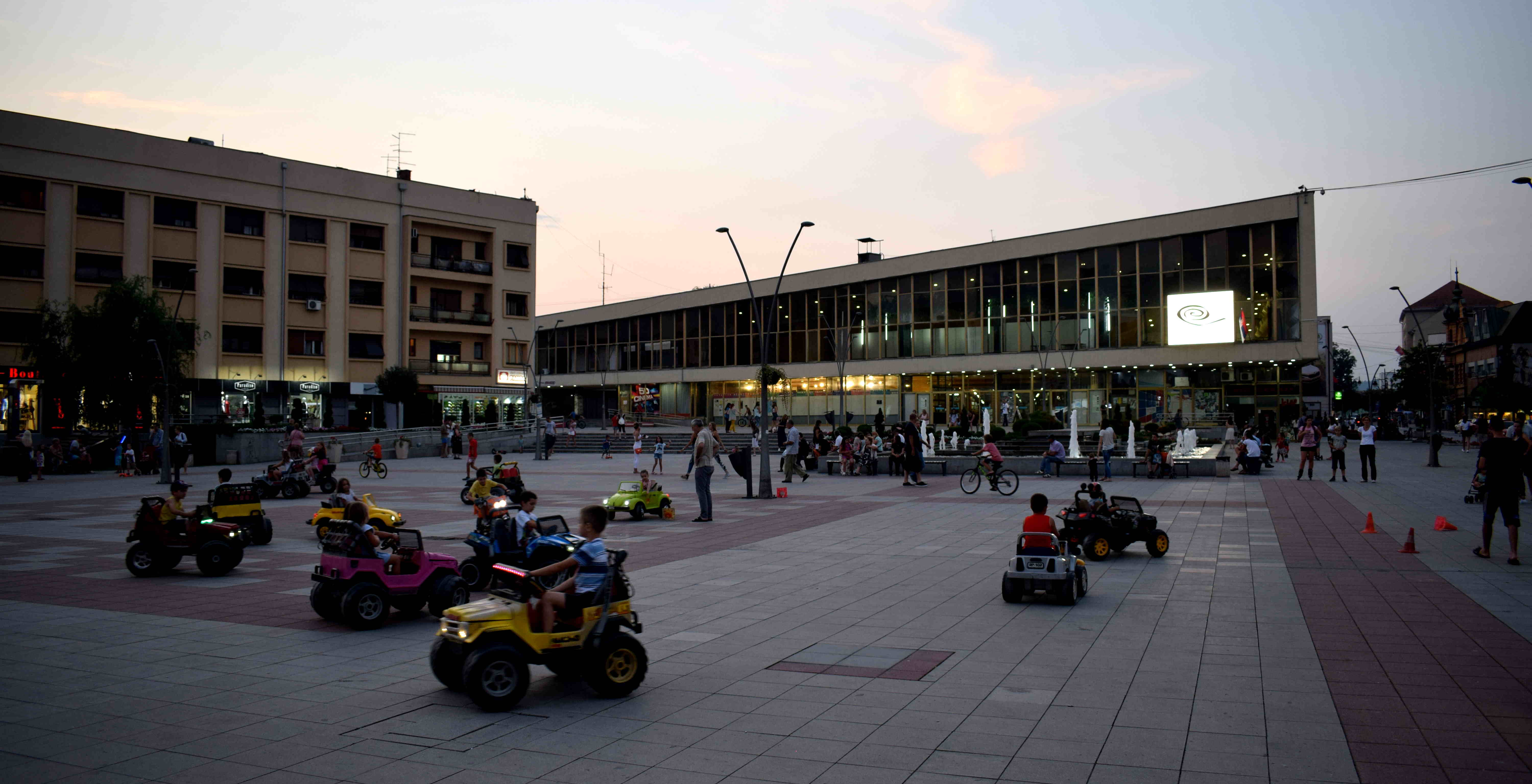 Cacak’s pedestrian street in the evening.
Cacak’s pedestrian street in the evening.
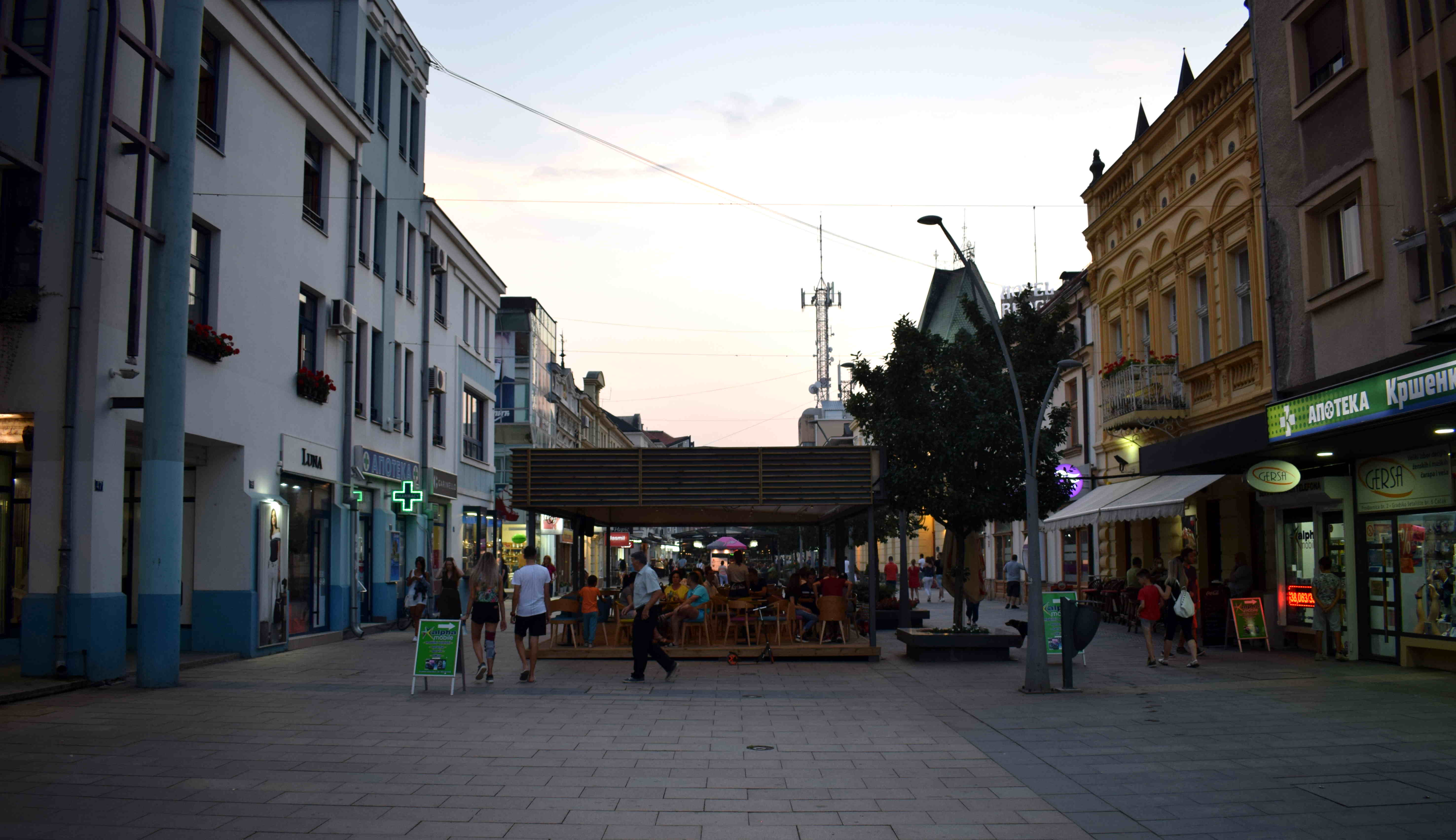 A really beautiful old building.
A really beautiful old building.
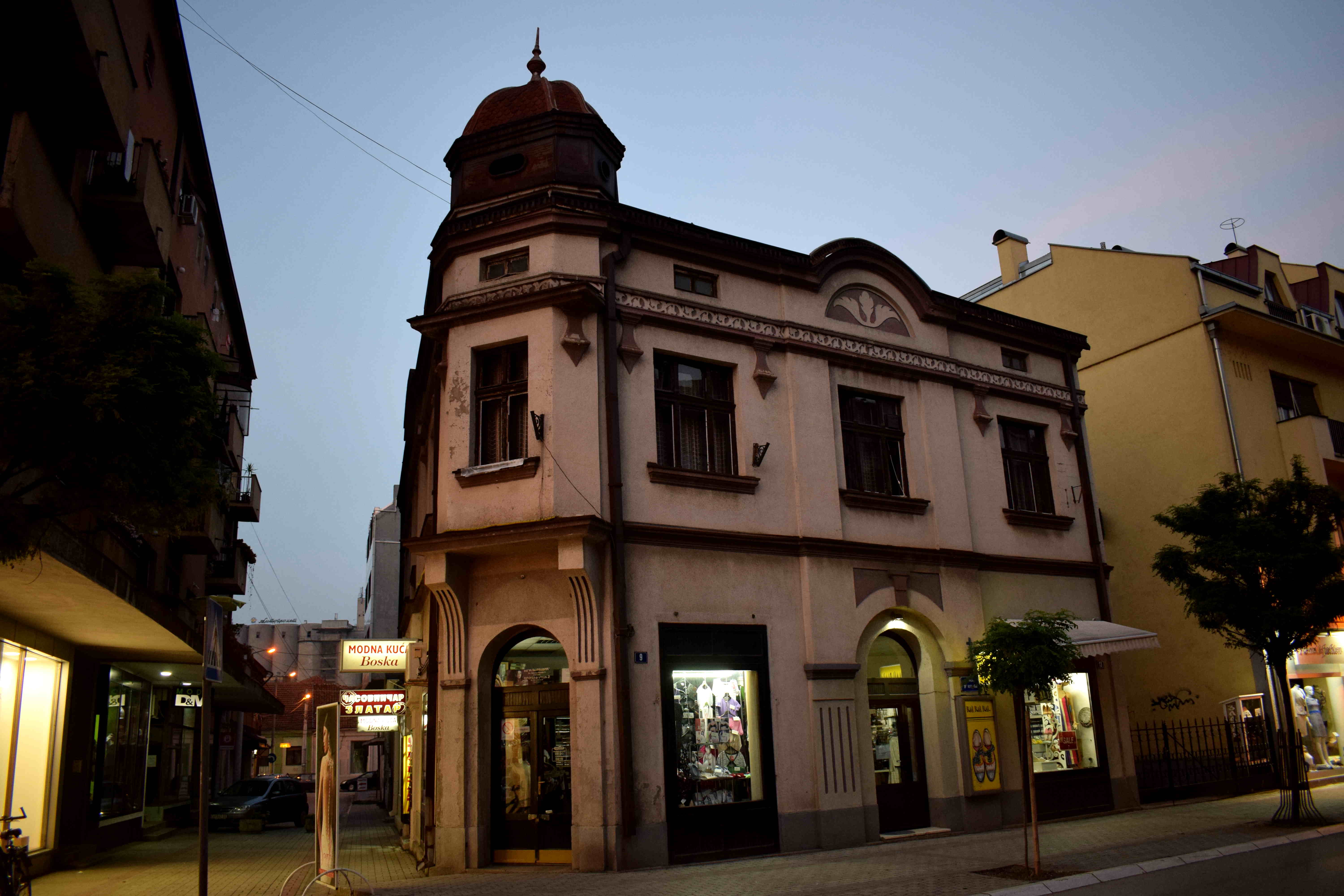 The center of Cacak in the evening.
The center of Cacak in the evening.
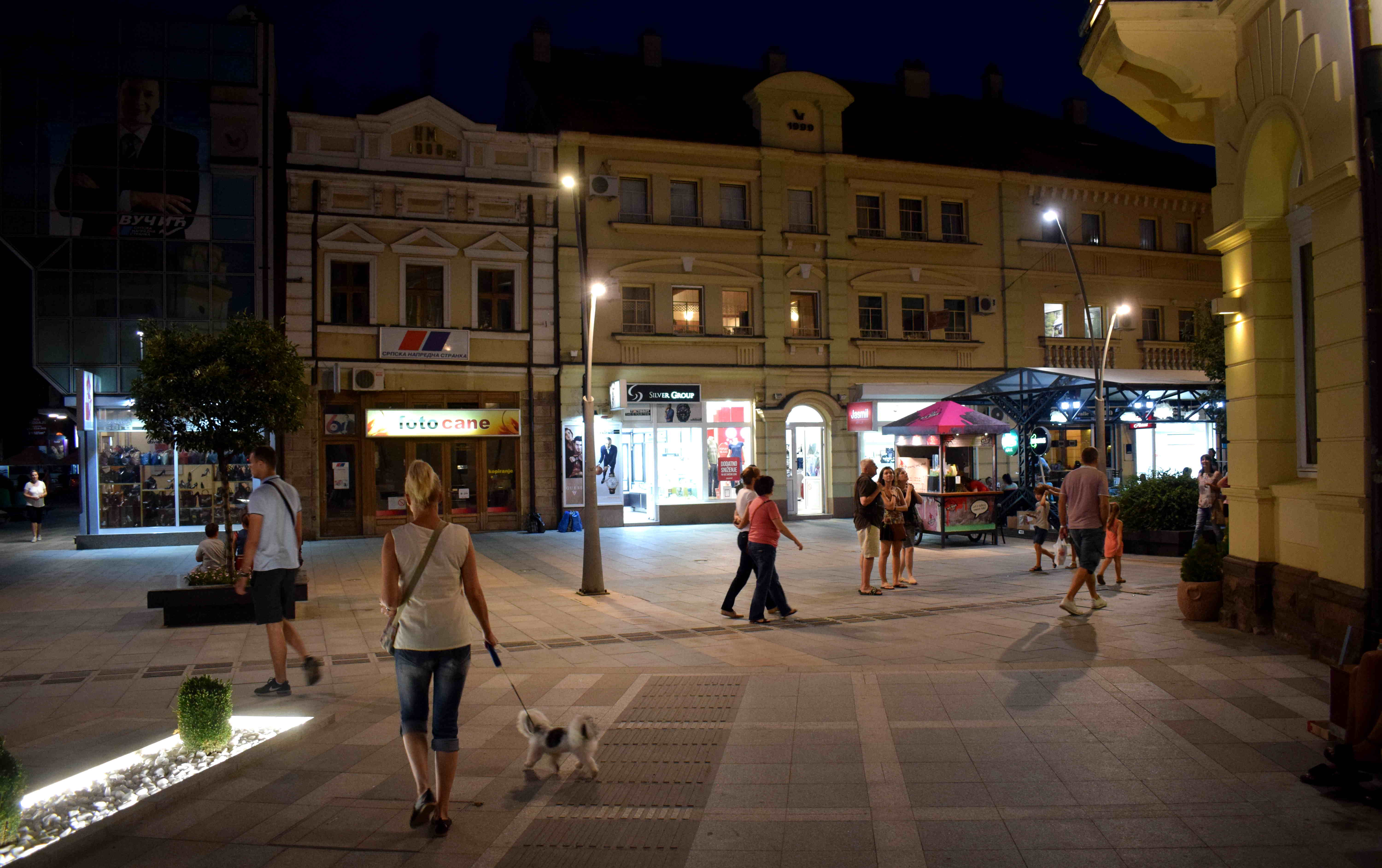 Cacak shops.
Cacak shops.
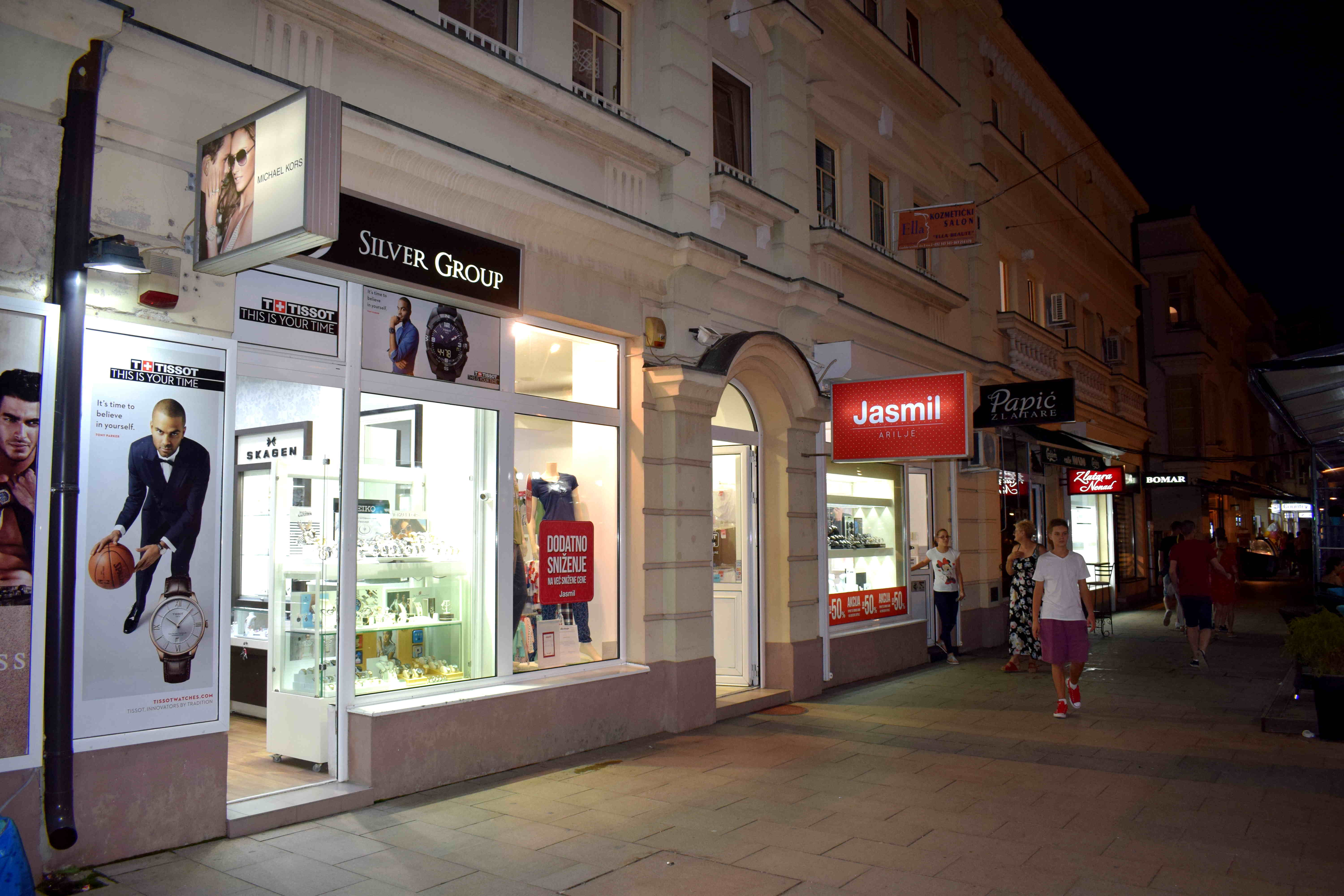 The cafes in the center fill up in the evening with people drinking coffee, ordering food and performing the standard Balkan ritual of chatting with friends in cafes for hours and hours. Here the city feels alive, vibrant and exciting. Compare what an evening looks like in a typical small city in the United States where the centers, if they even have any, are dead quiet with only cars driving by, with an evening in a city like this.
The cafes in the center fill up in the evening with people drinking coffee, ordering food and performing the standard Balkan ritual of chatting with friends in cafes for hours and hours. Here the city feels alive, vibrant and exciting. Compare what an evening looks like in a typical small city in the United States where the centers, if they even have any, are dead quiet with only cars driving by, with an evening in a city like this.
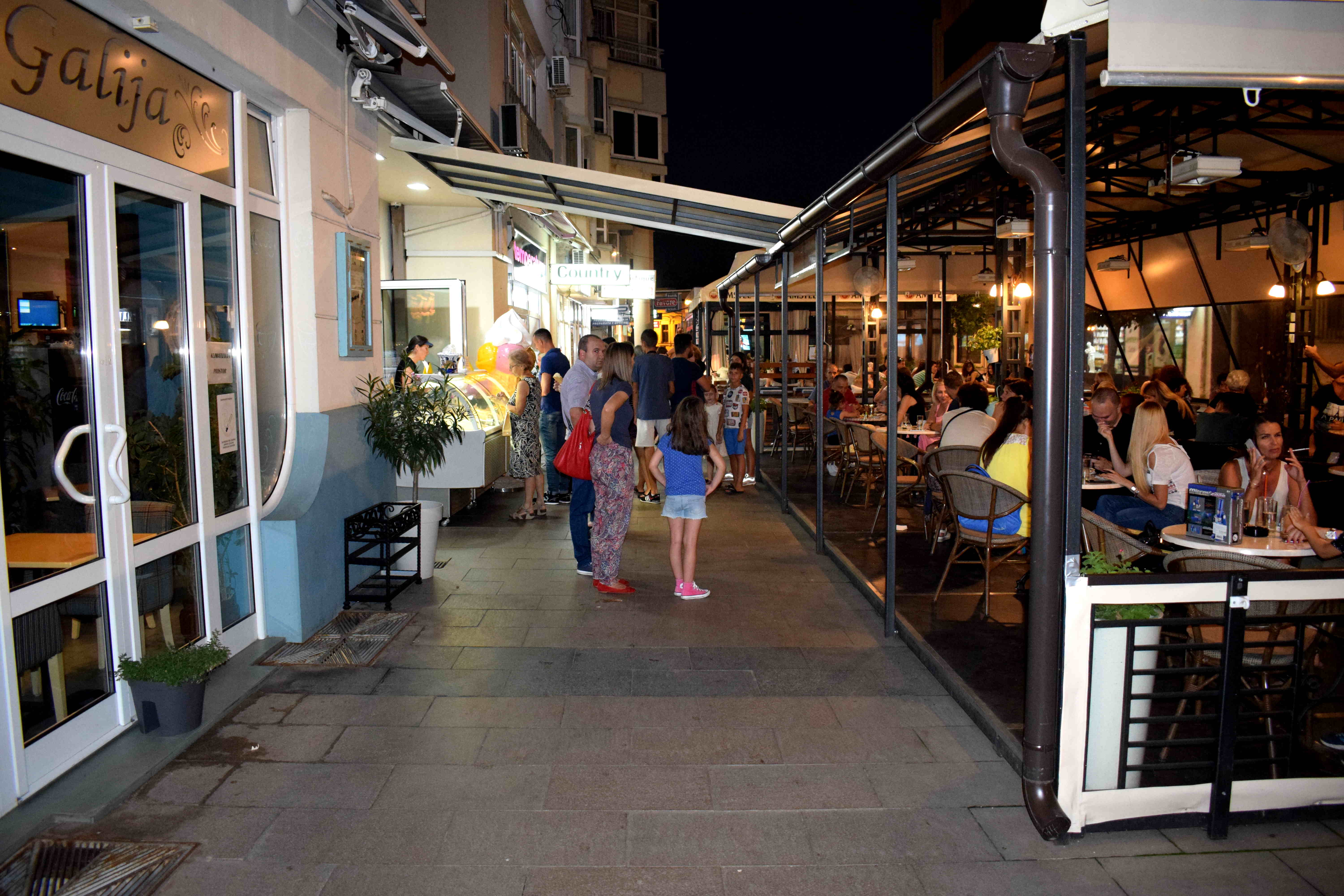 It helps that the food in Cacak is some of the best you can find in the Balkans. Cheap, delicious, enormous servings of mouth-watering cuts of meat, straight off the grill, with fresh locally grown vegetables and good wine. The Balkans have some of the best food in Europe, and Cacak is no exception.
It helps that the food in Cacak is some of the best you can find in the Balkans. Cheap, delicious, enormous servings of mouth-watering cuts of meat, straight off the grill, with fresh locally grown vegetables and good wine. The Balkans have some of the best food in Europe, and Cacak is no exception.
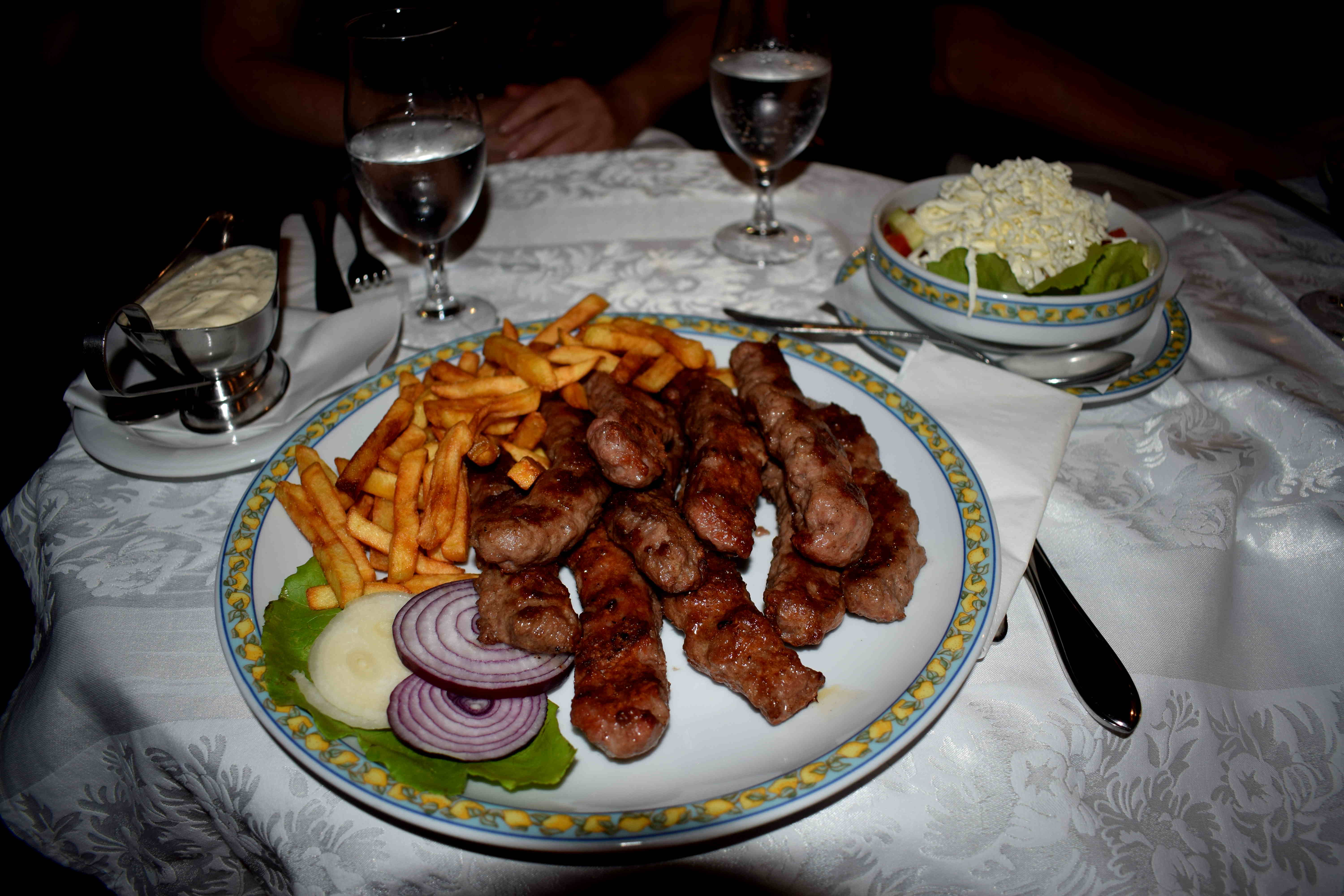
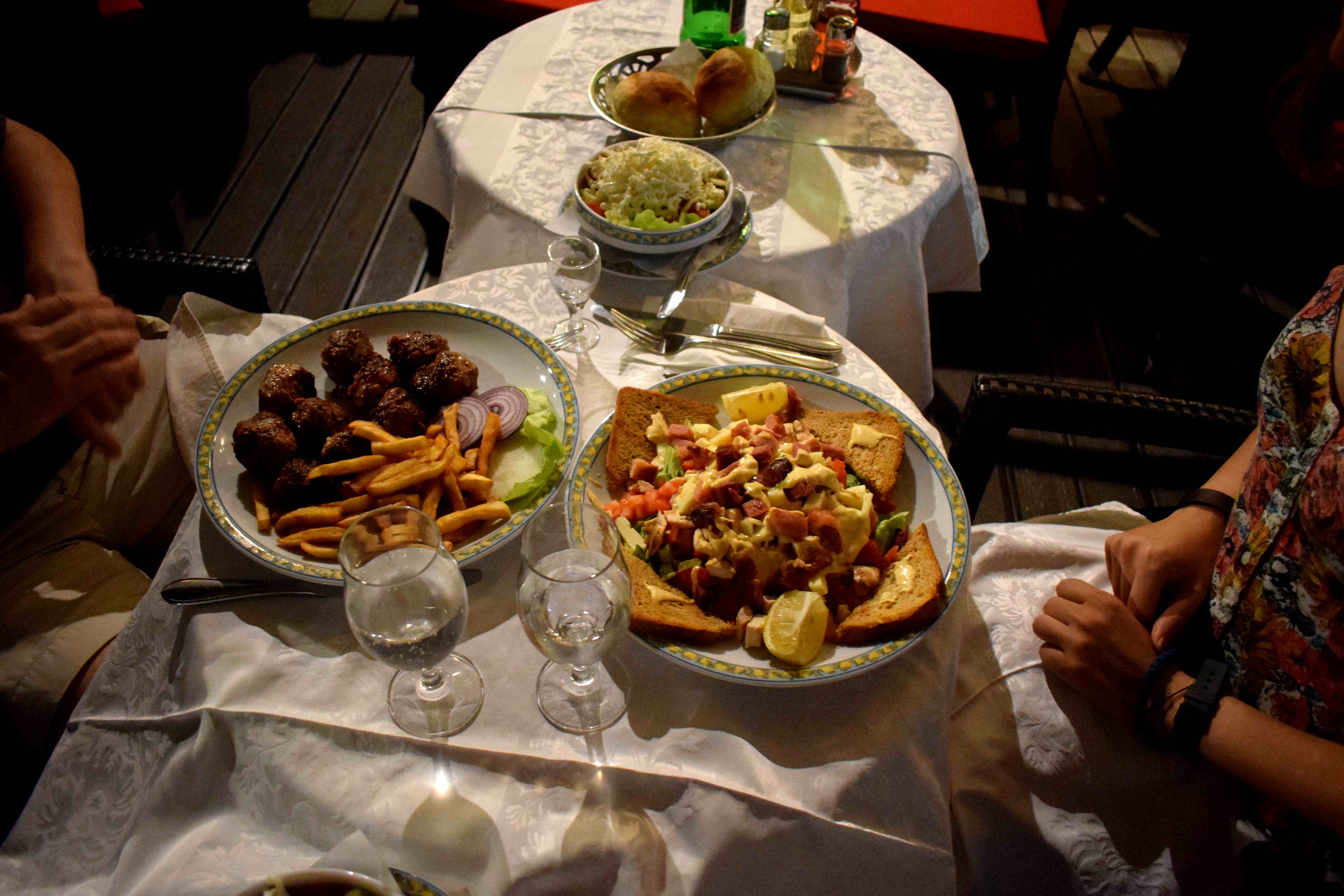
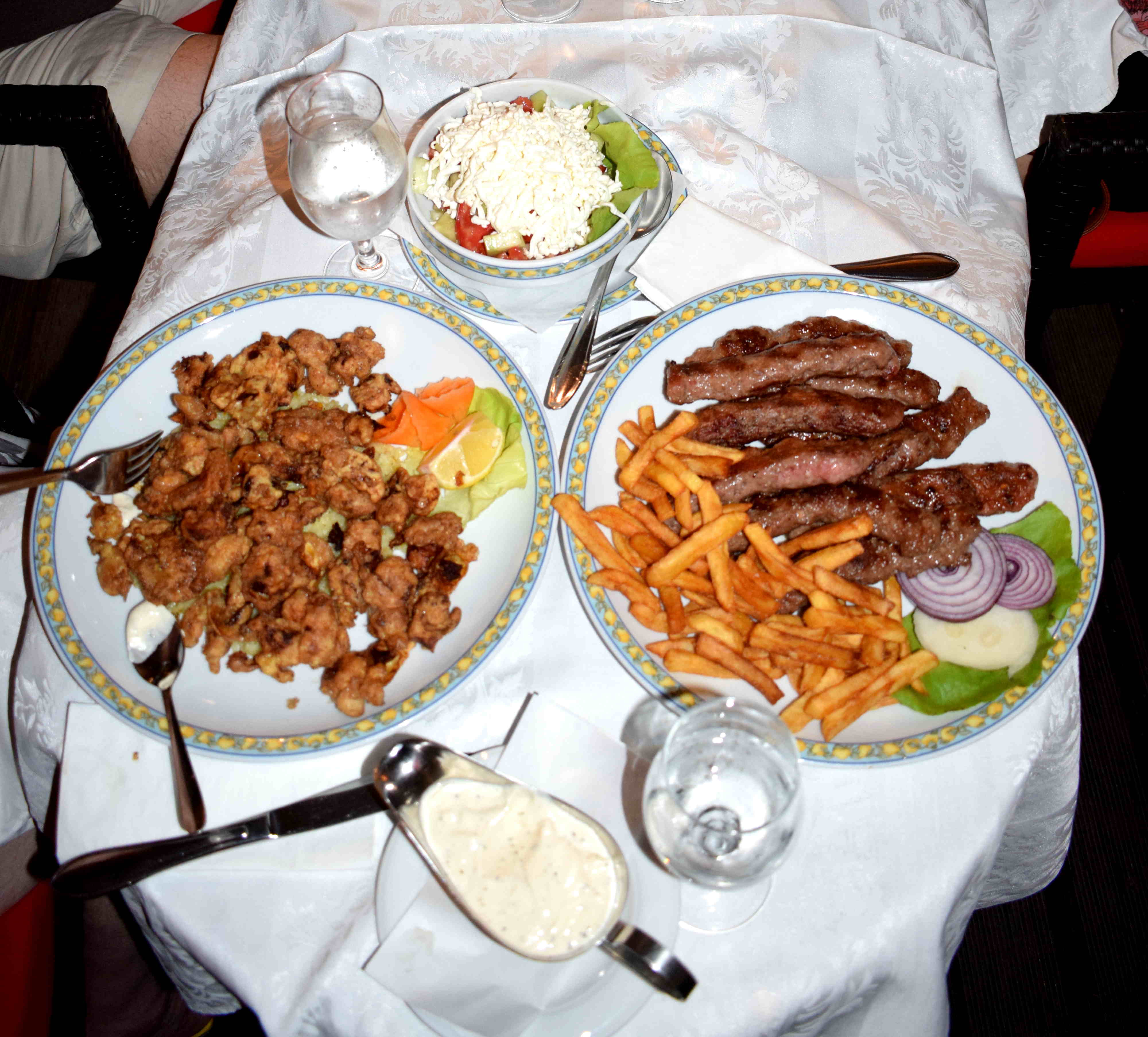 Cacak is one of Serbia’s most beautiful cities. While most people who visit Serbia focus on Belgrade and the north in Vojvodina, the heart and real beauty of Serbia lies south. Here in Serbia’s interior you can find cities woven in between mountains that were some of the first cities to be built in Serbia in the 19th century when the country first gained independence from the Ottoman Empire. That same character and liveliness which made Serbs fight to free this land and take control of these cities in the 19th century persists to this day. It is from the
Cacak is one of Serbia’s most beautiful cities. While most people who visit Serbia focus on Belgrade and the north in Vojvodina, the heart and real beauty of Serbia lies south. Here in Serbia’s interior you can find cities woven in between mountains that were some of the first cities to be built in Serbia in the 19th century when the country first gained independence from the Ottoman Empire. That same character and liveliness which made Serbs fight to free this land and take control of these cities in the 19th century persists to this day. It is from the
